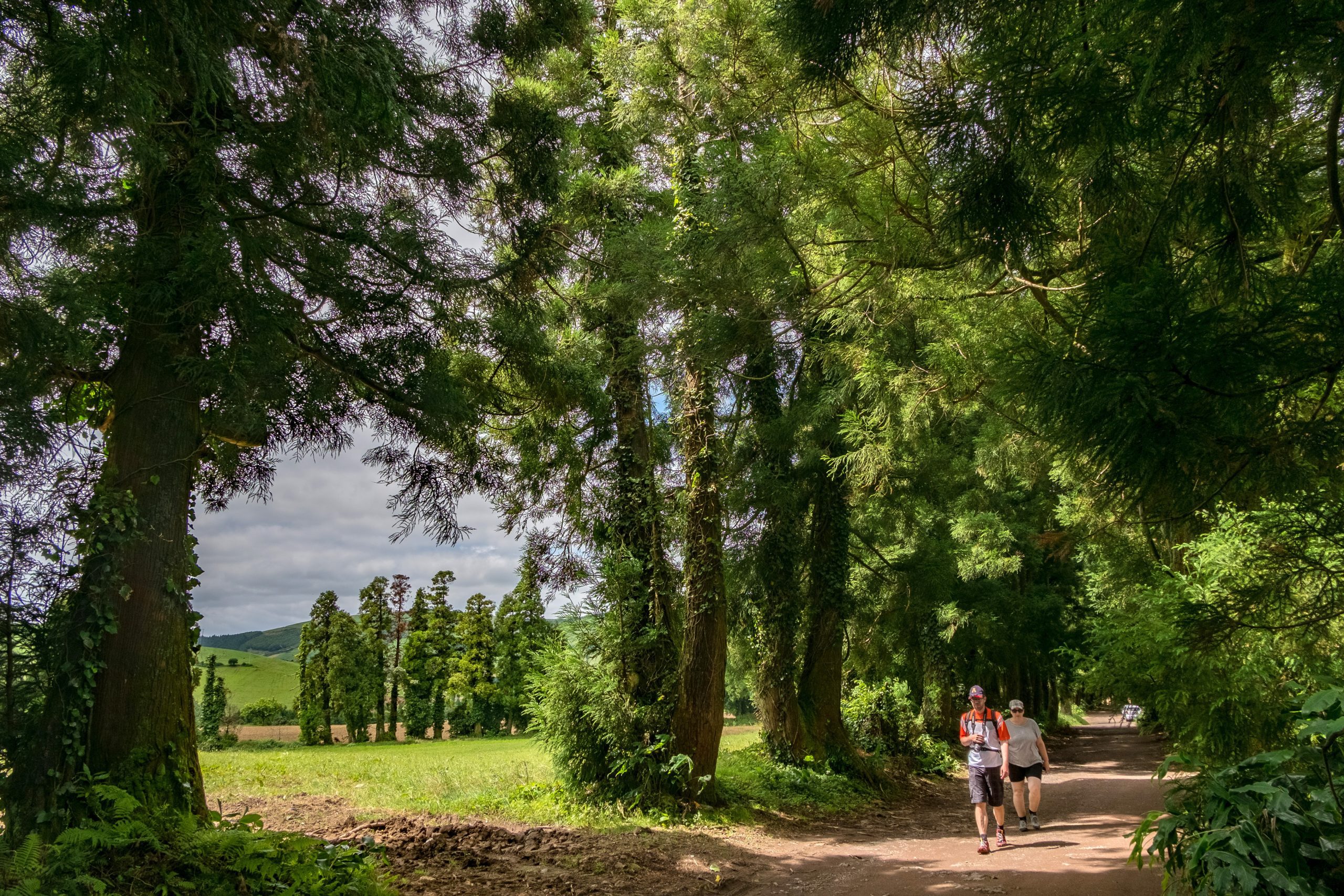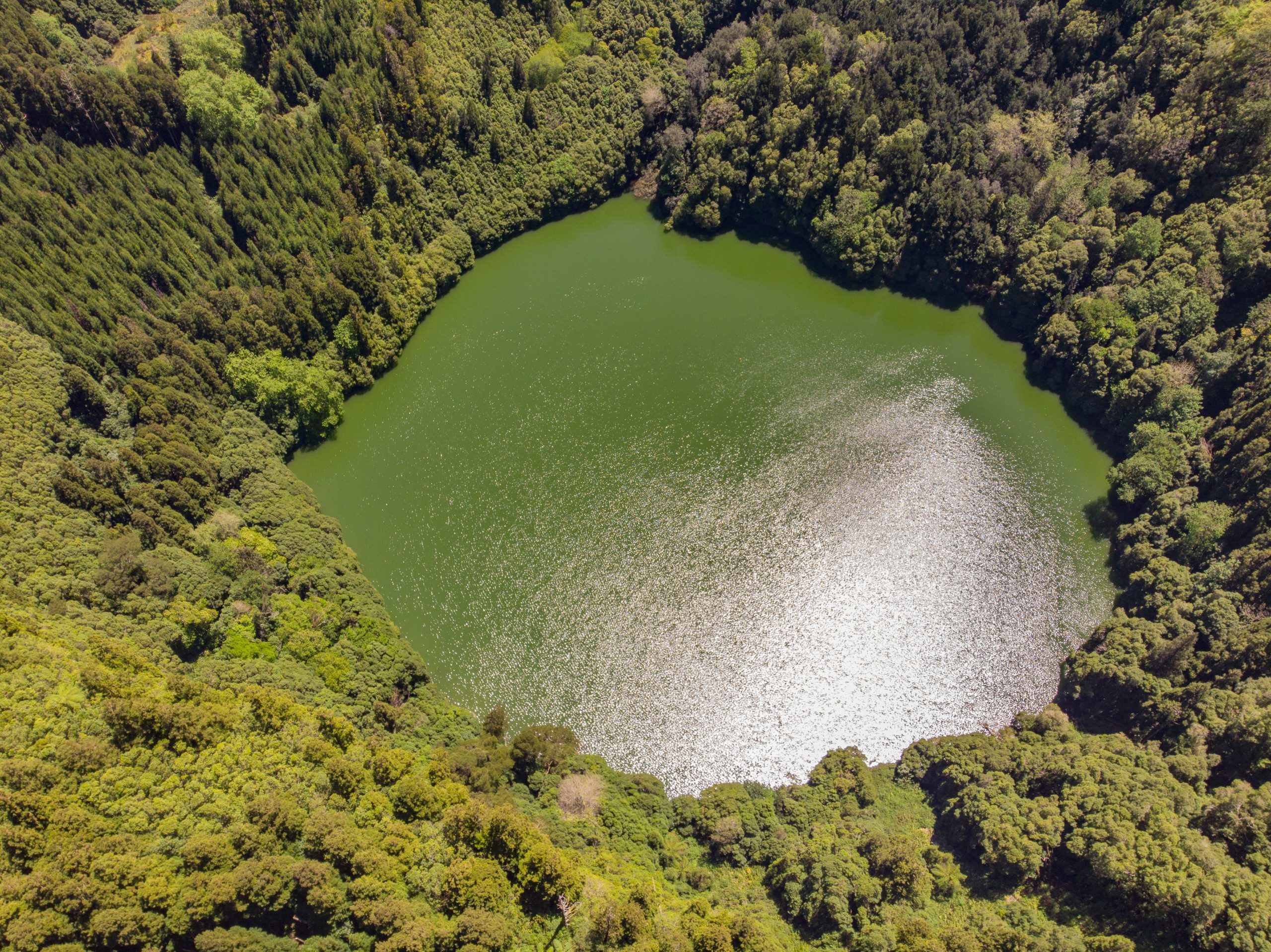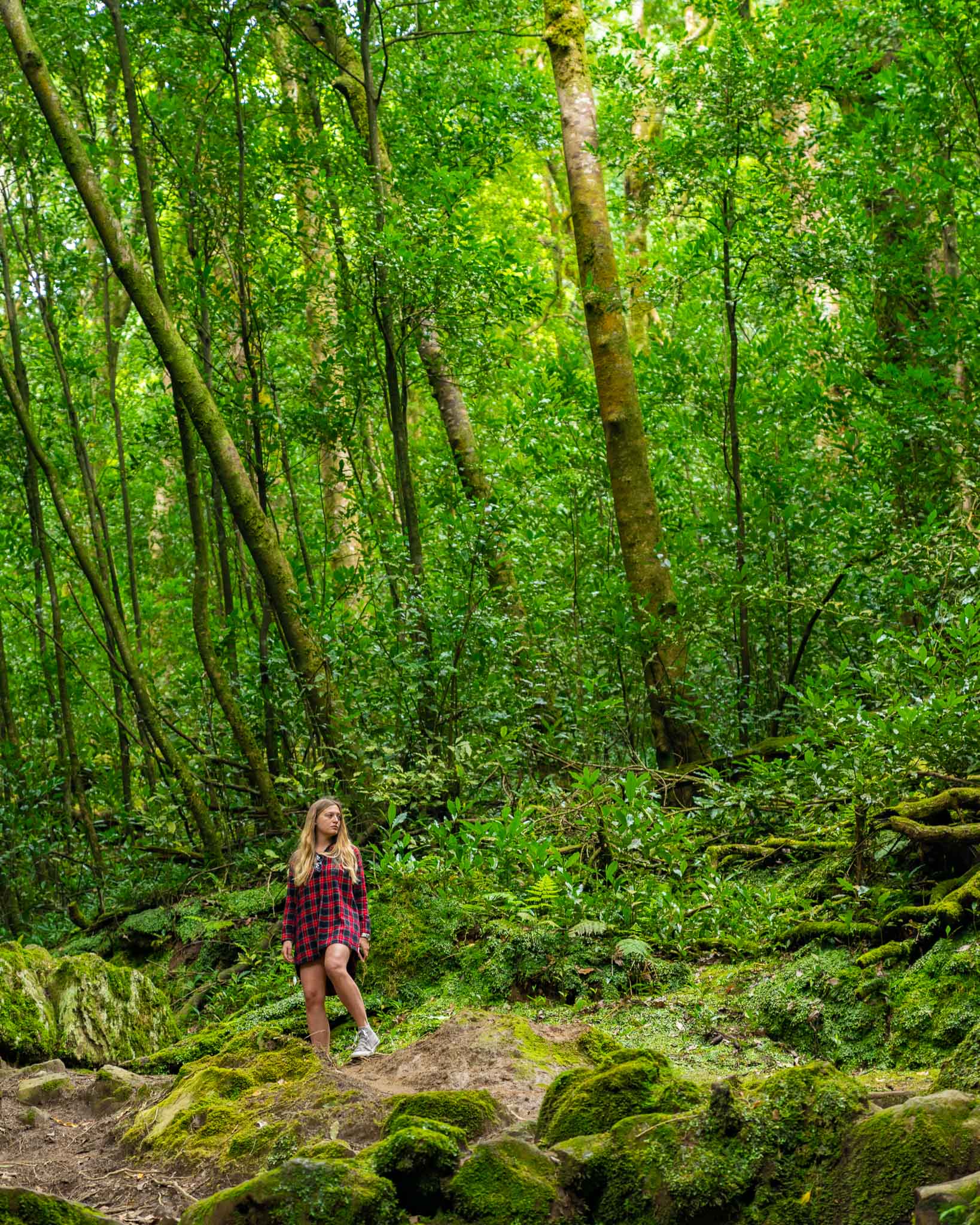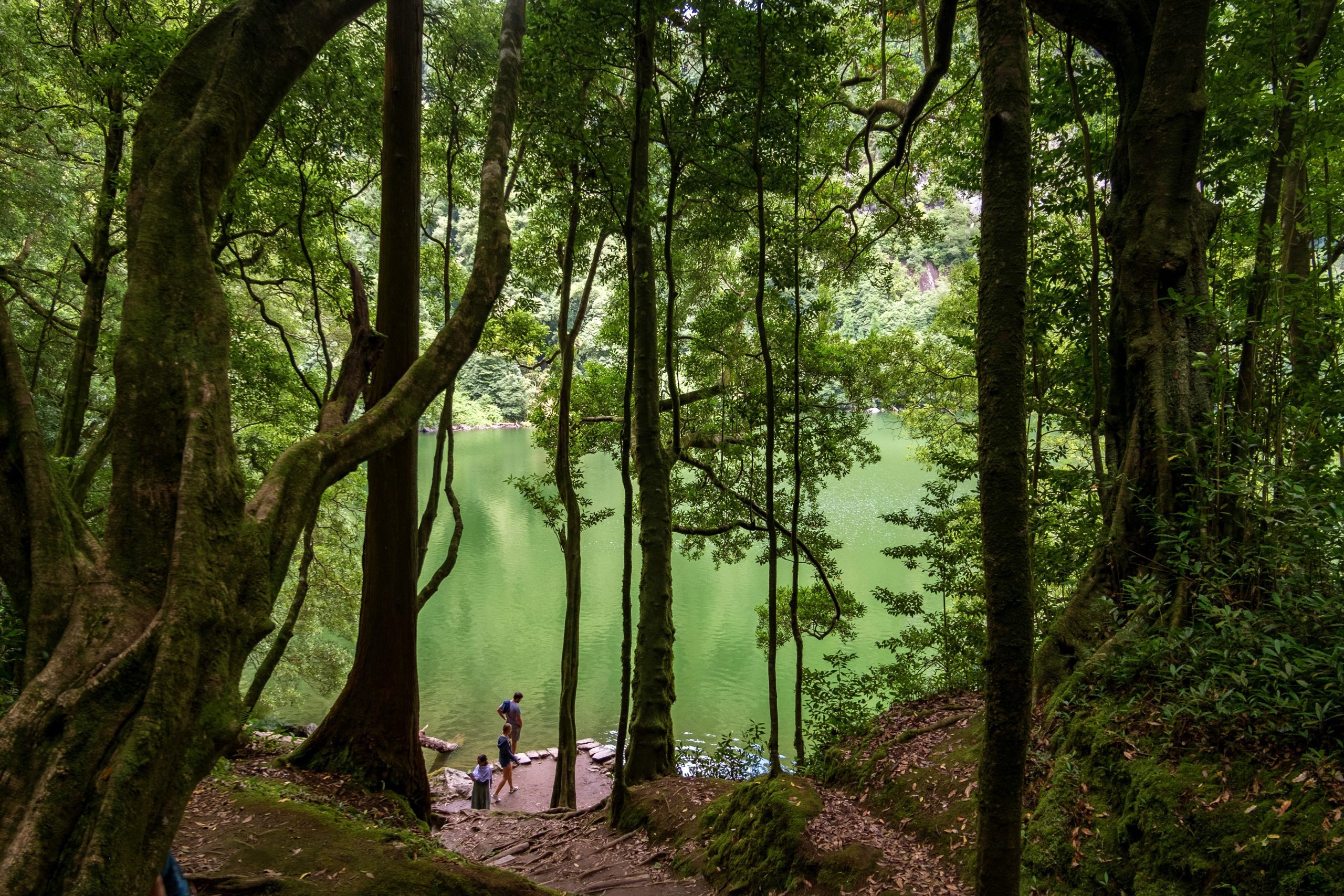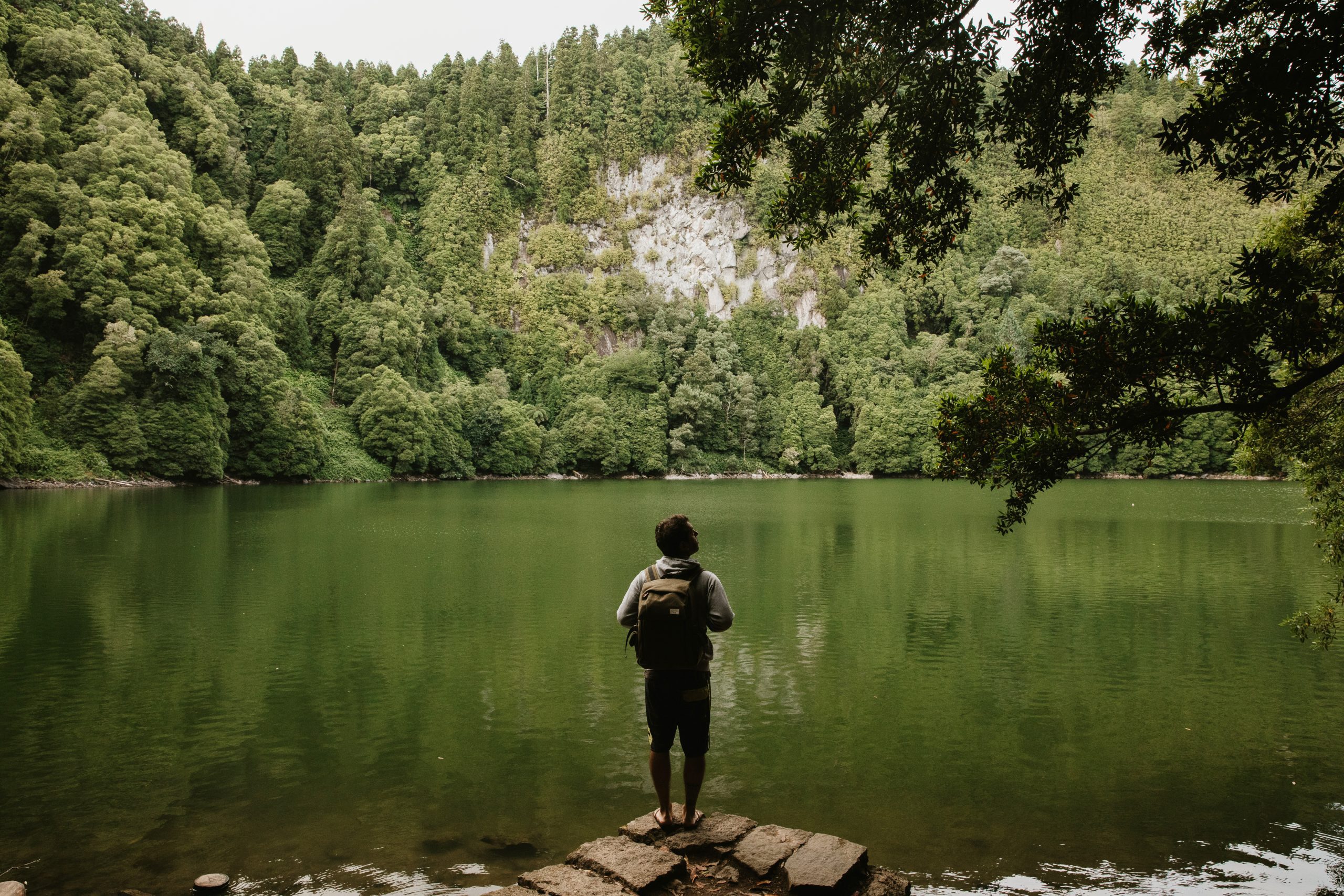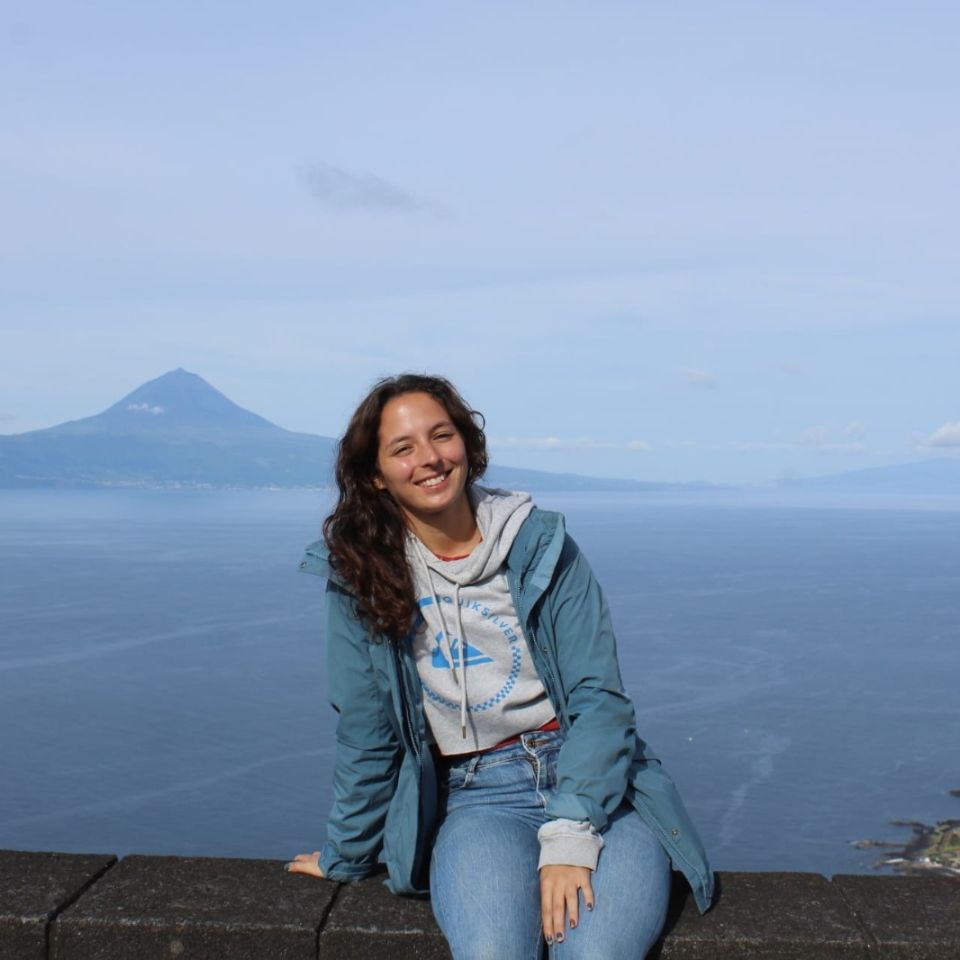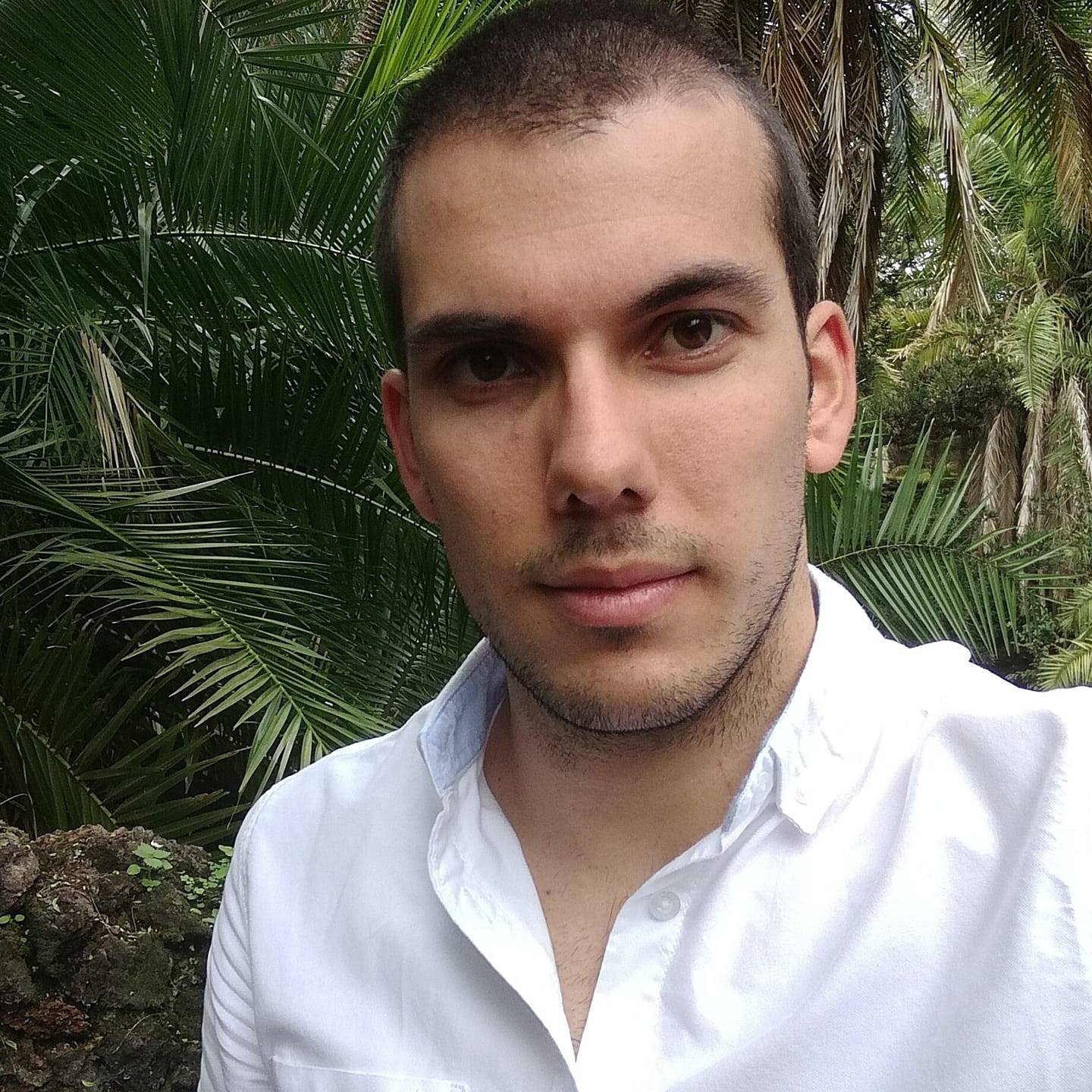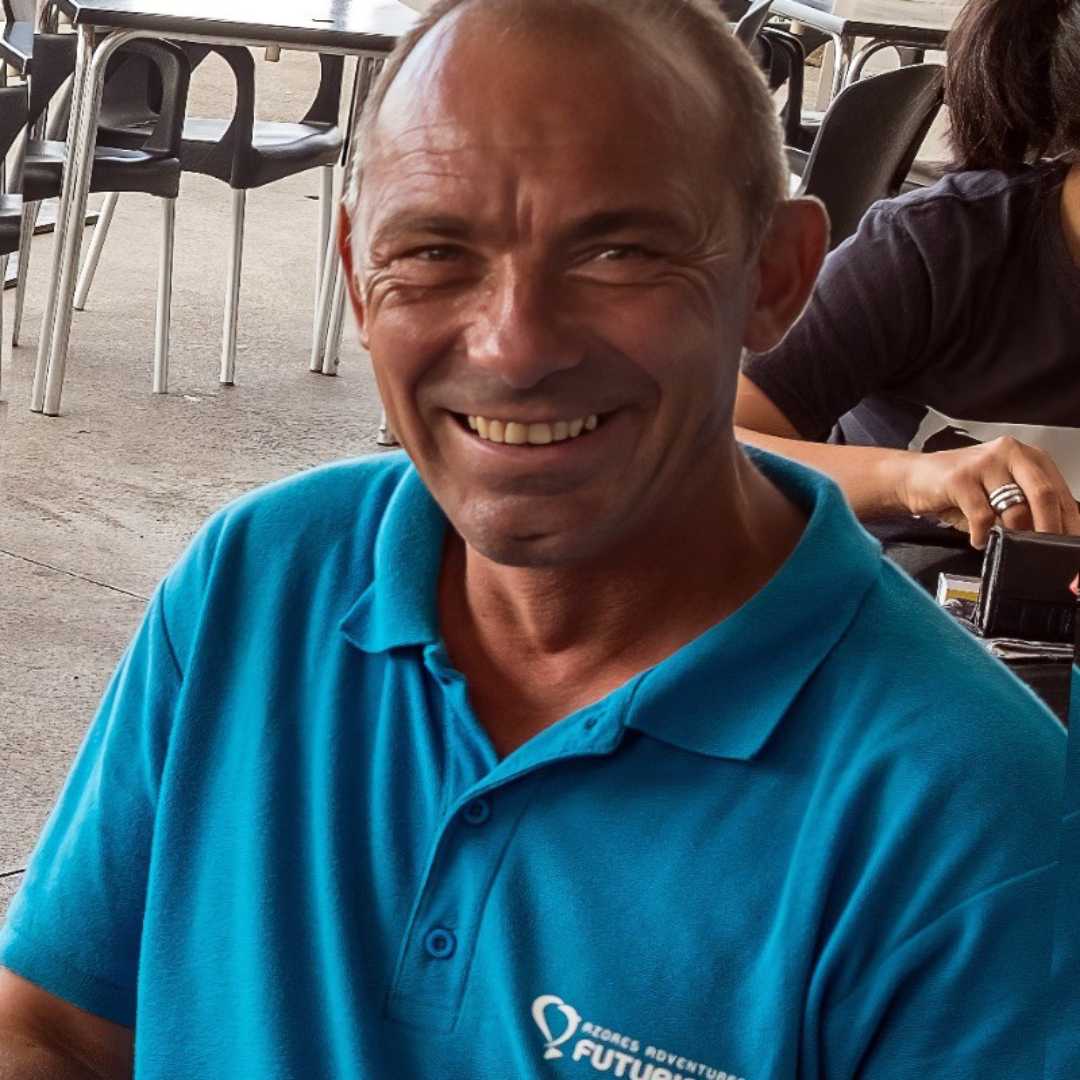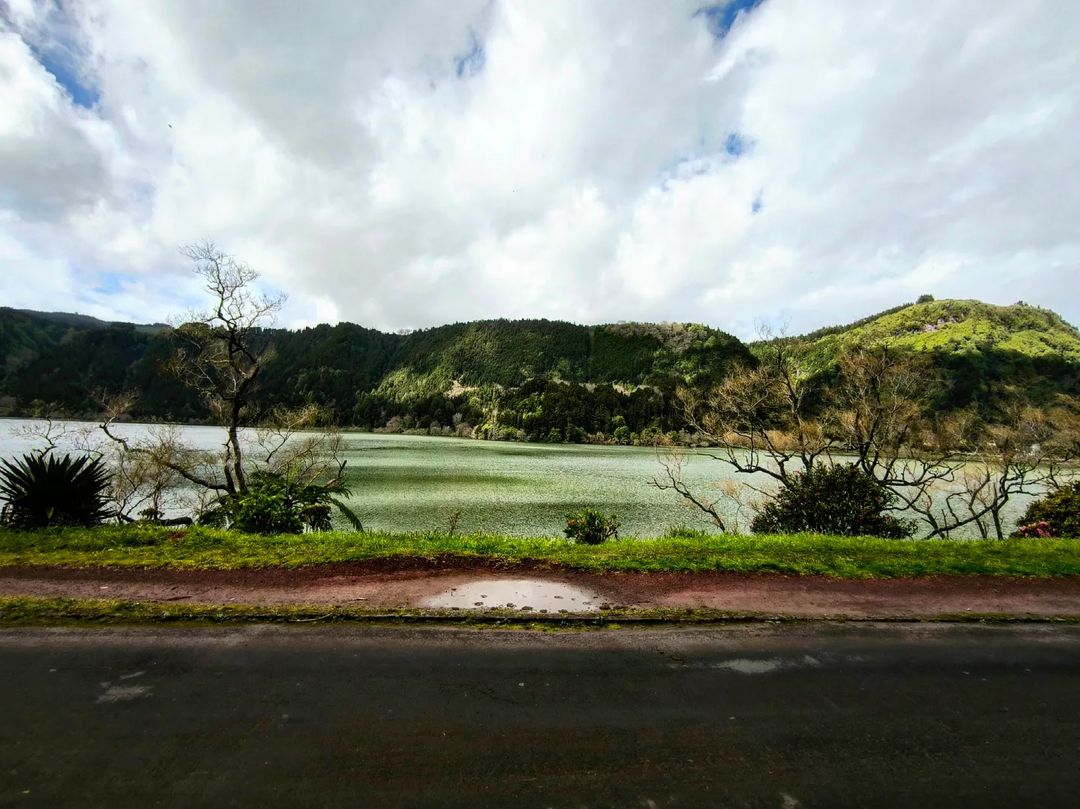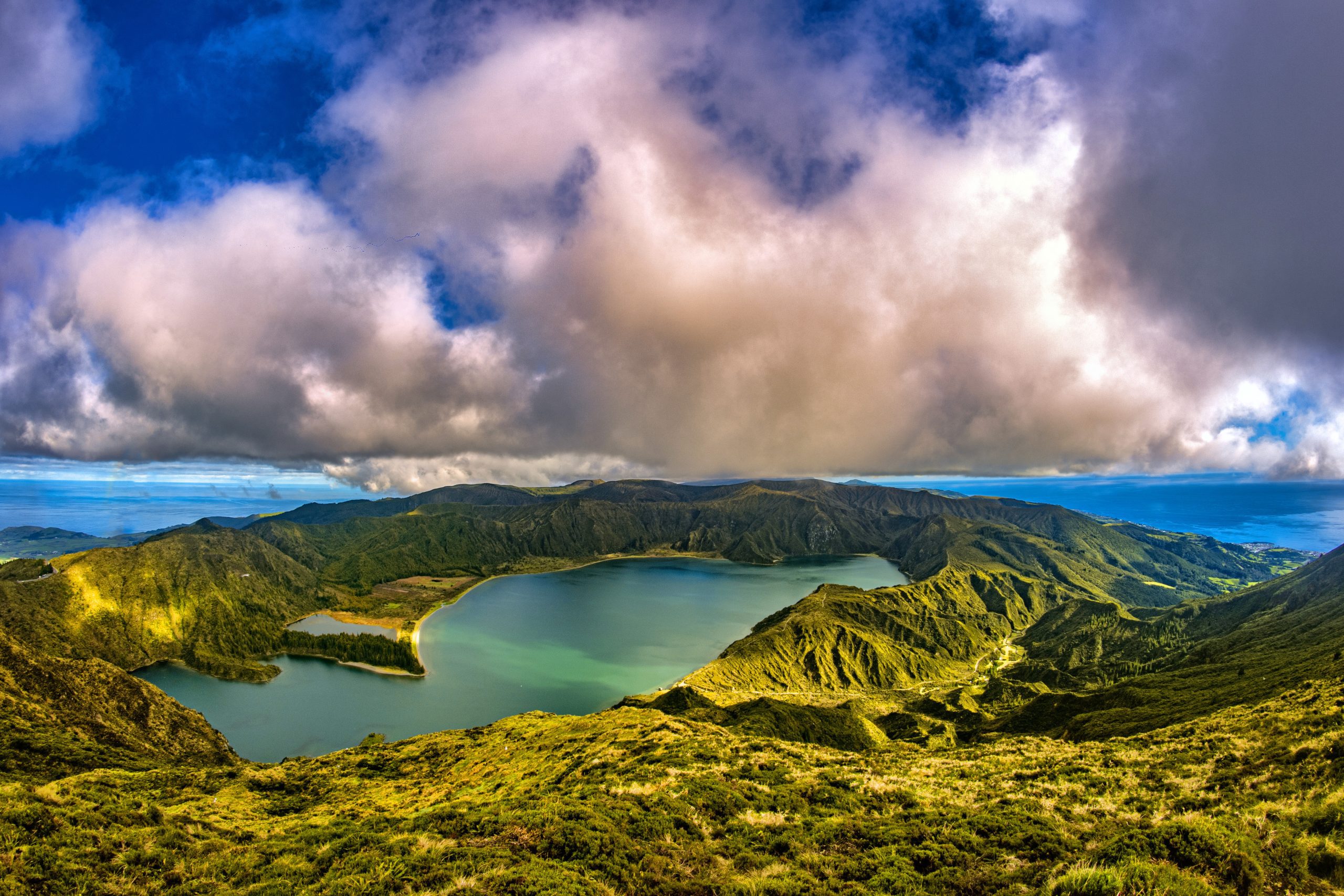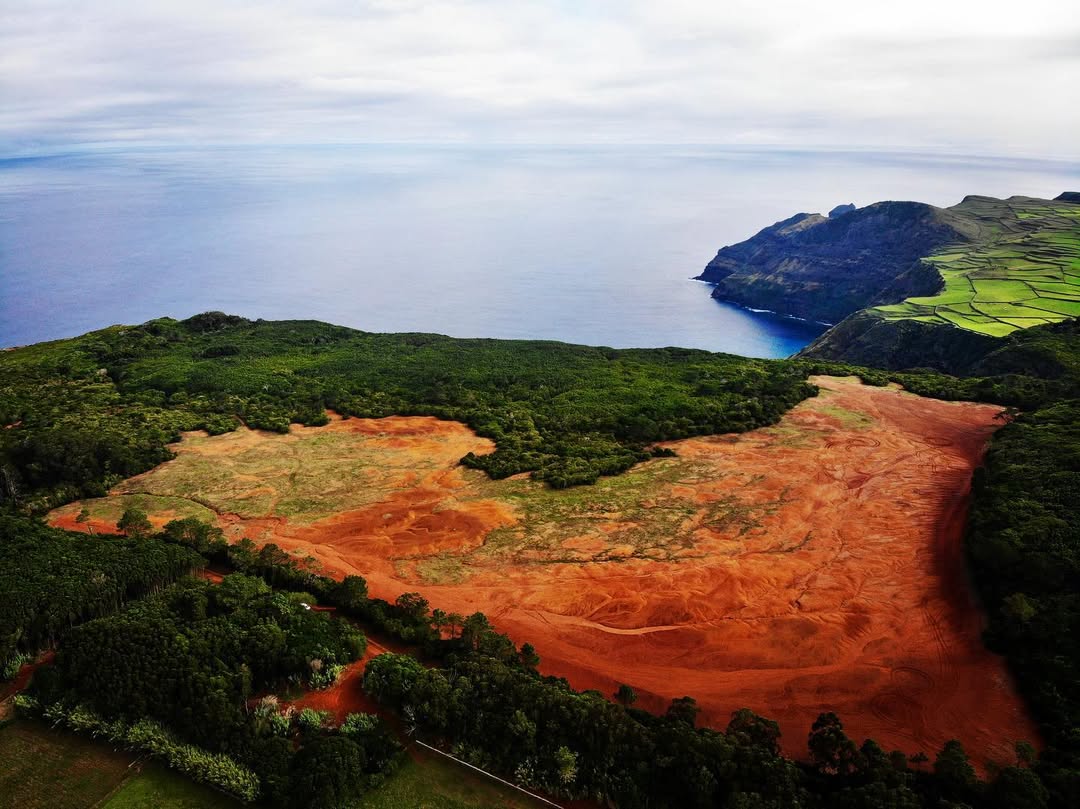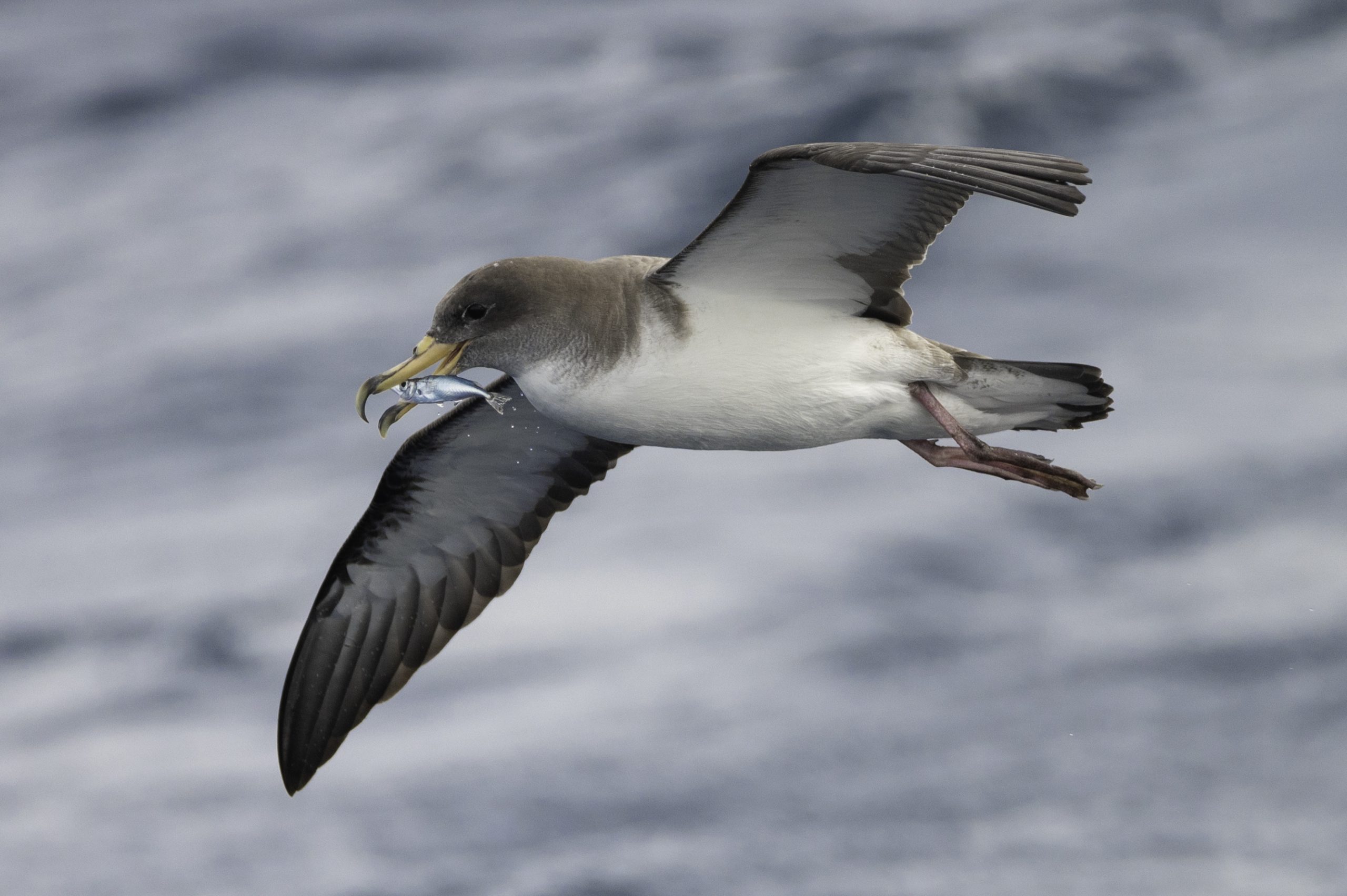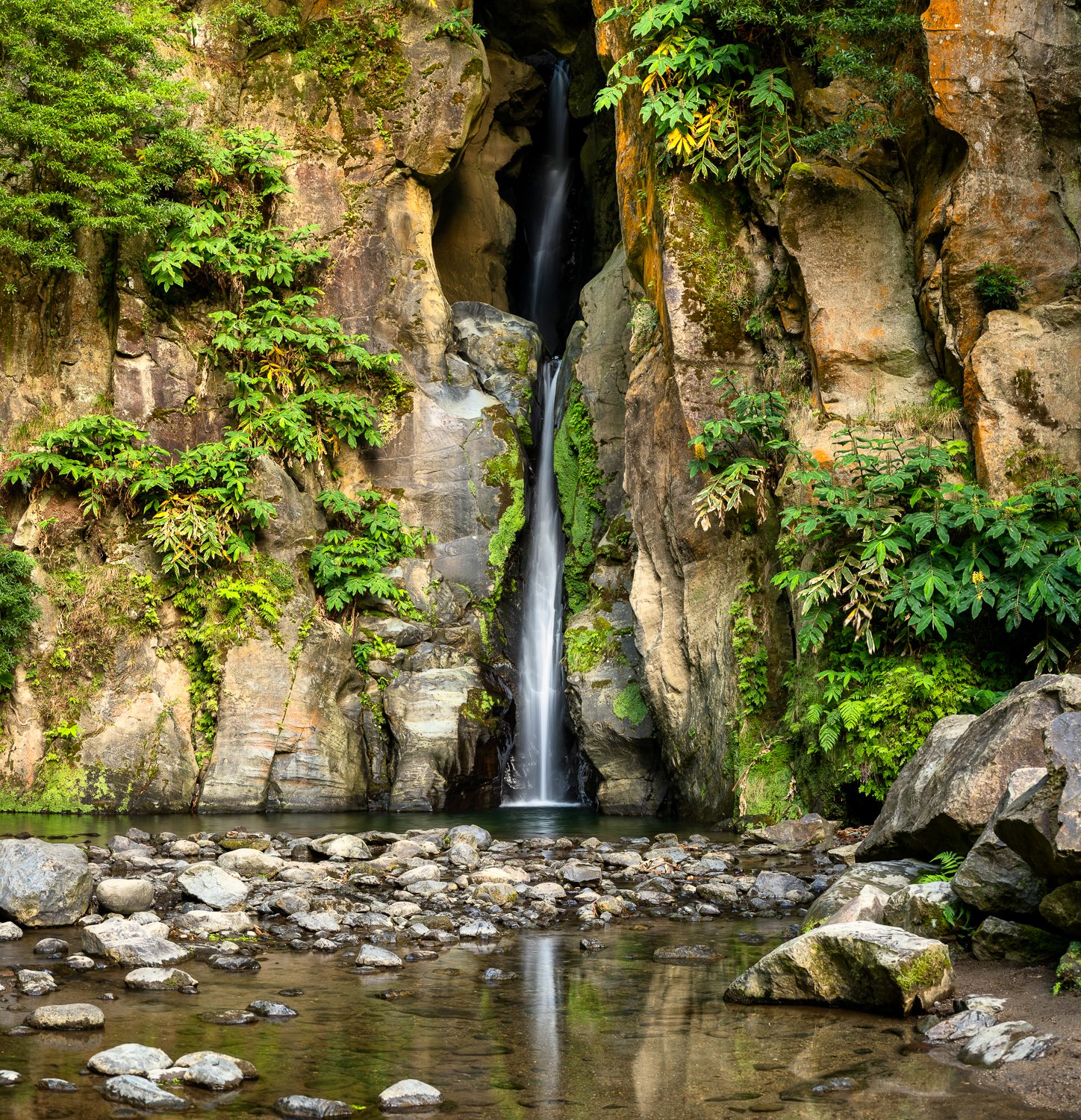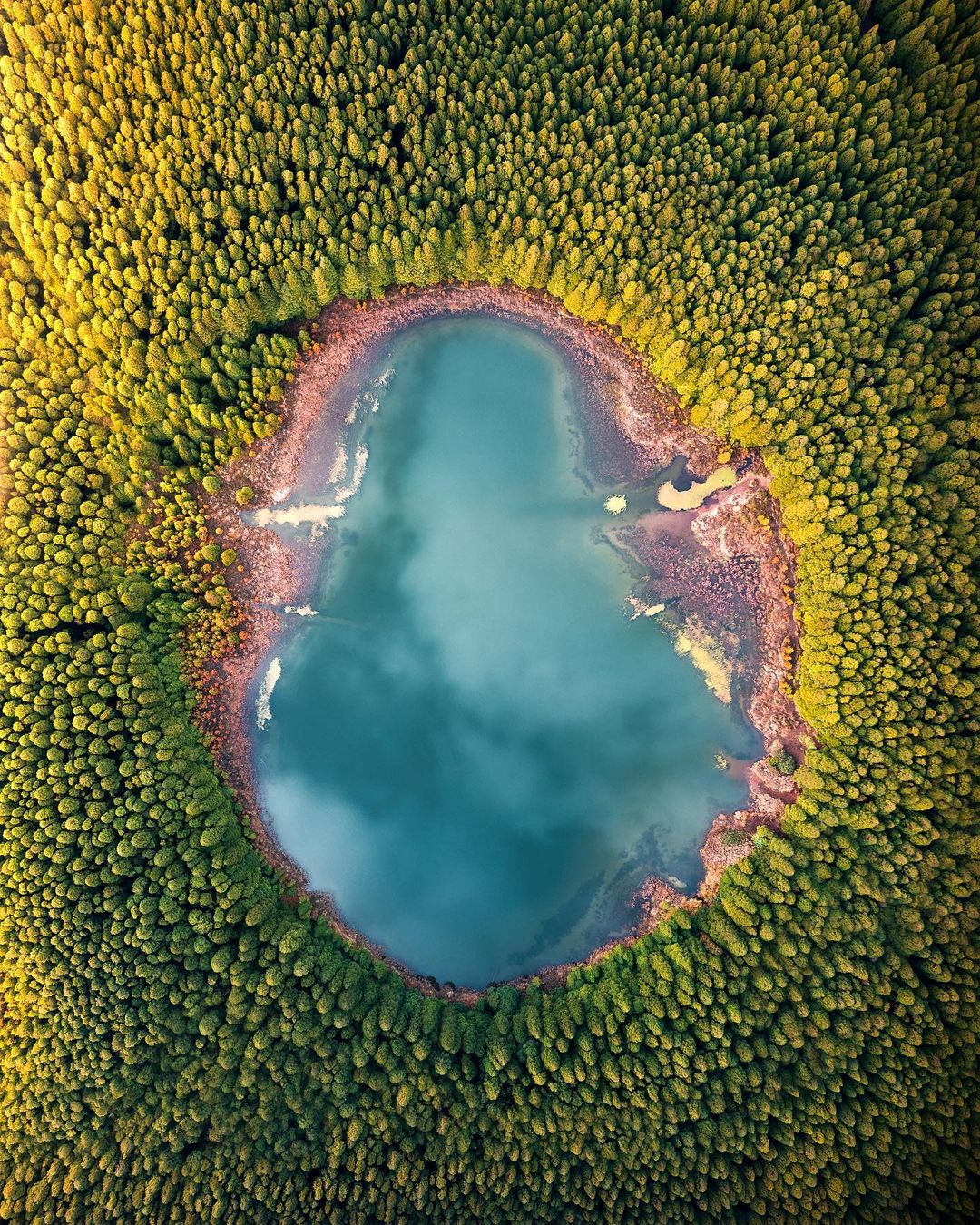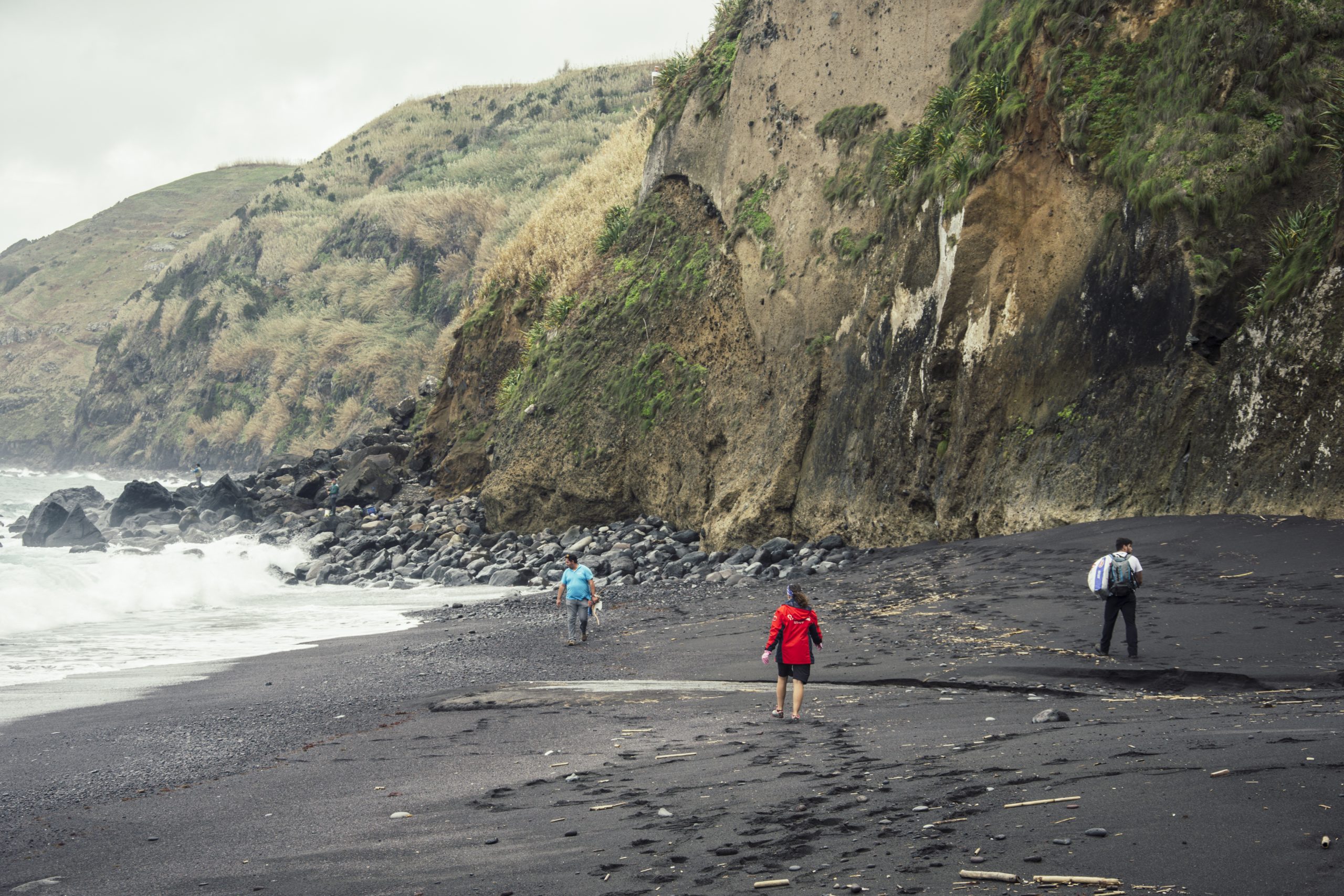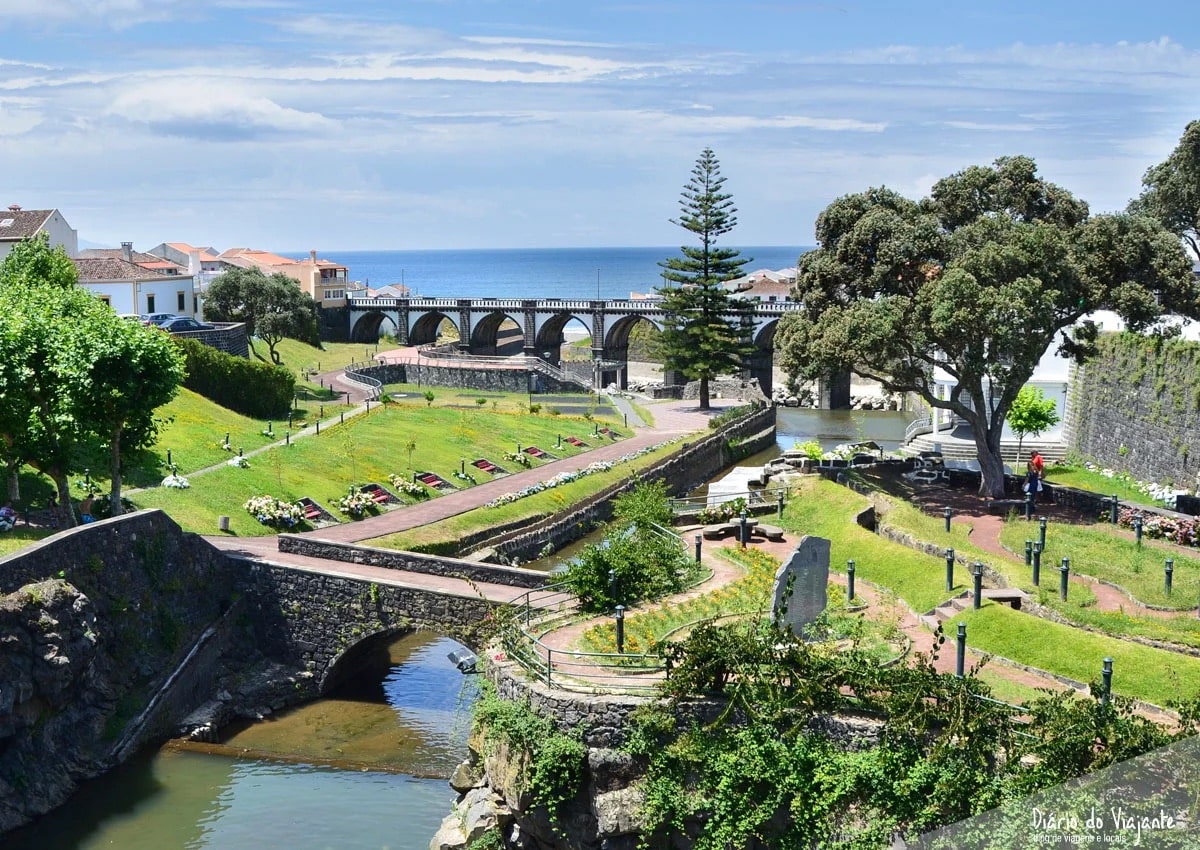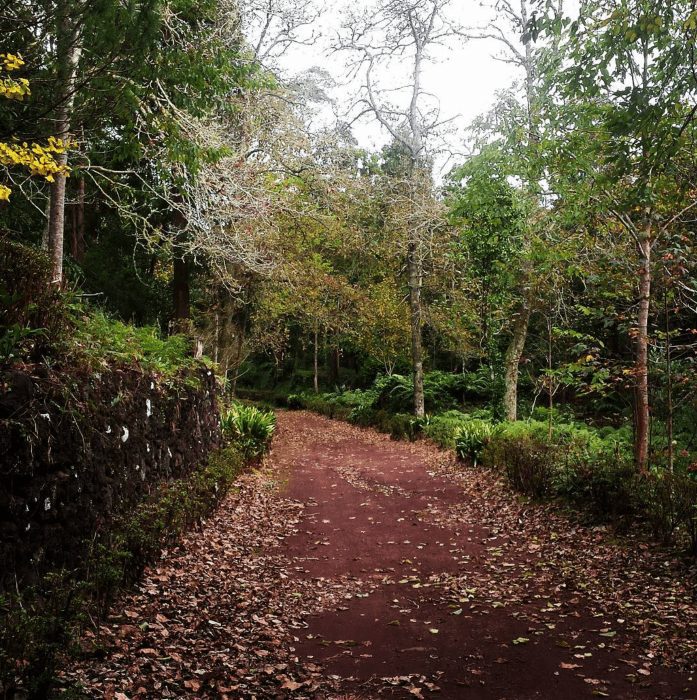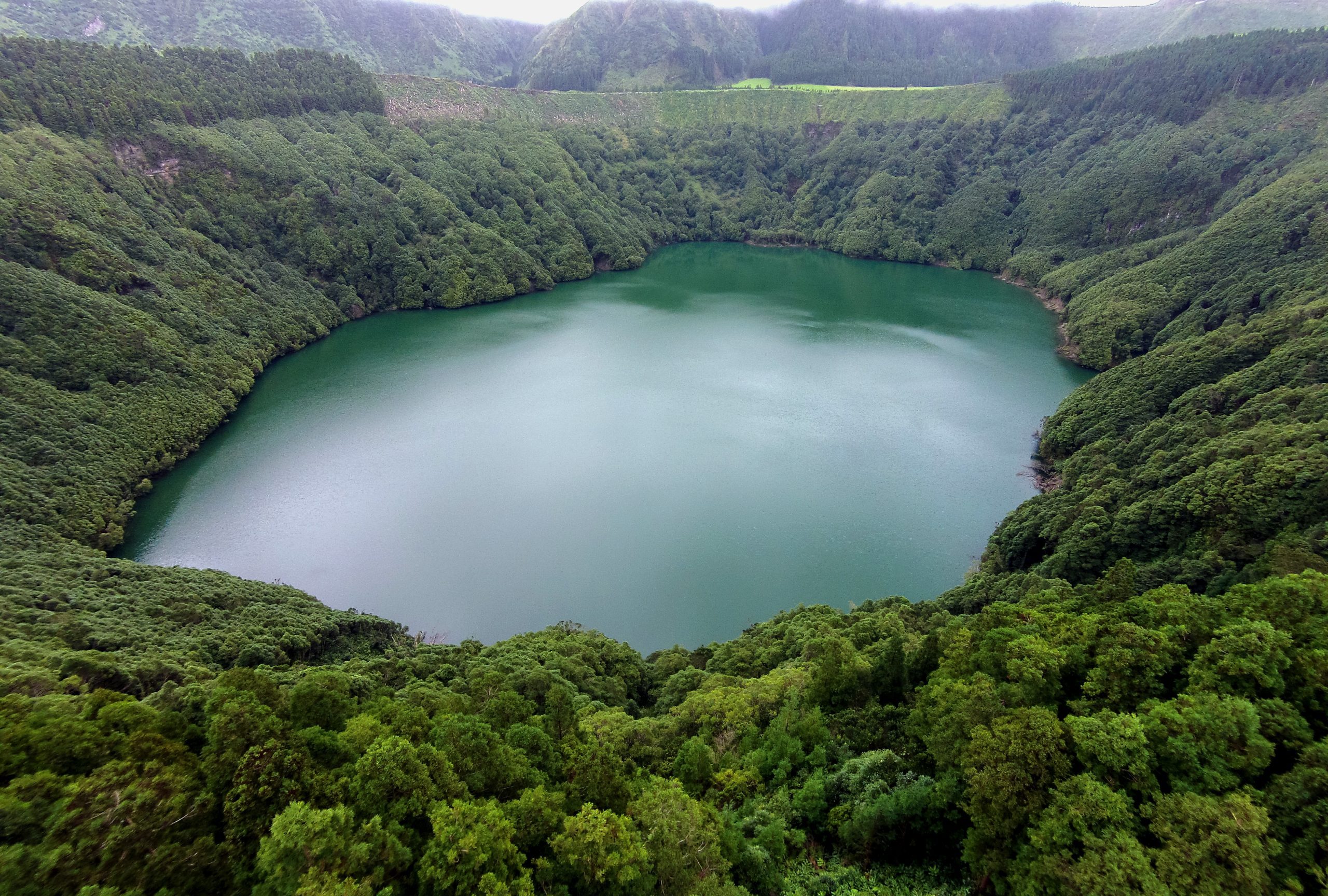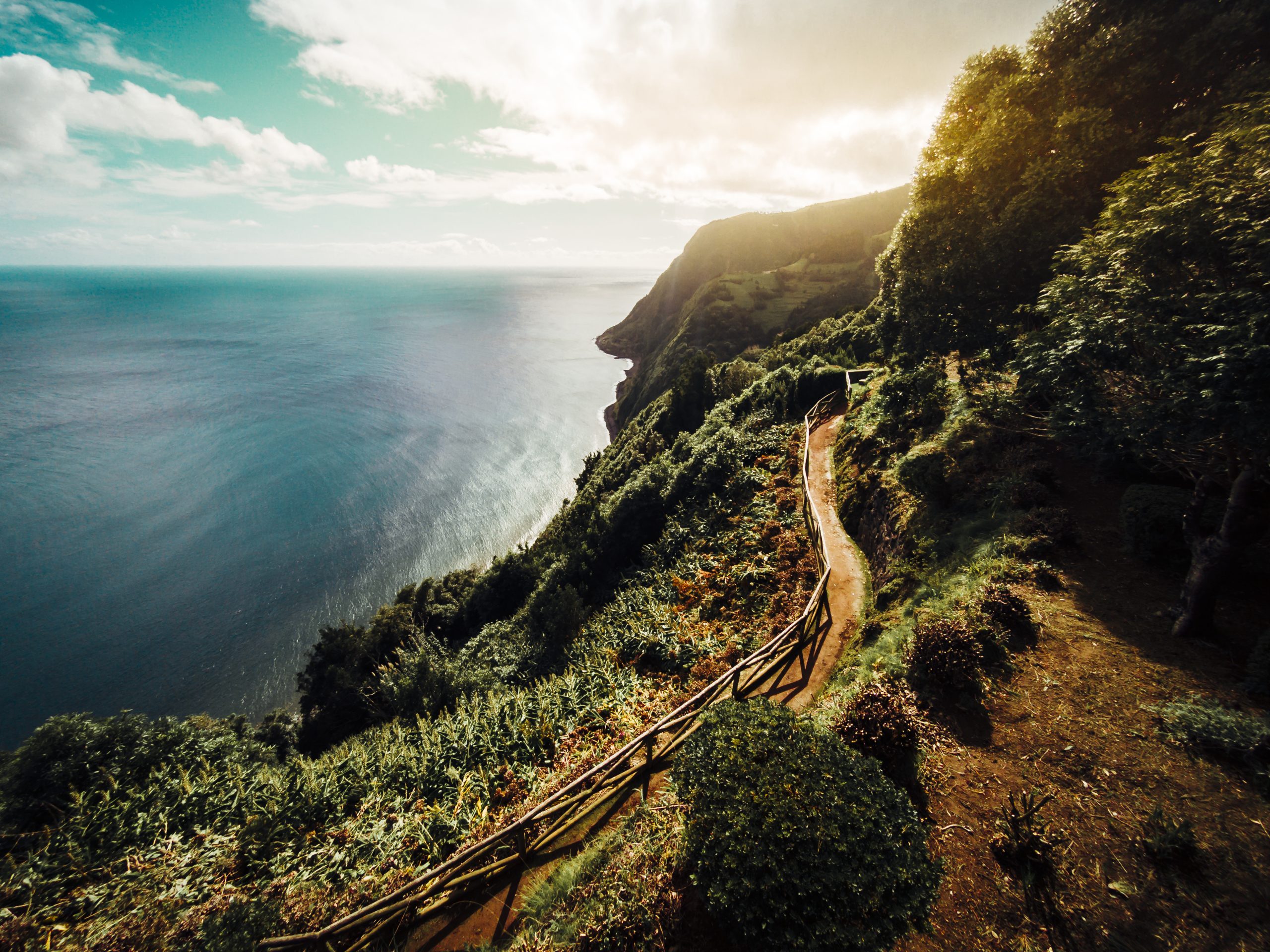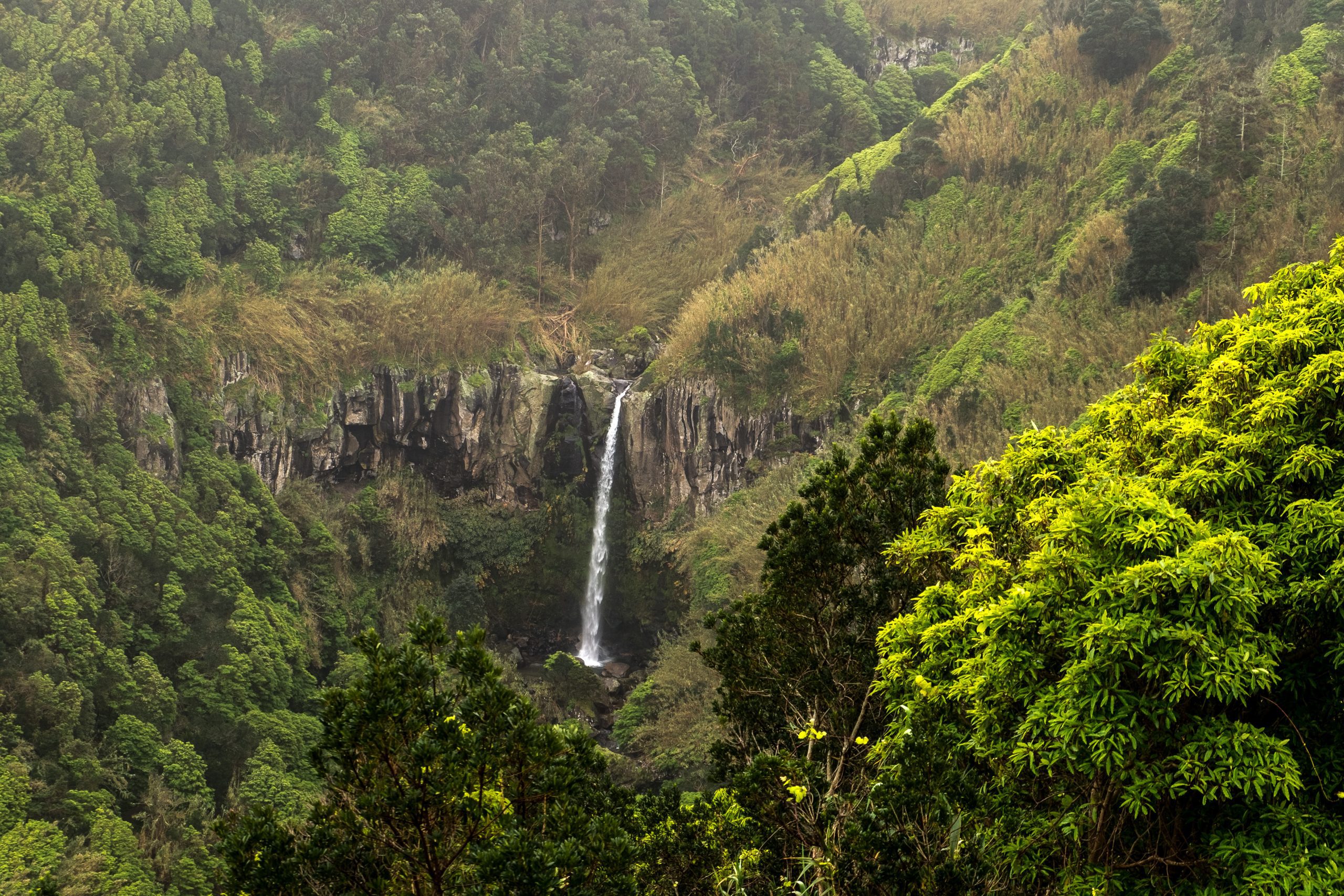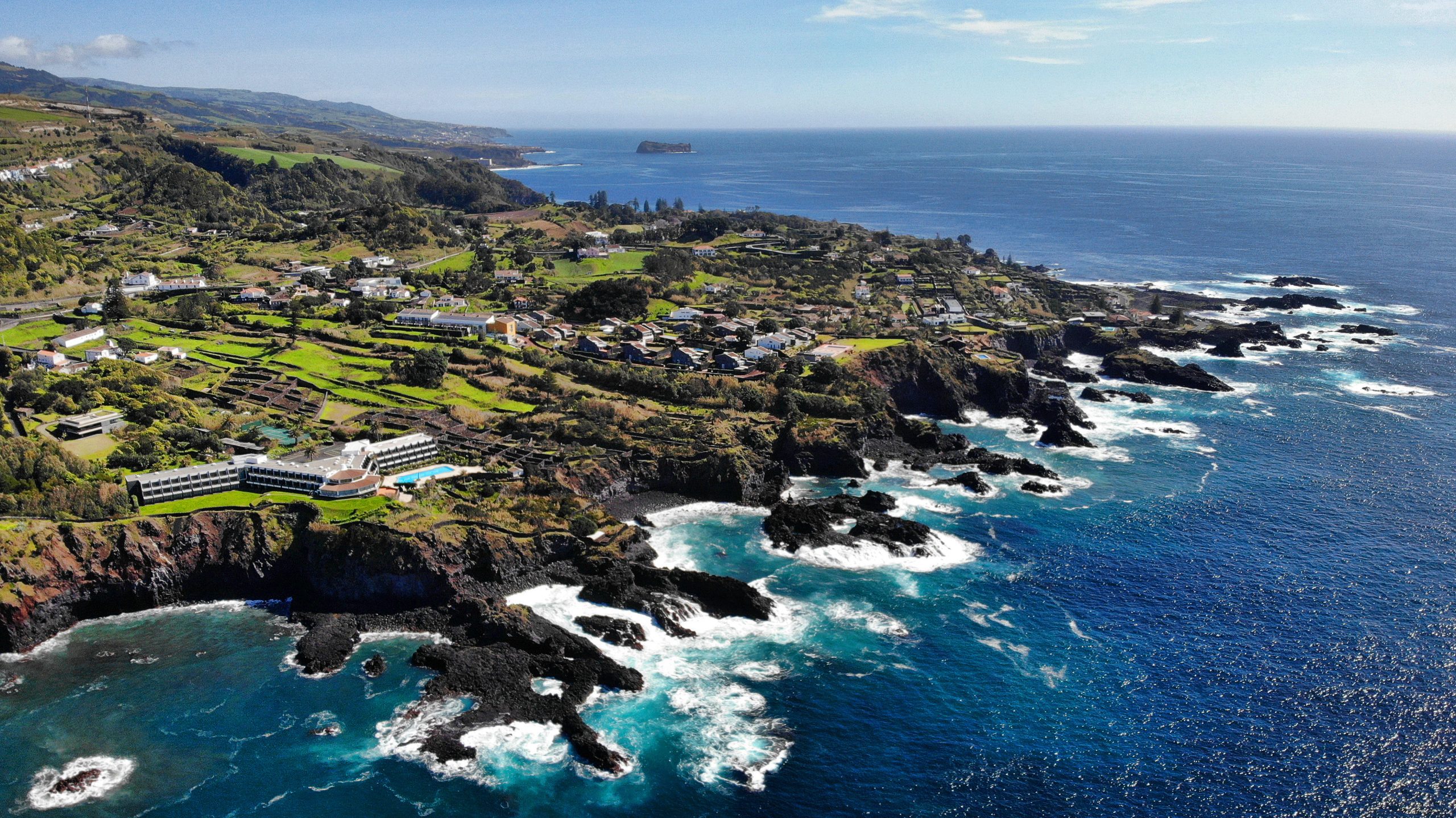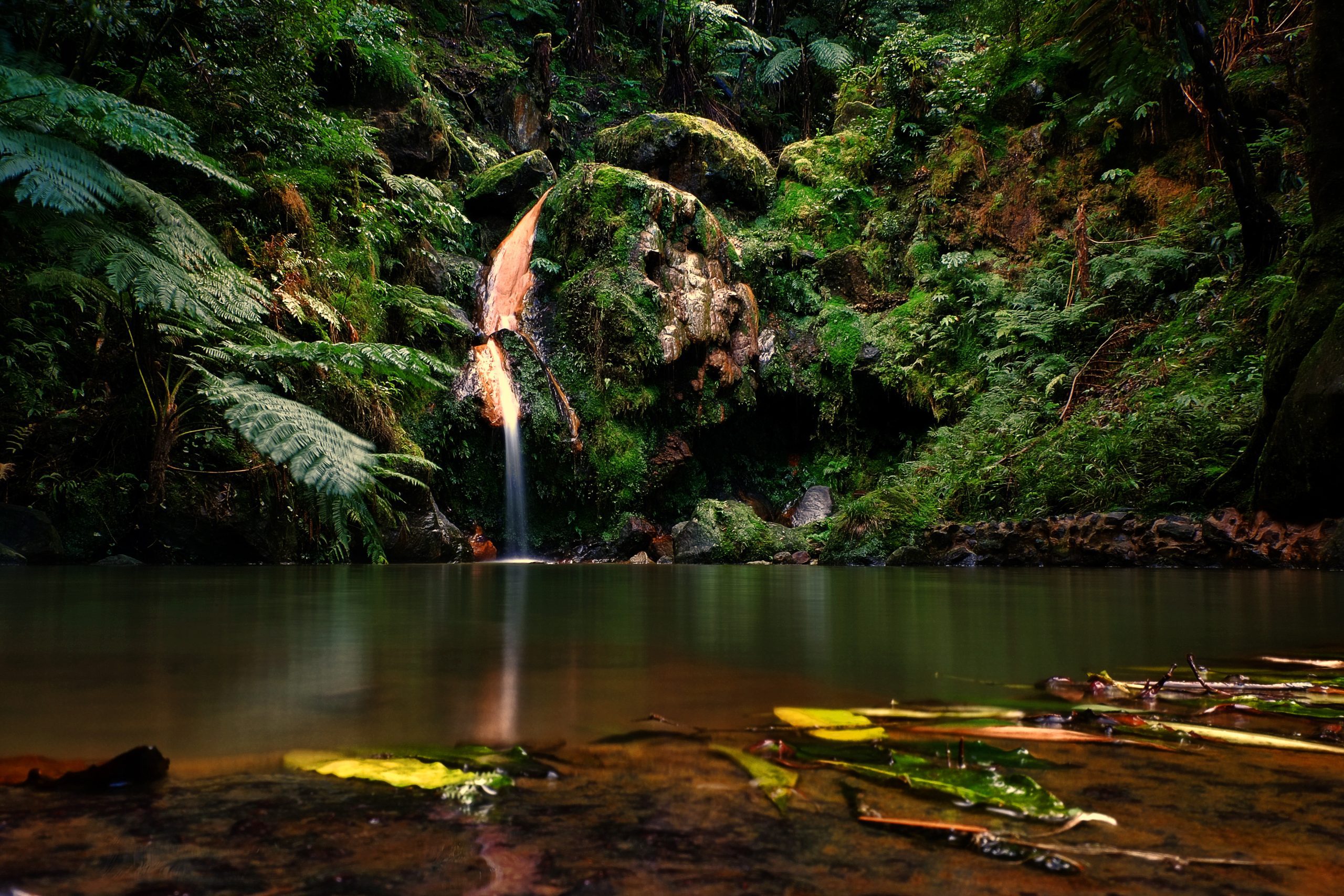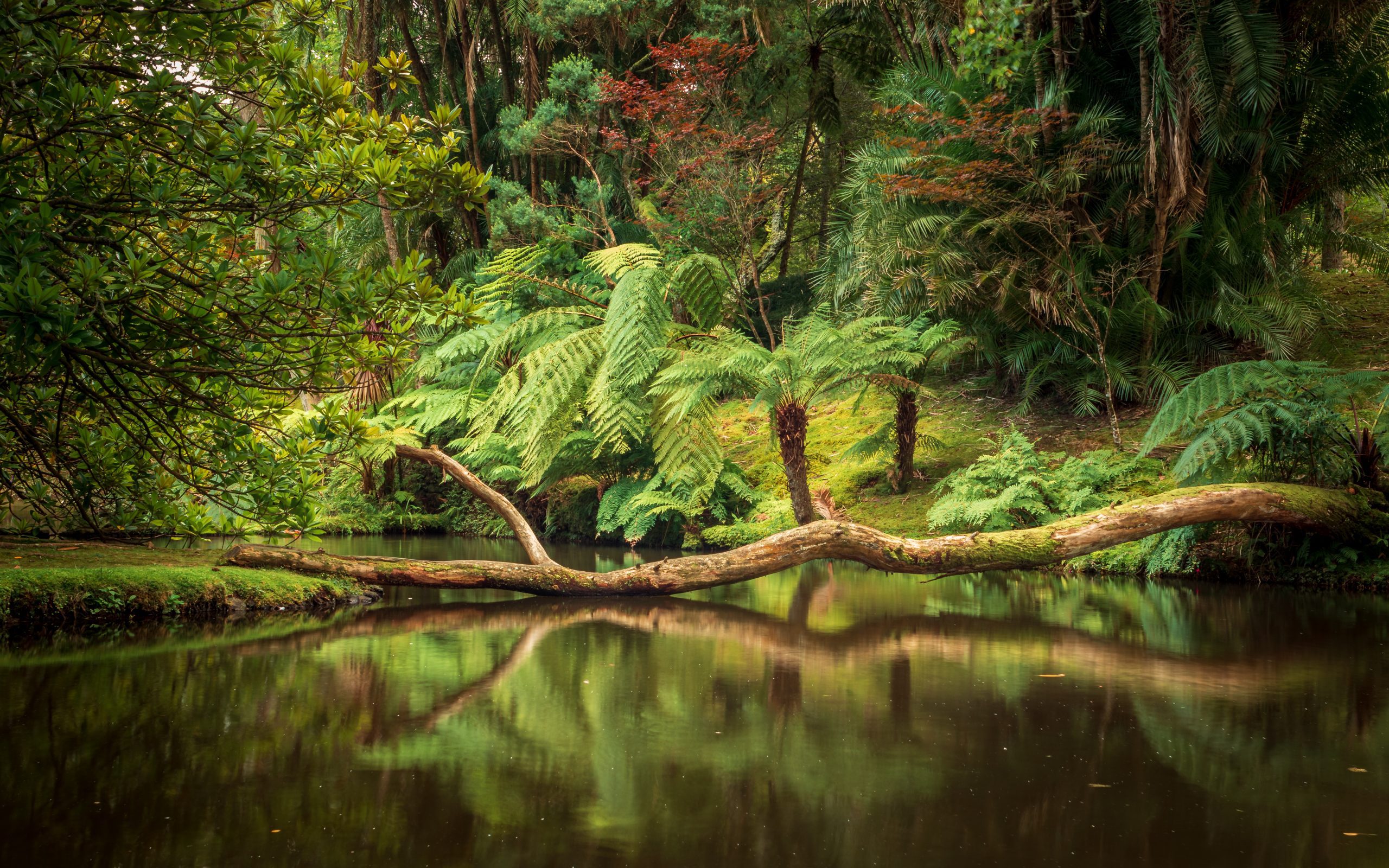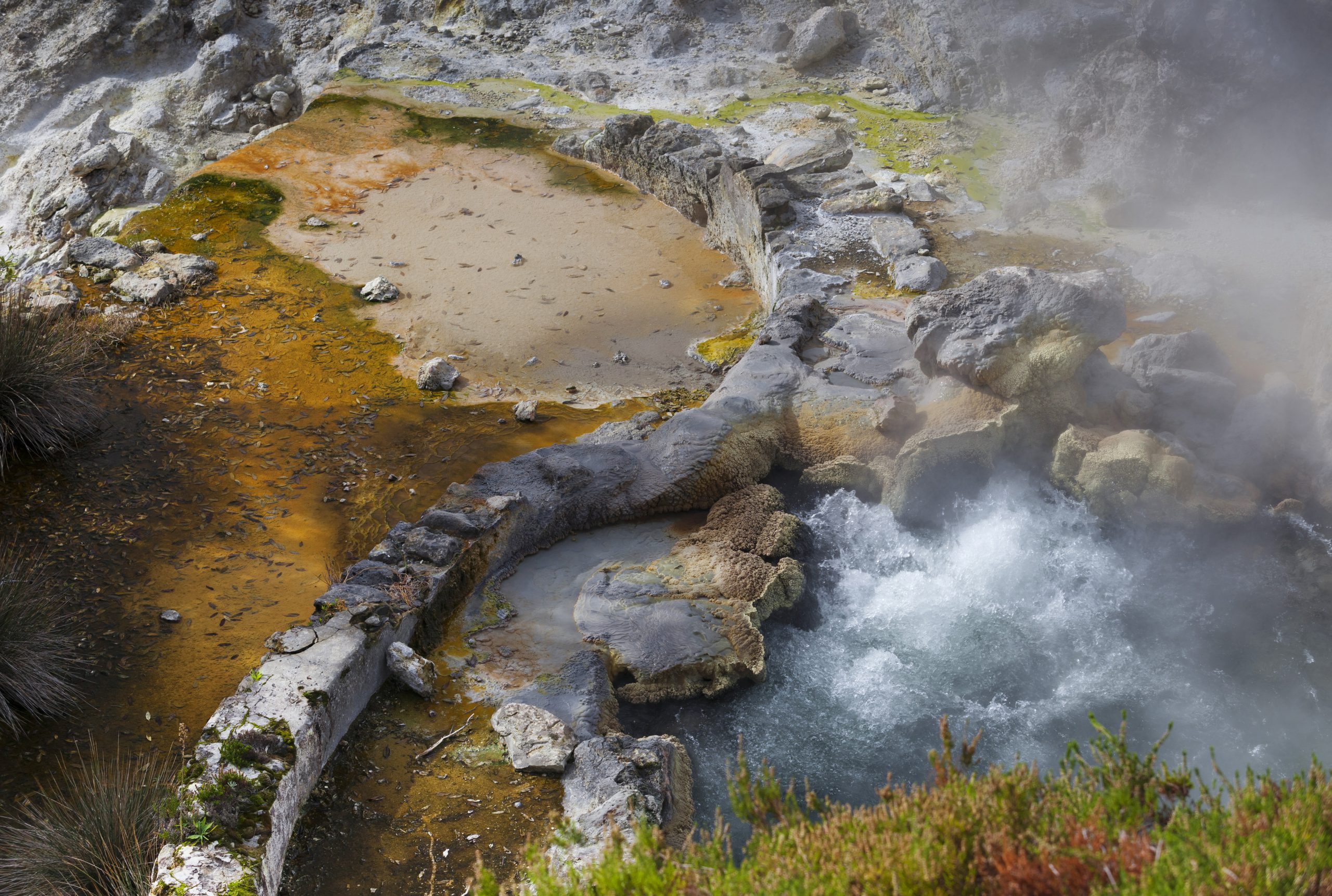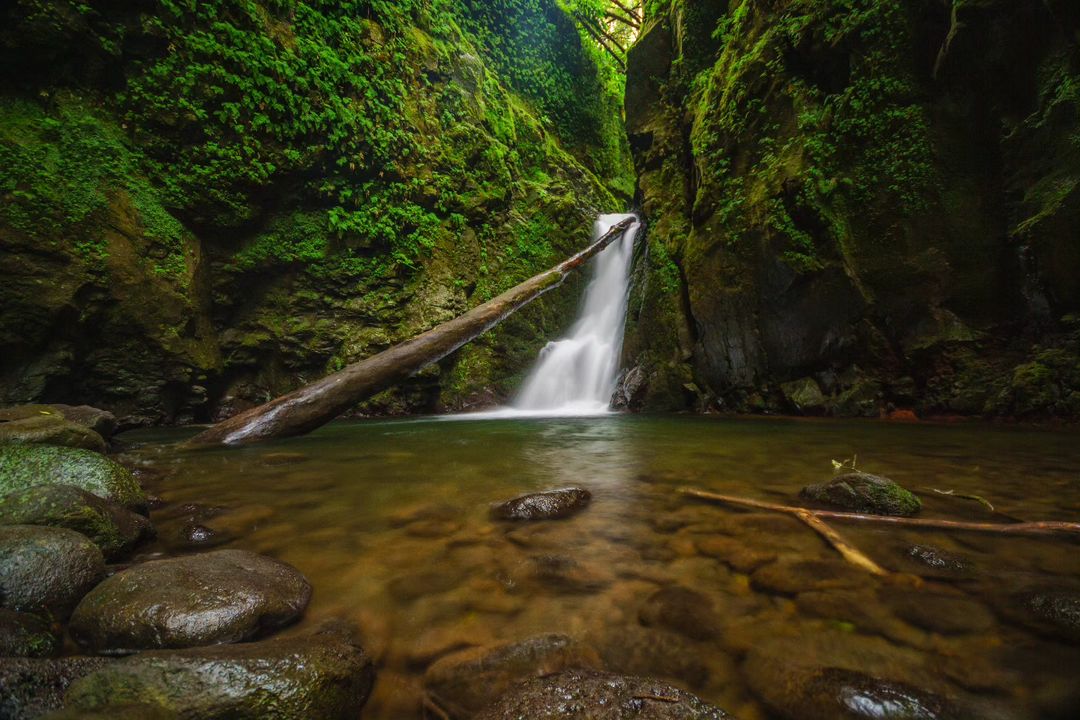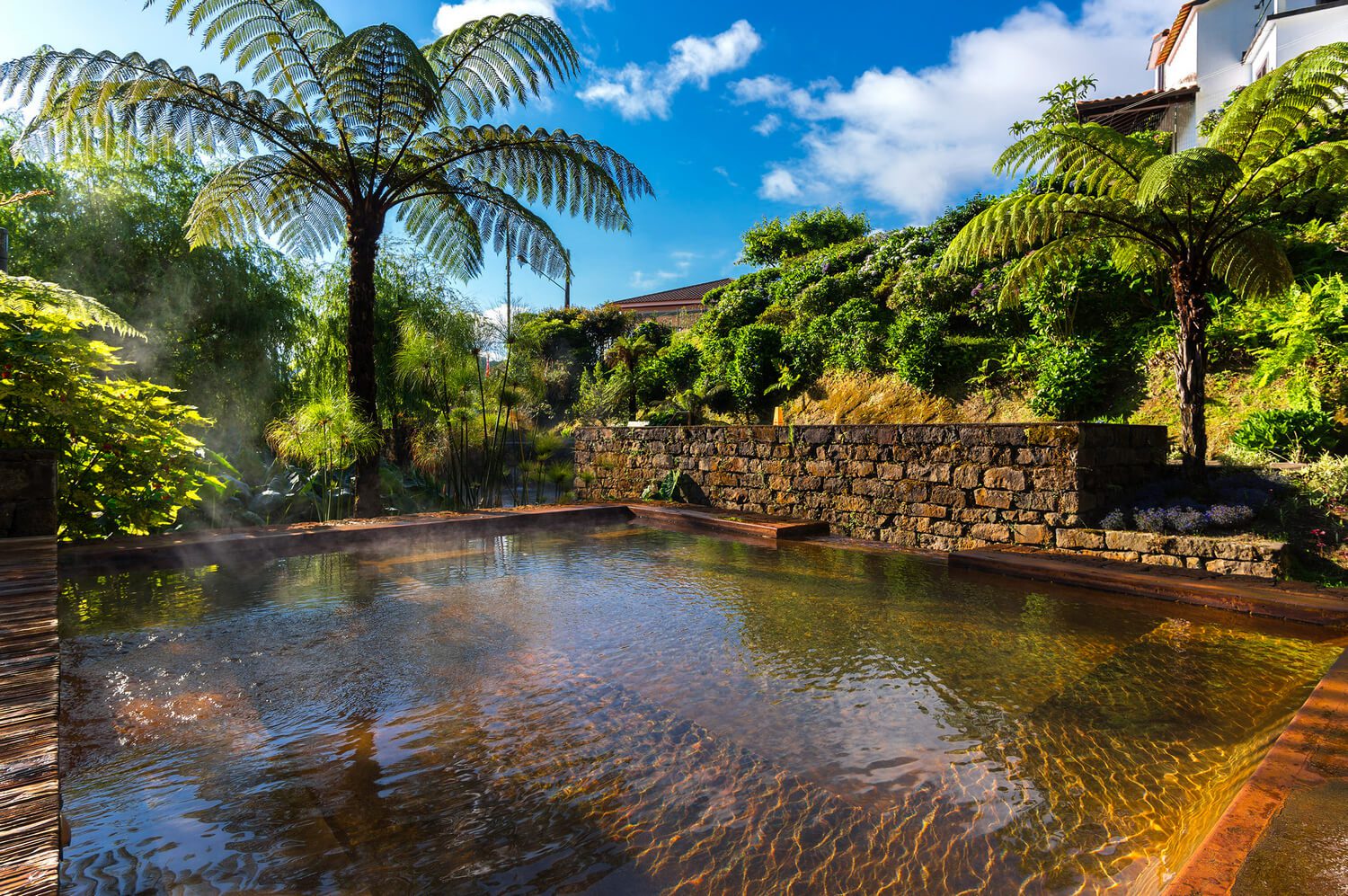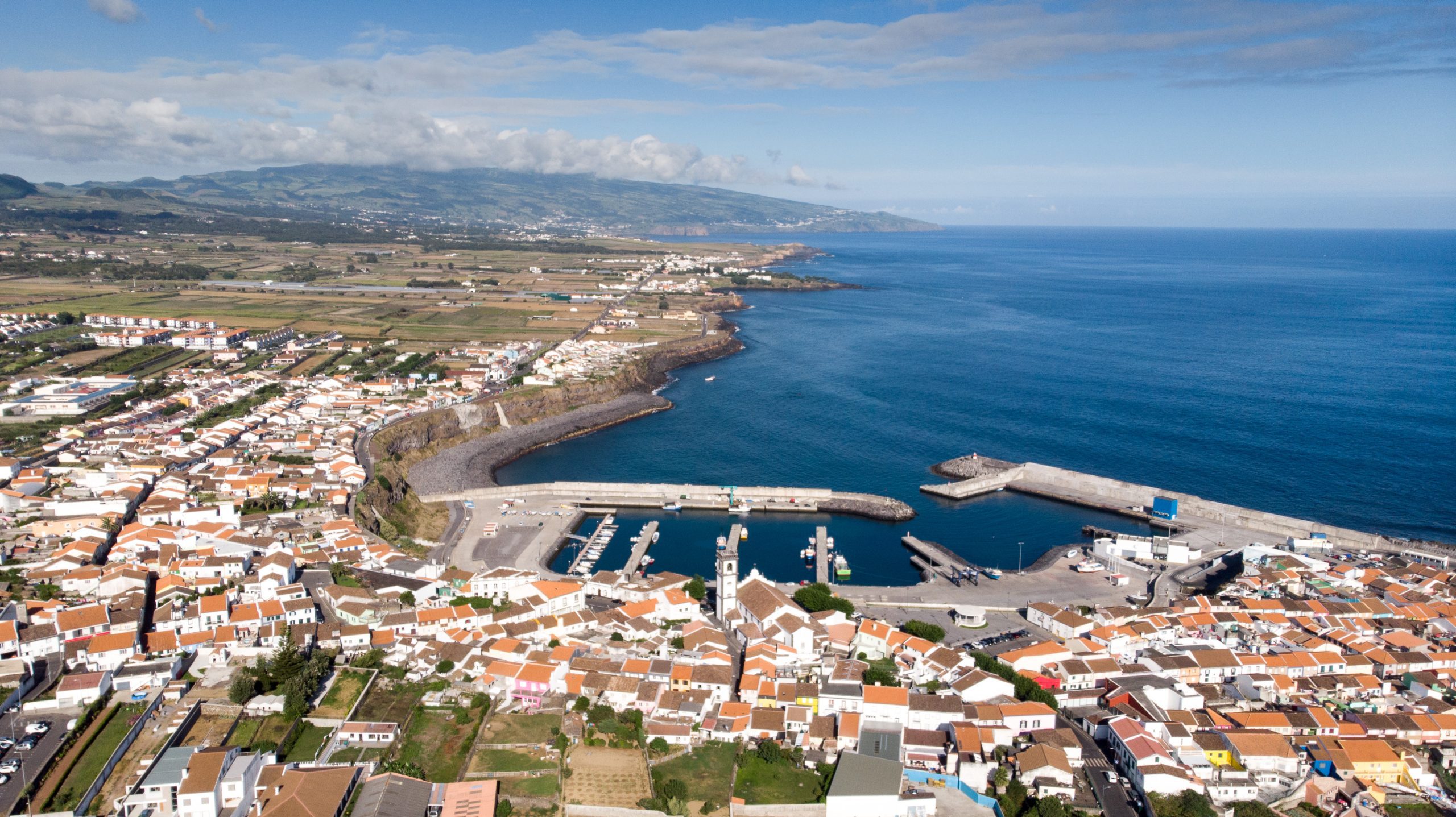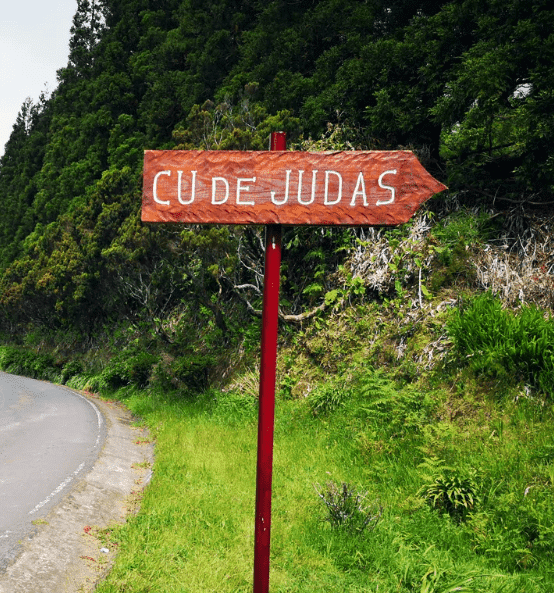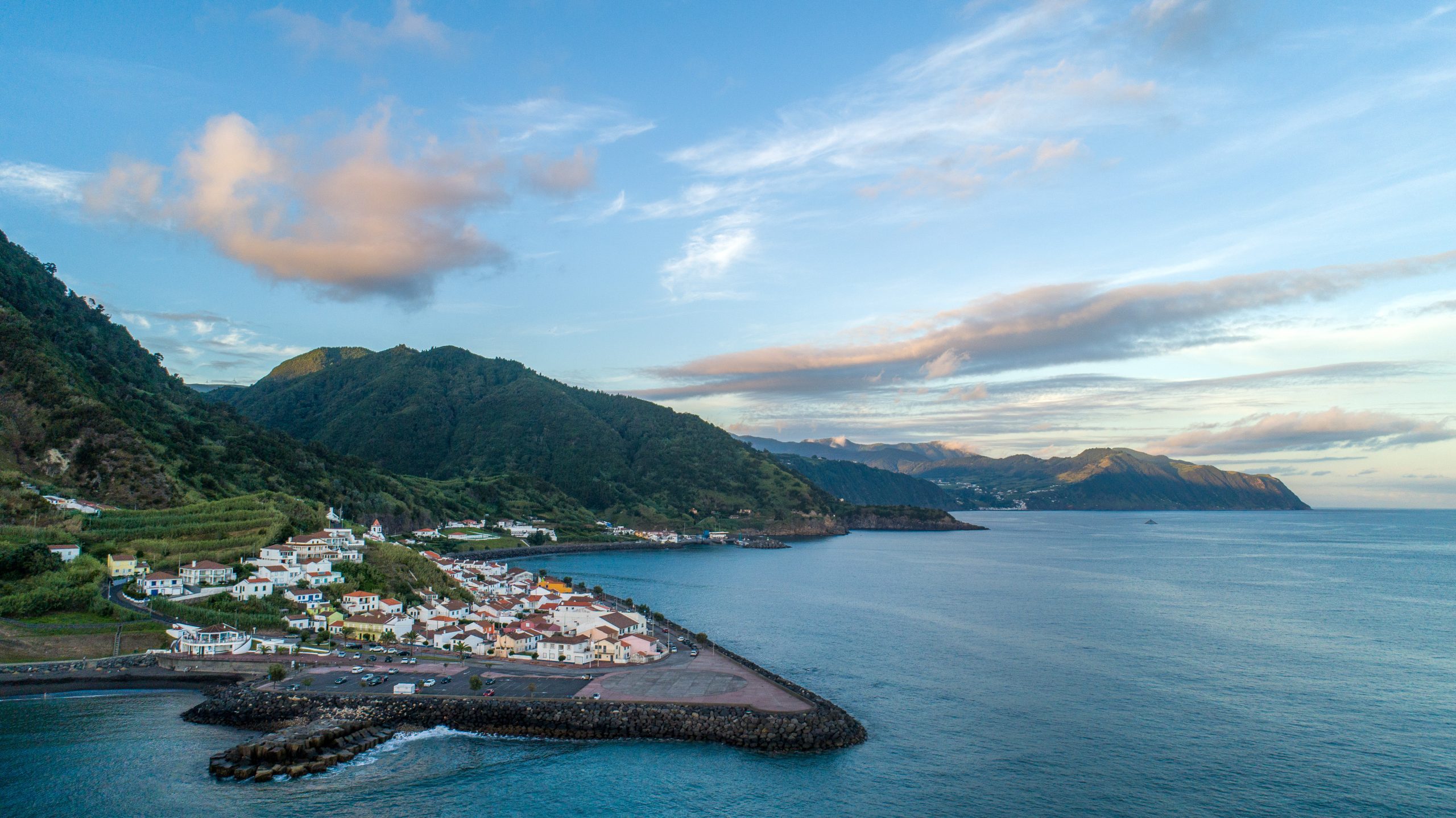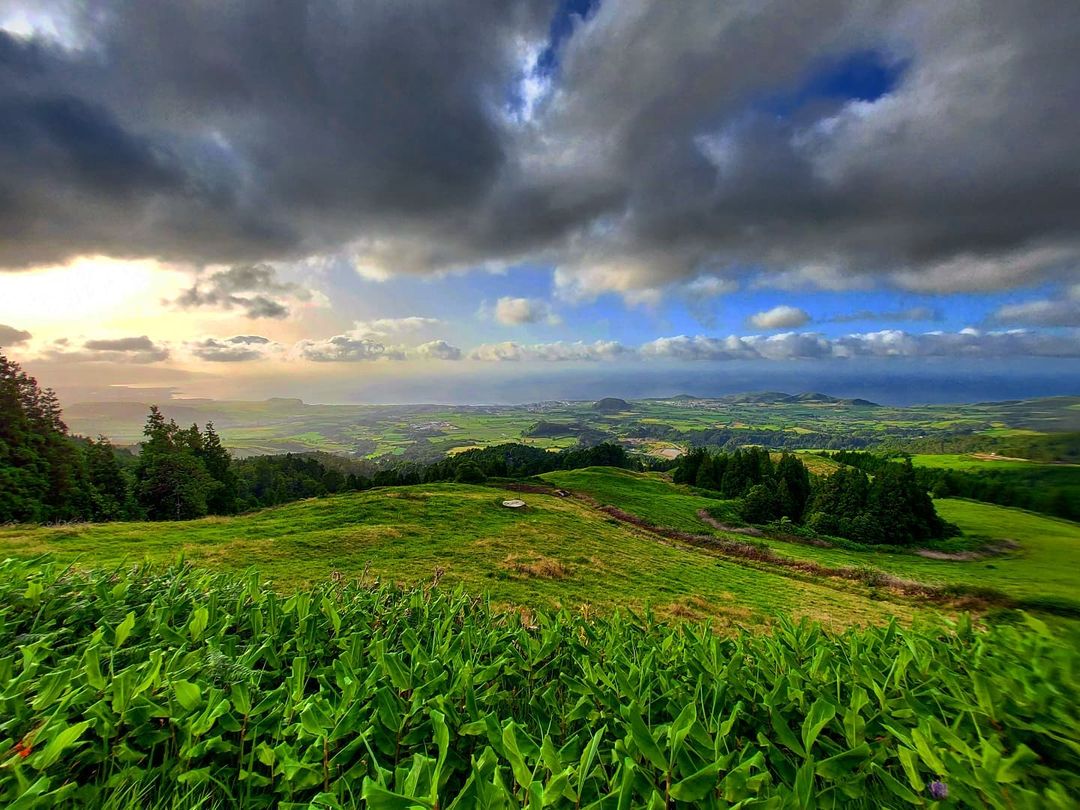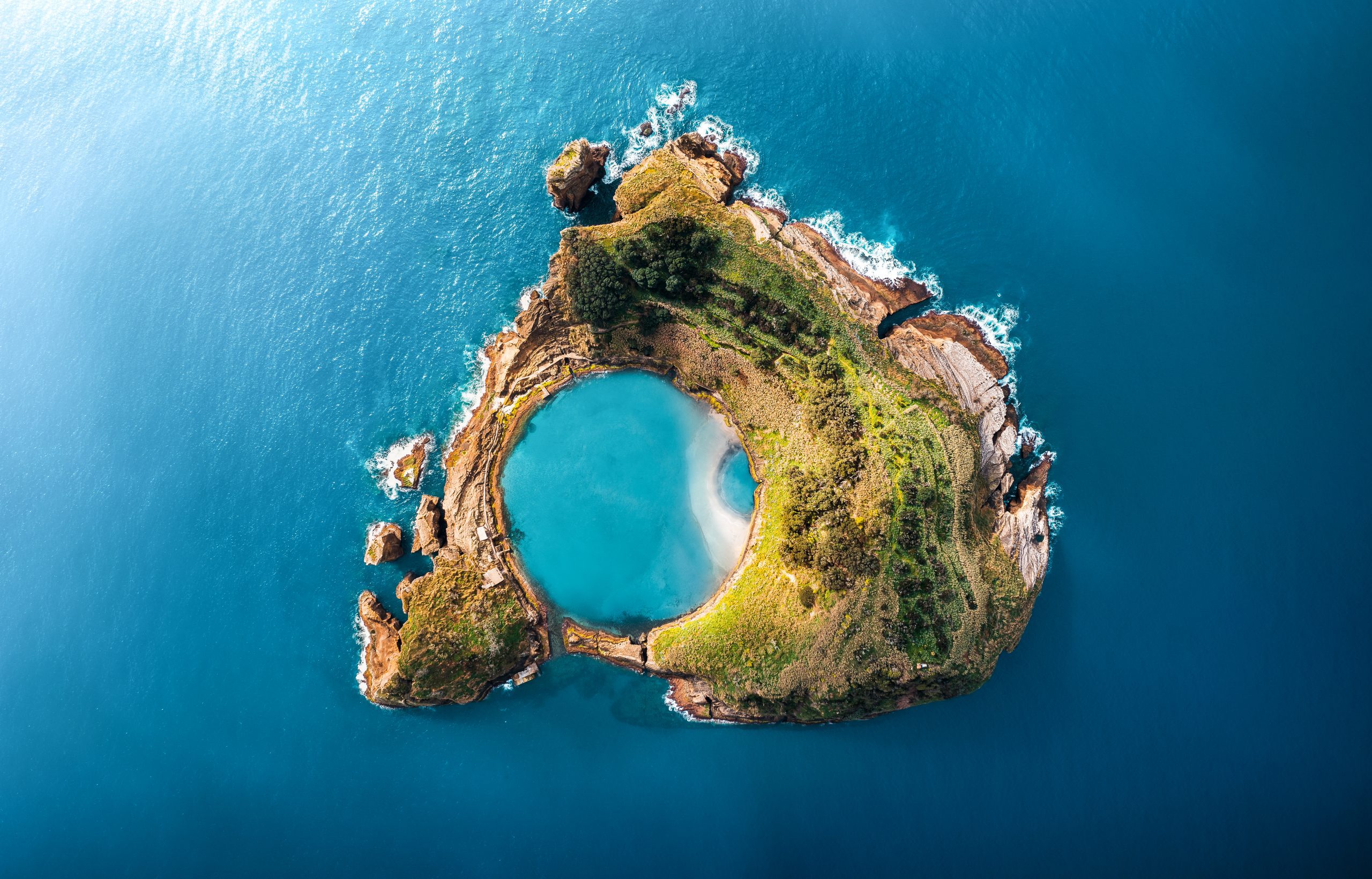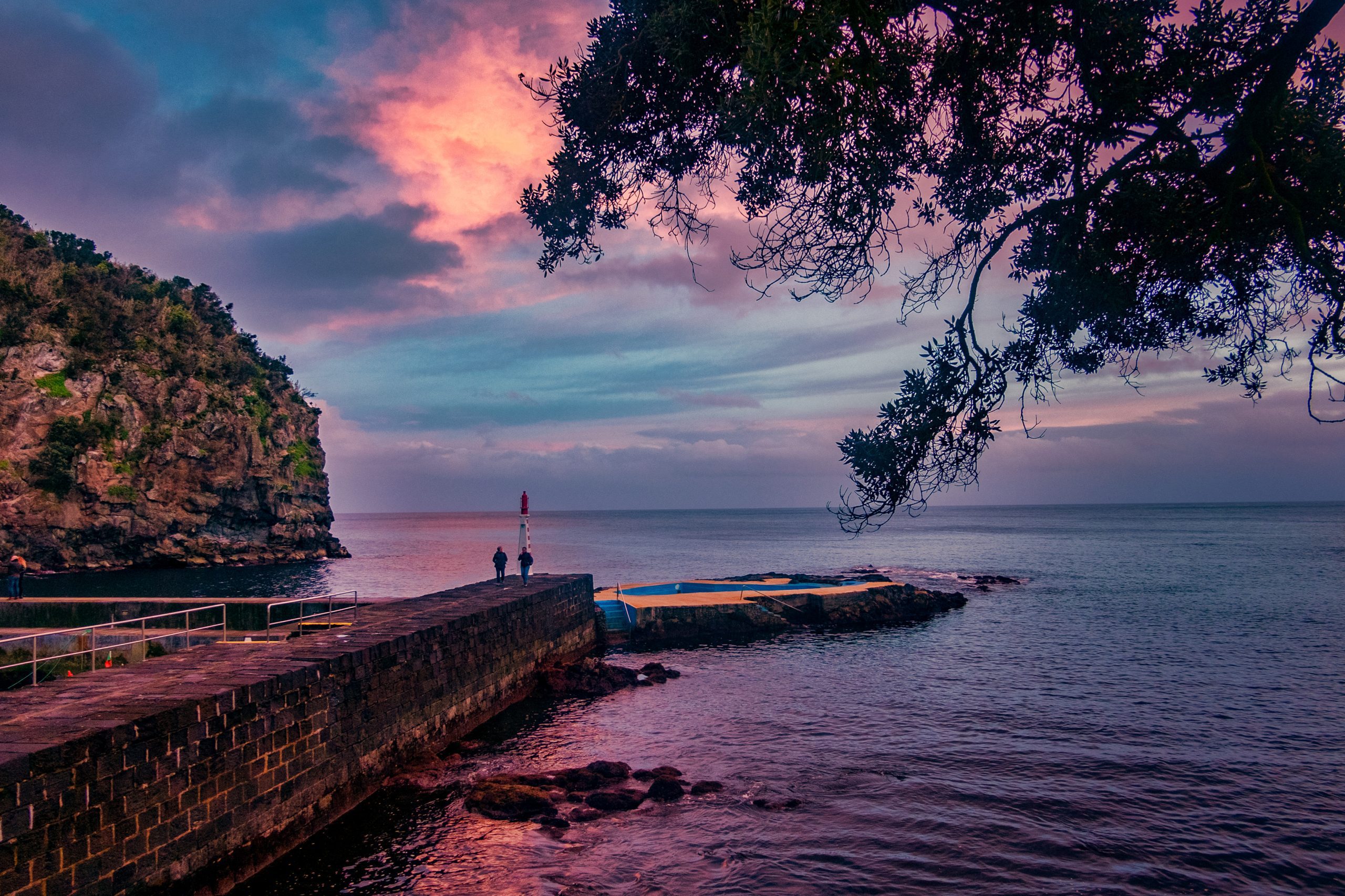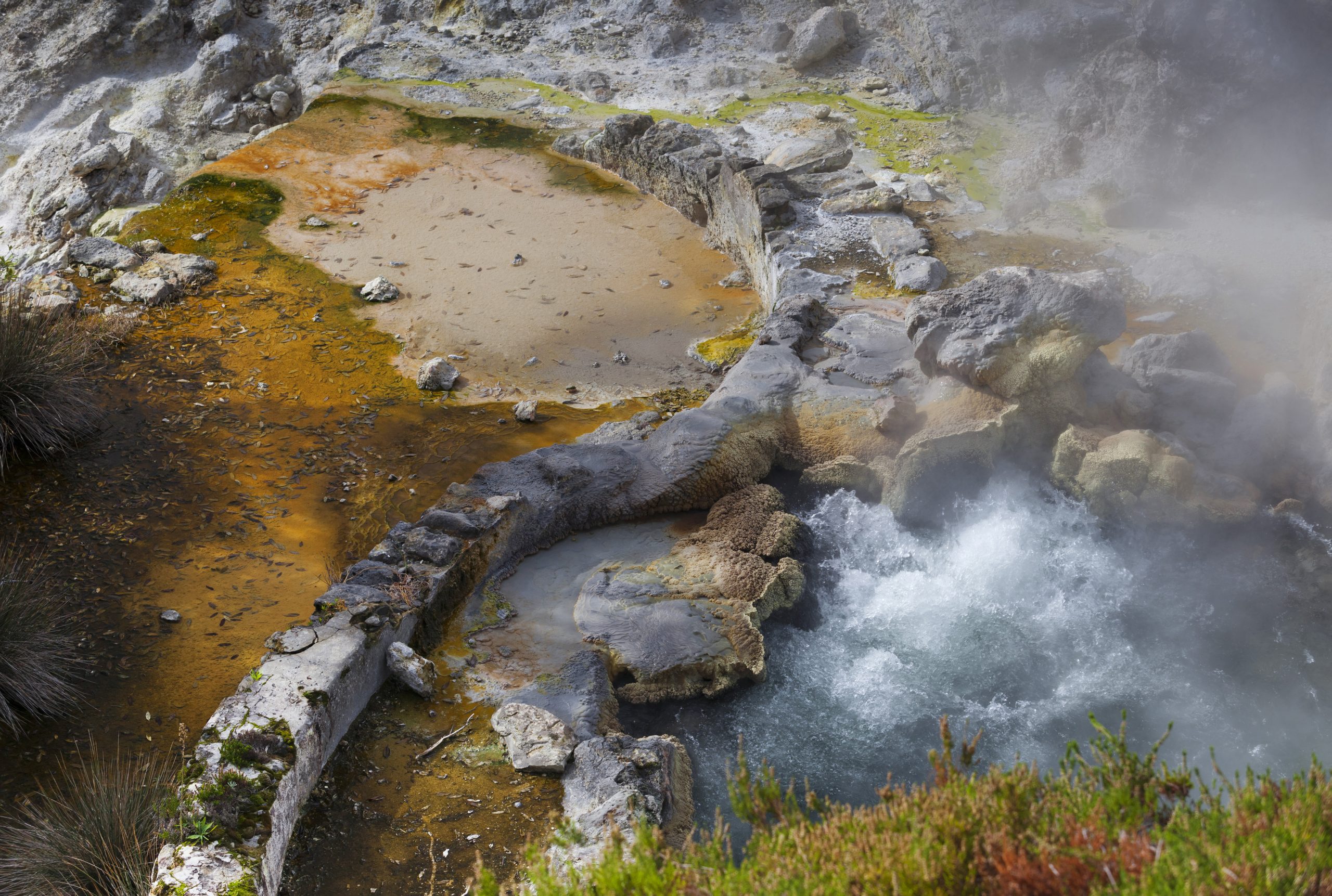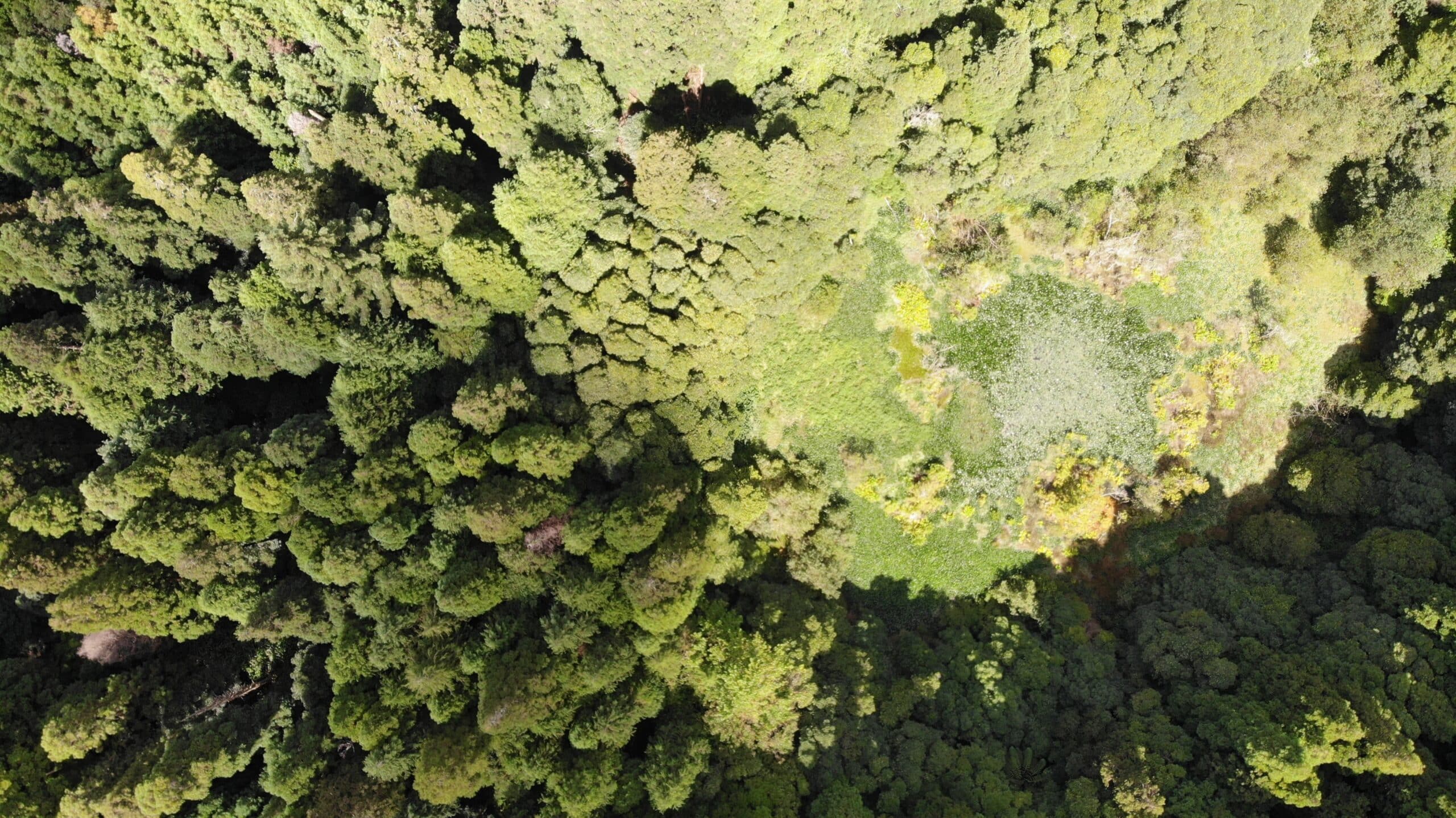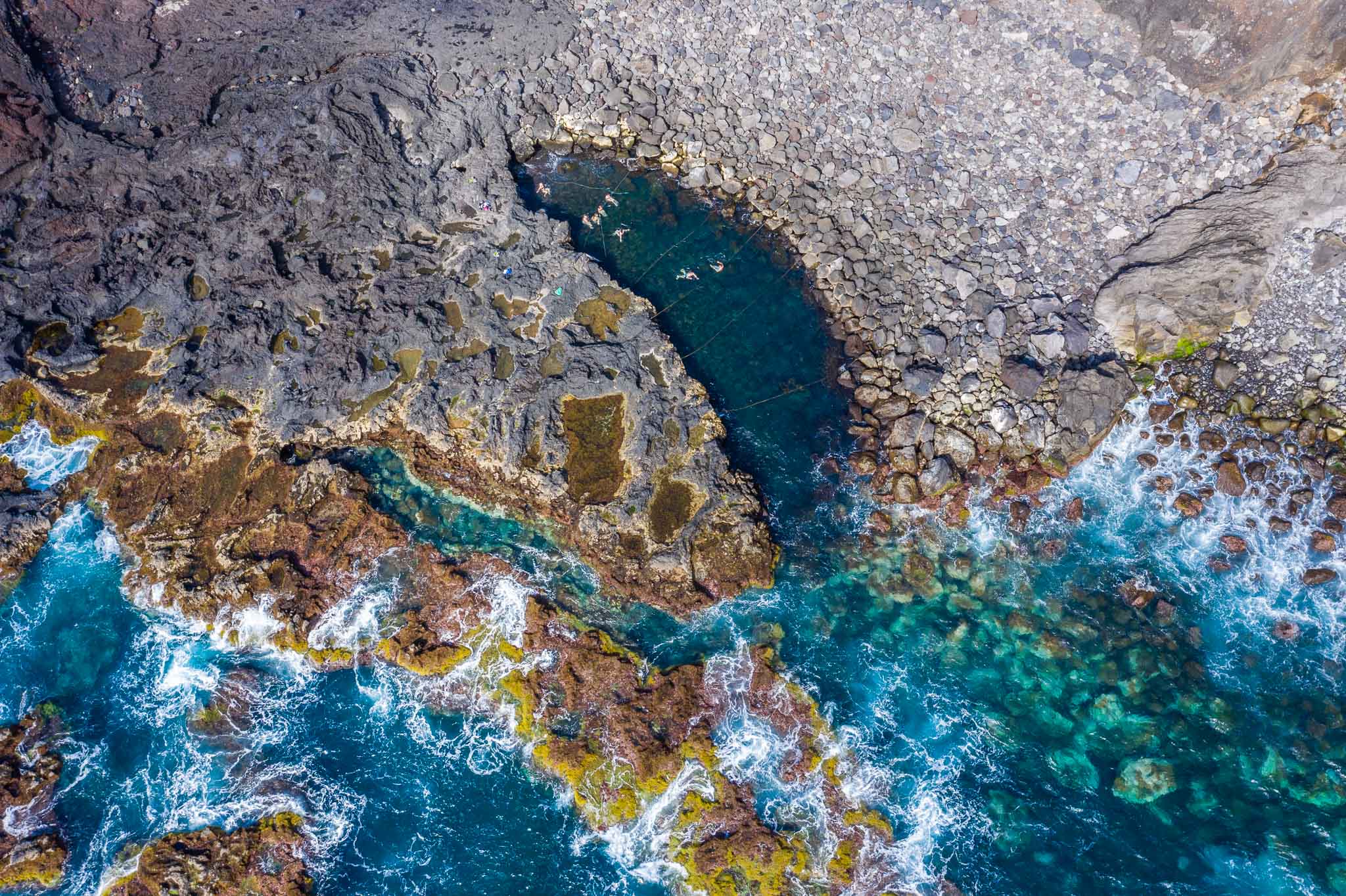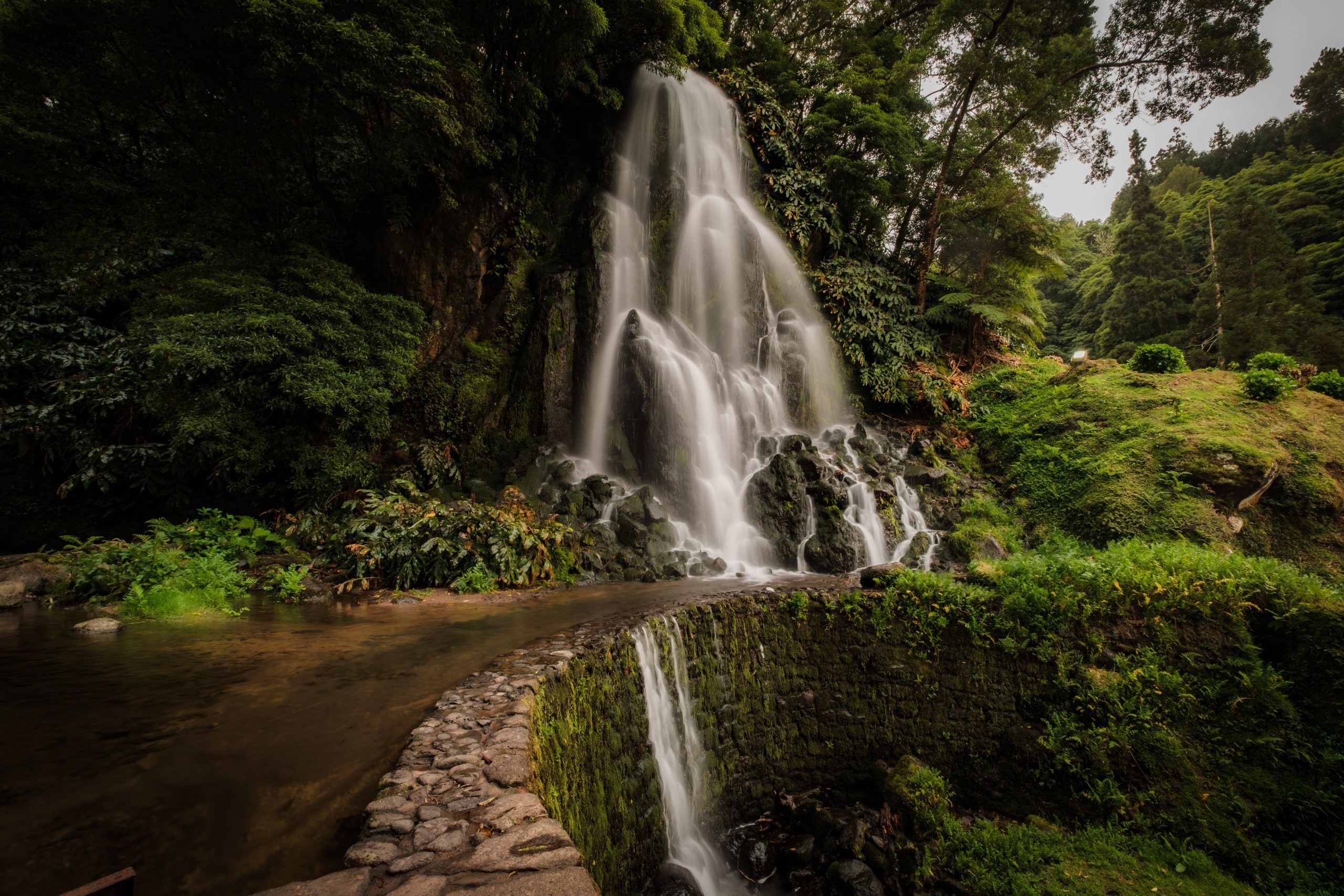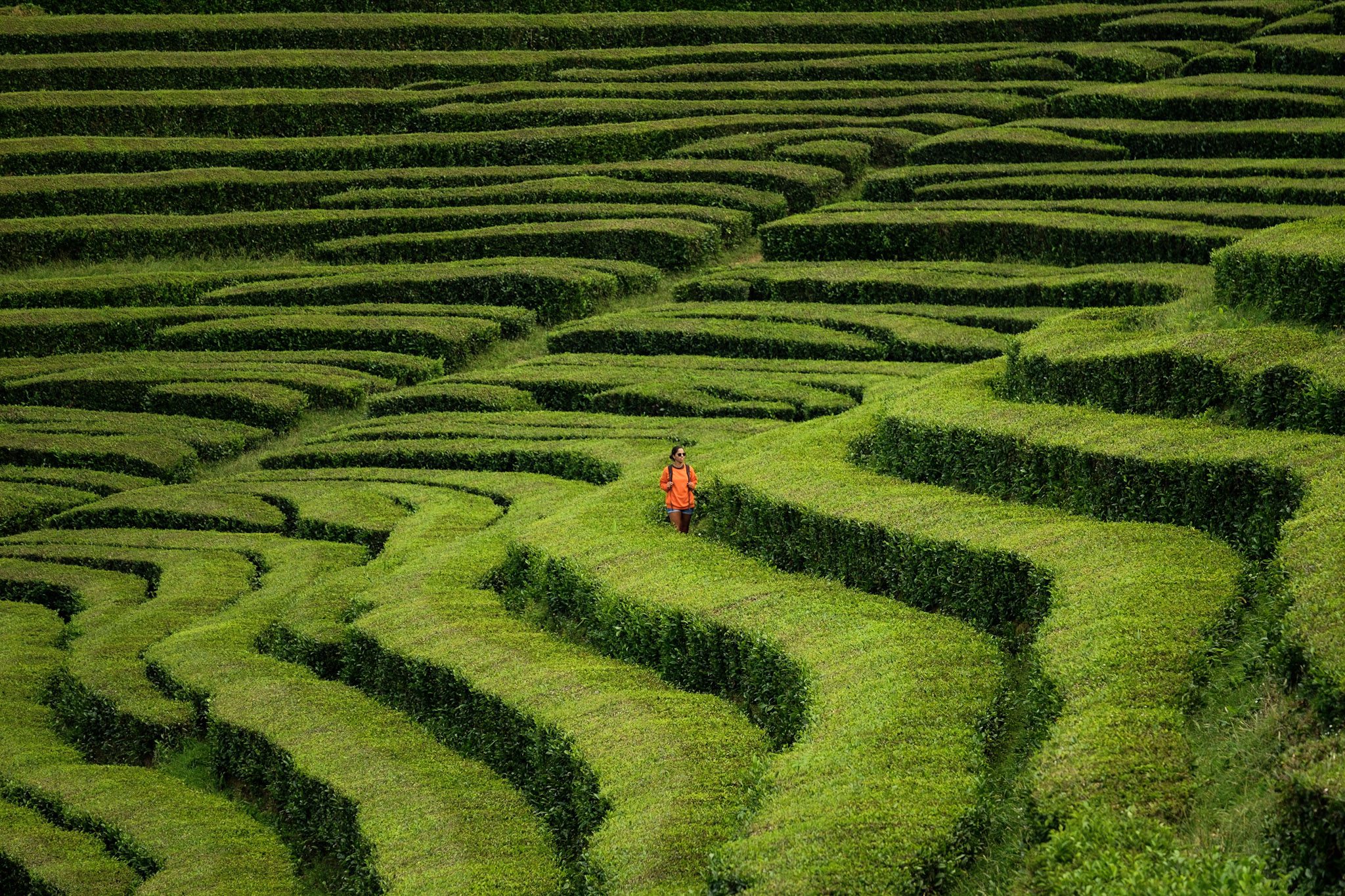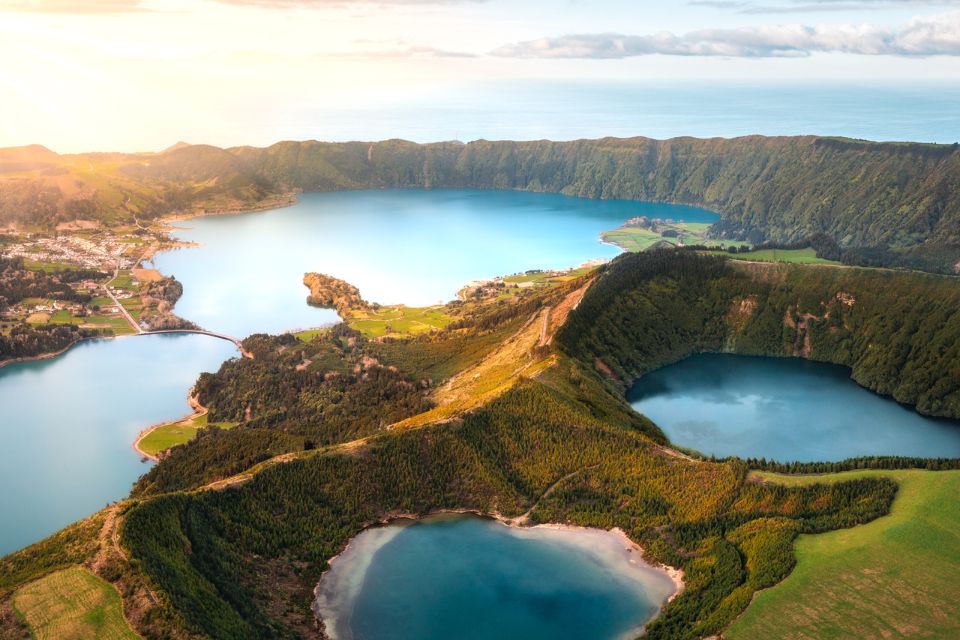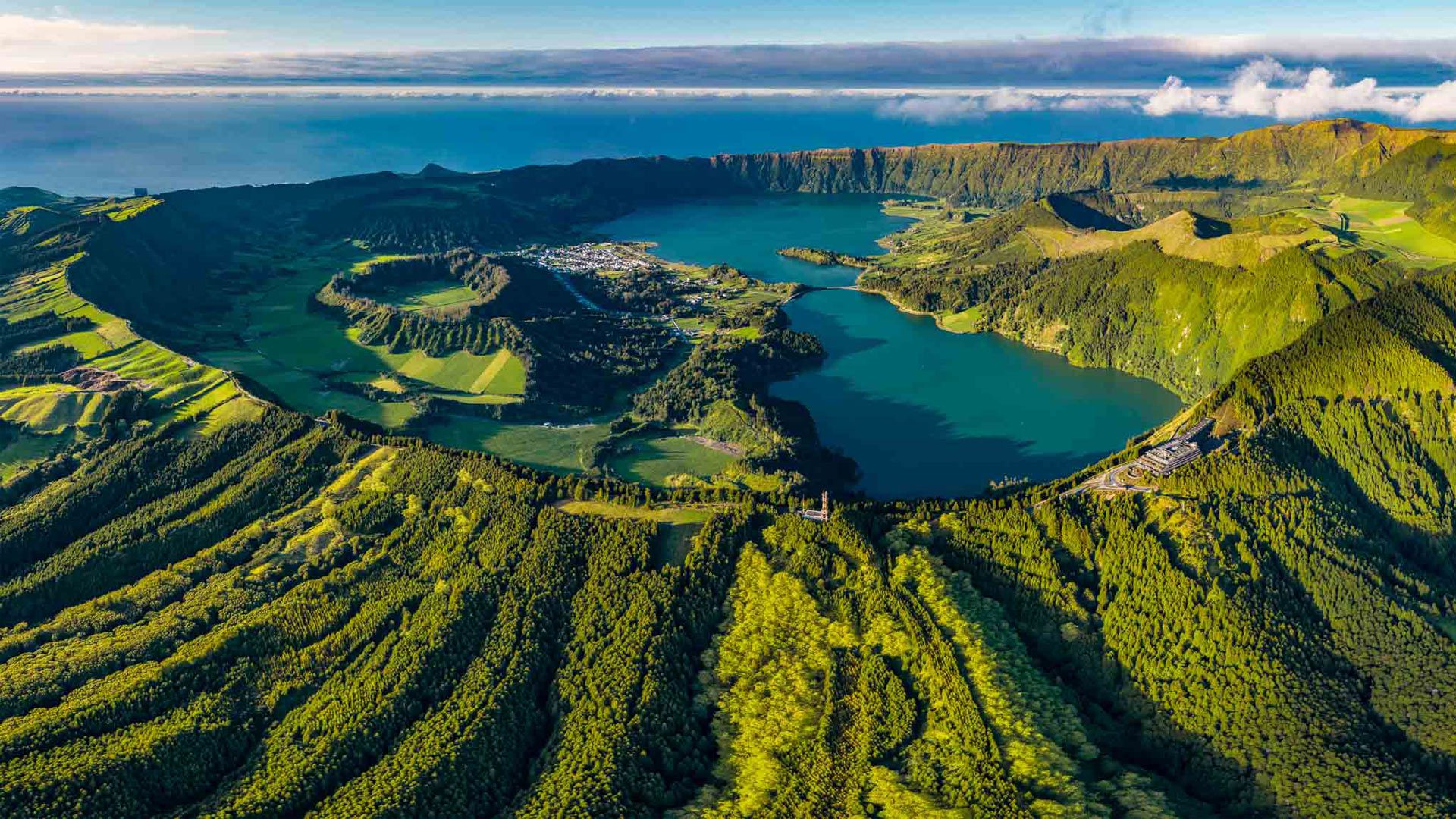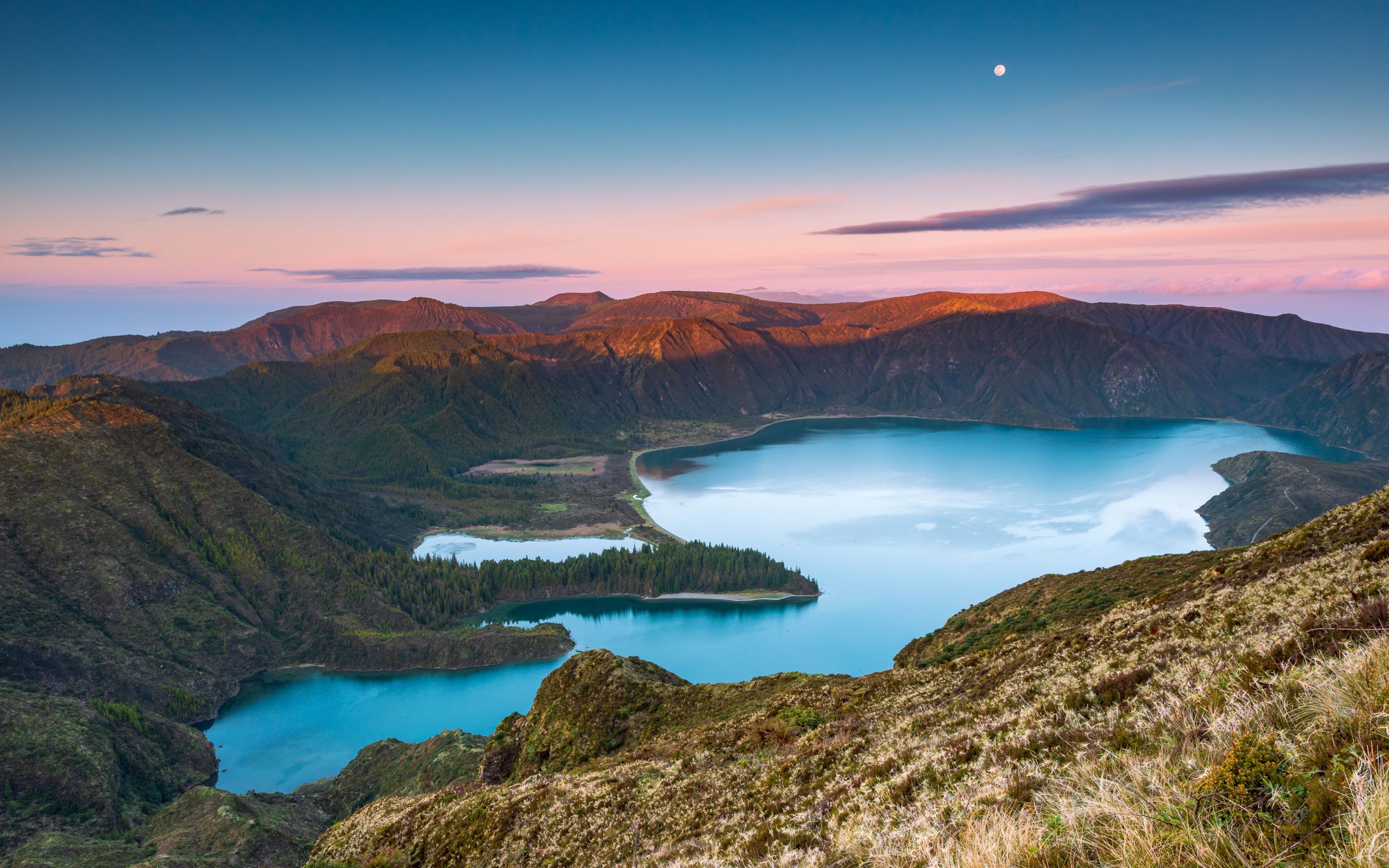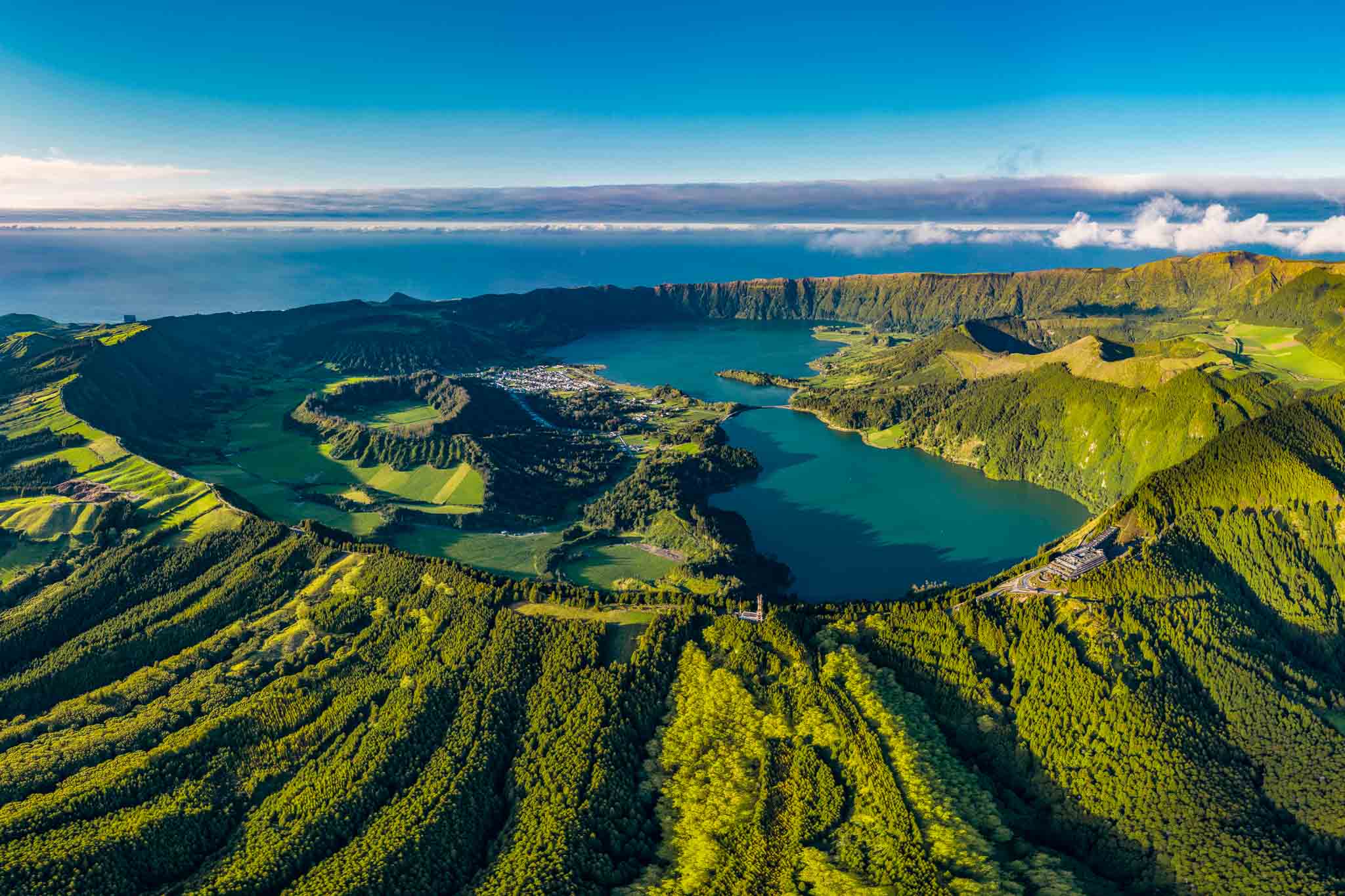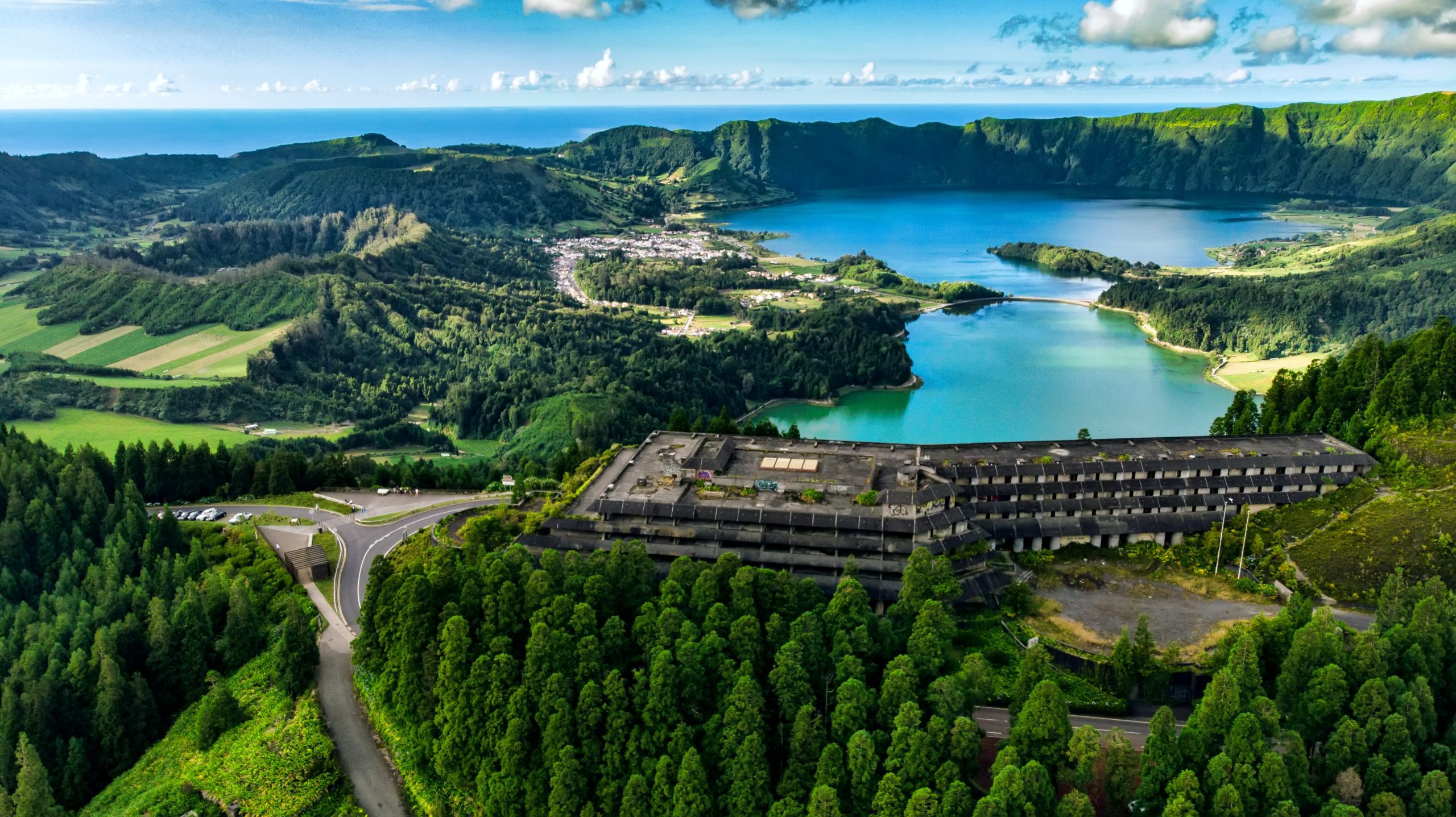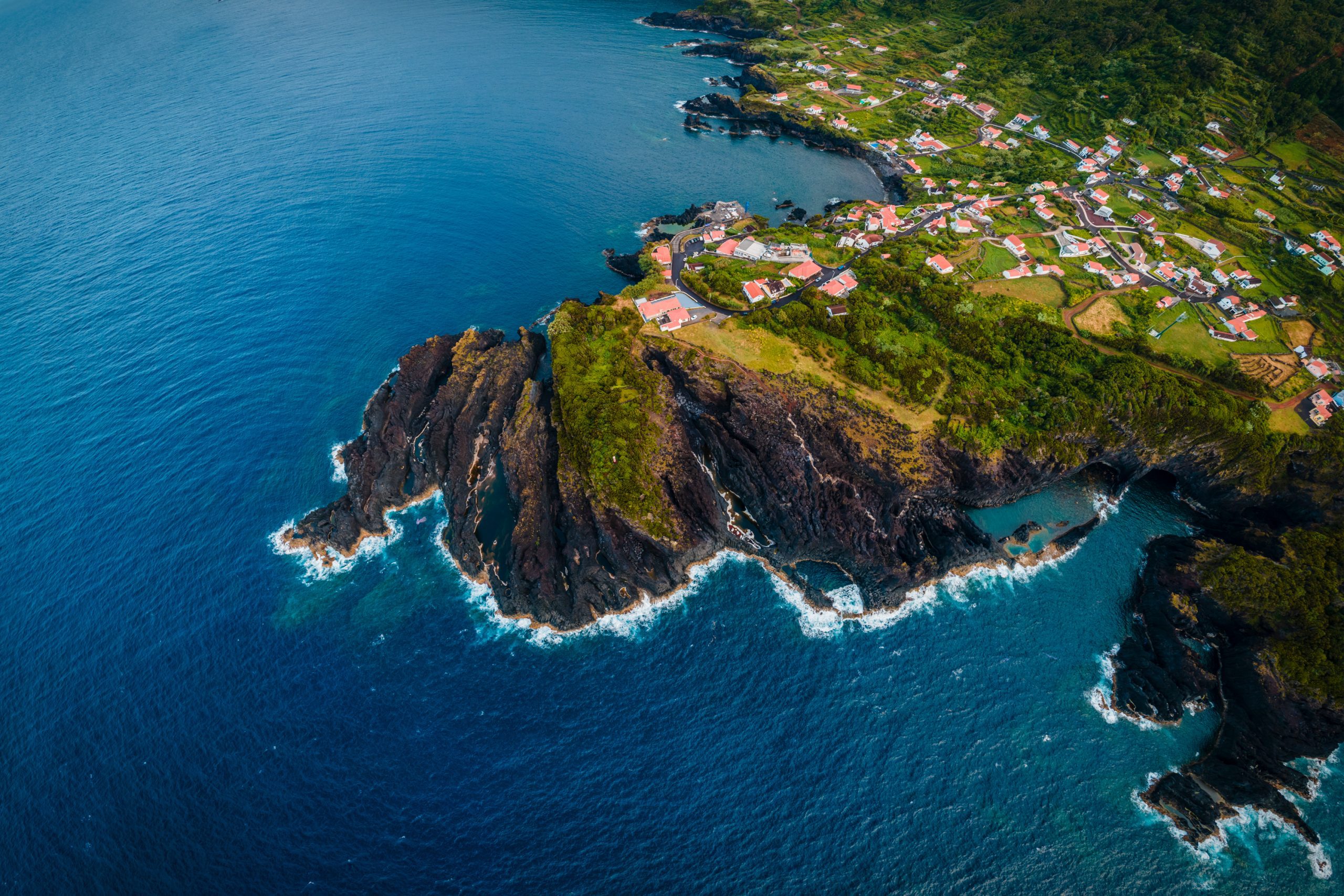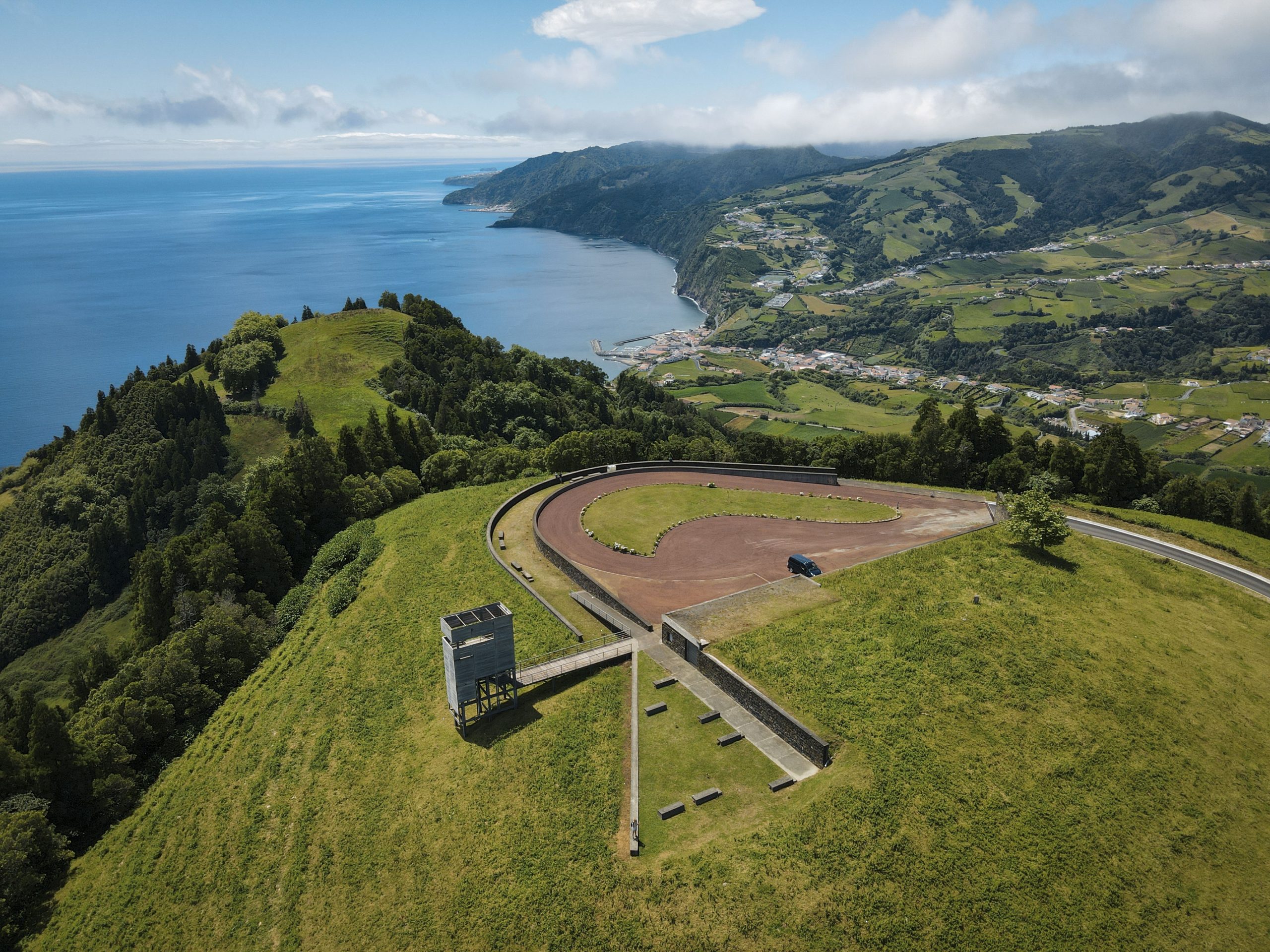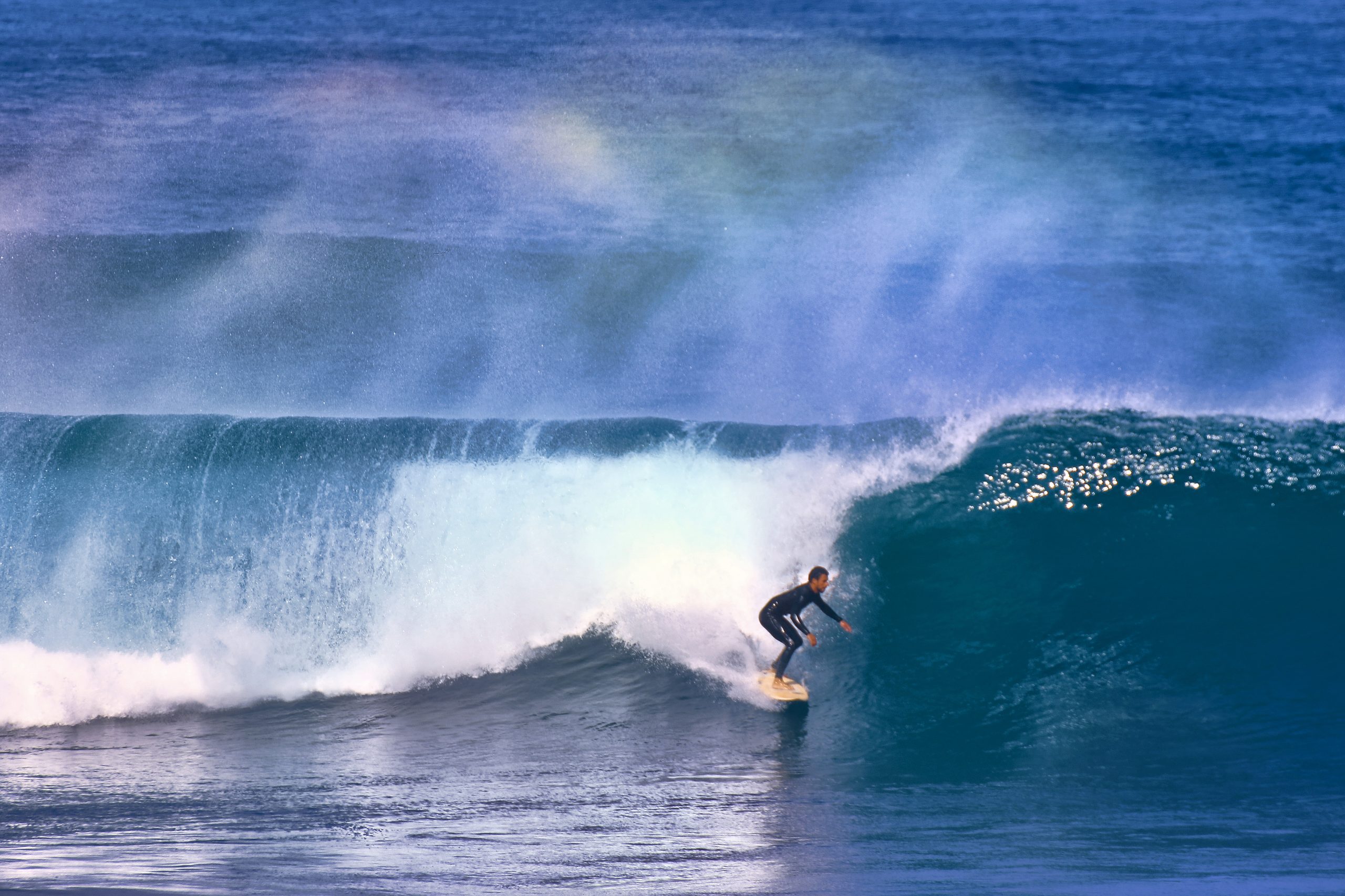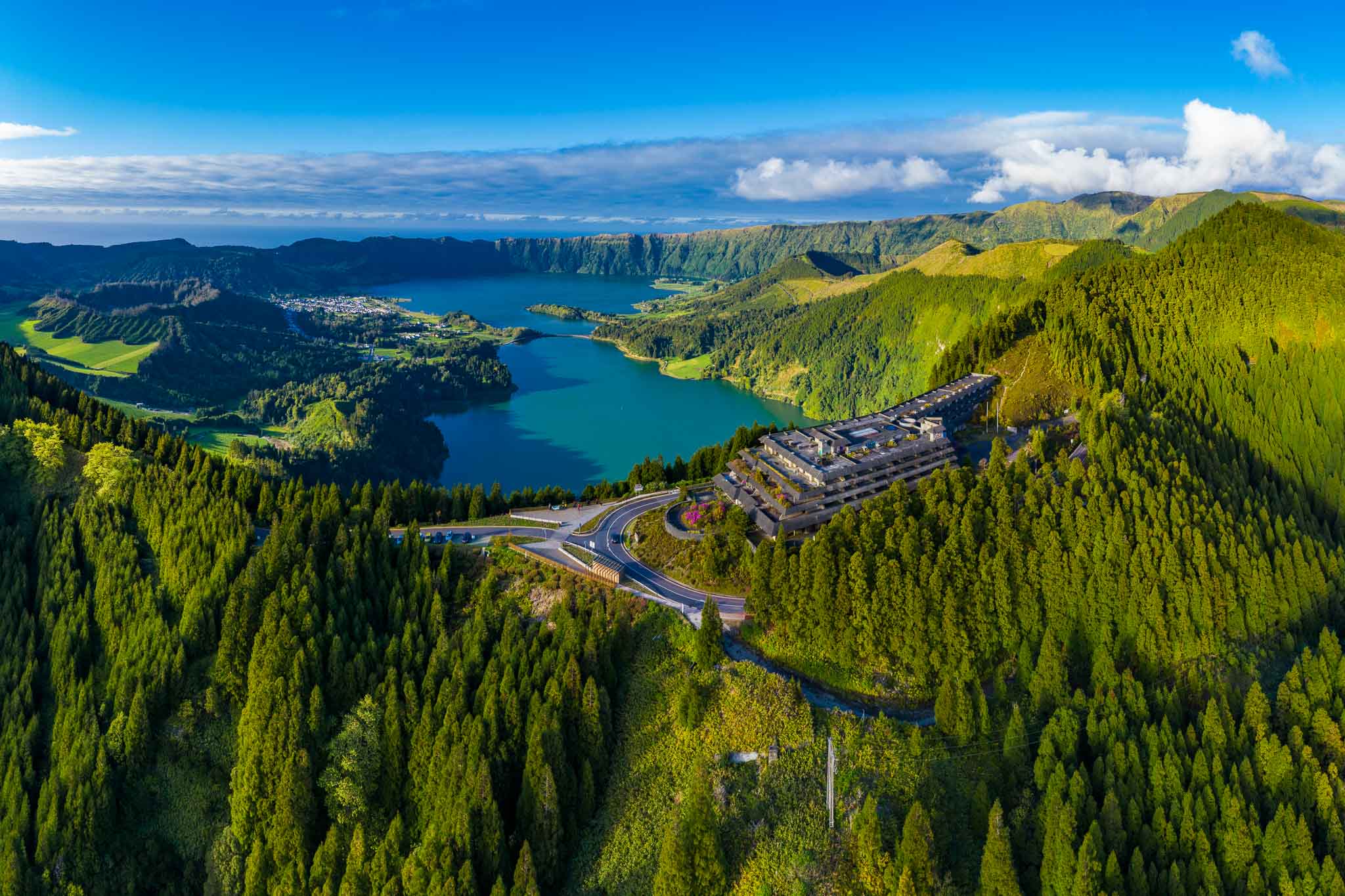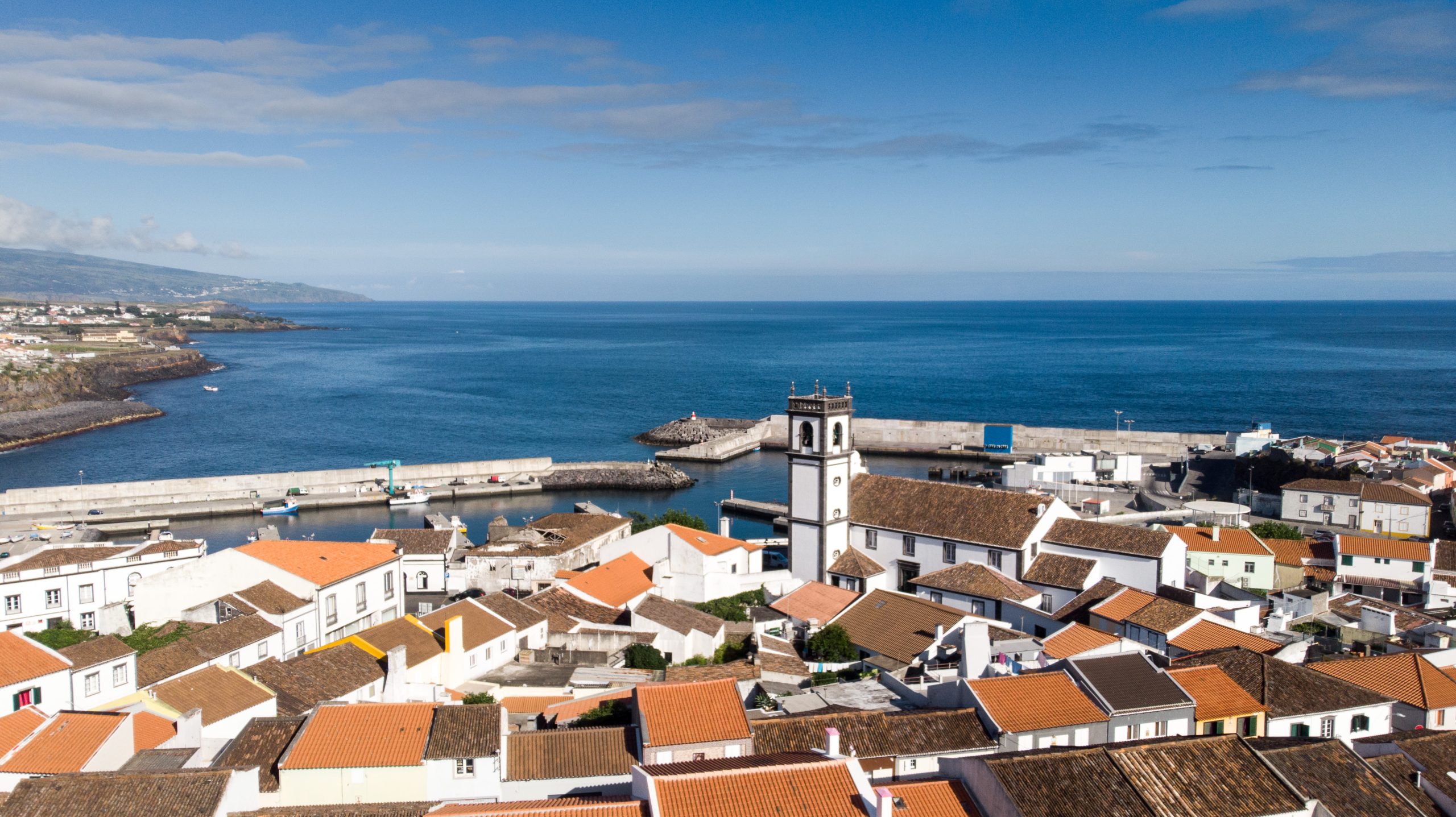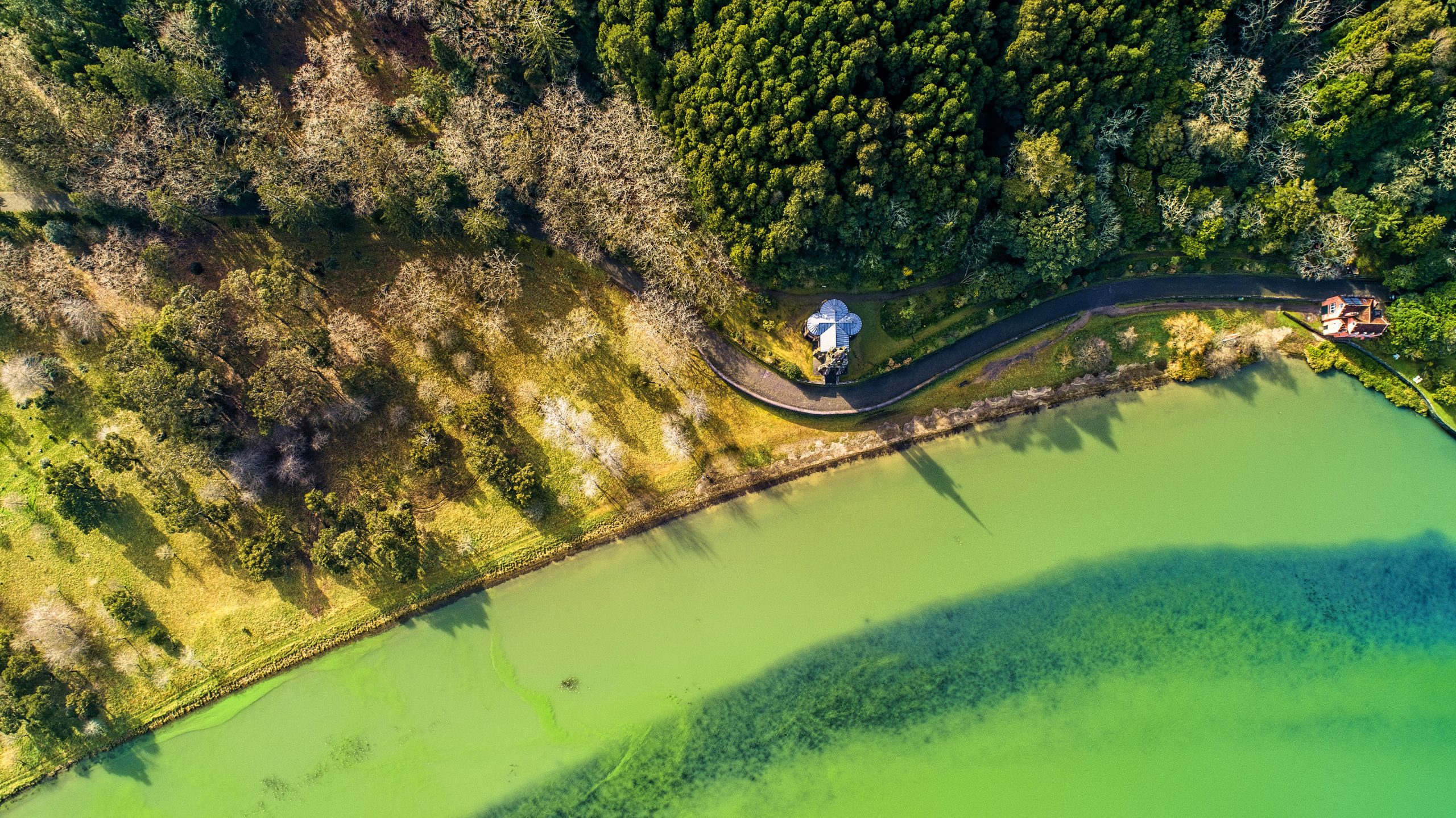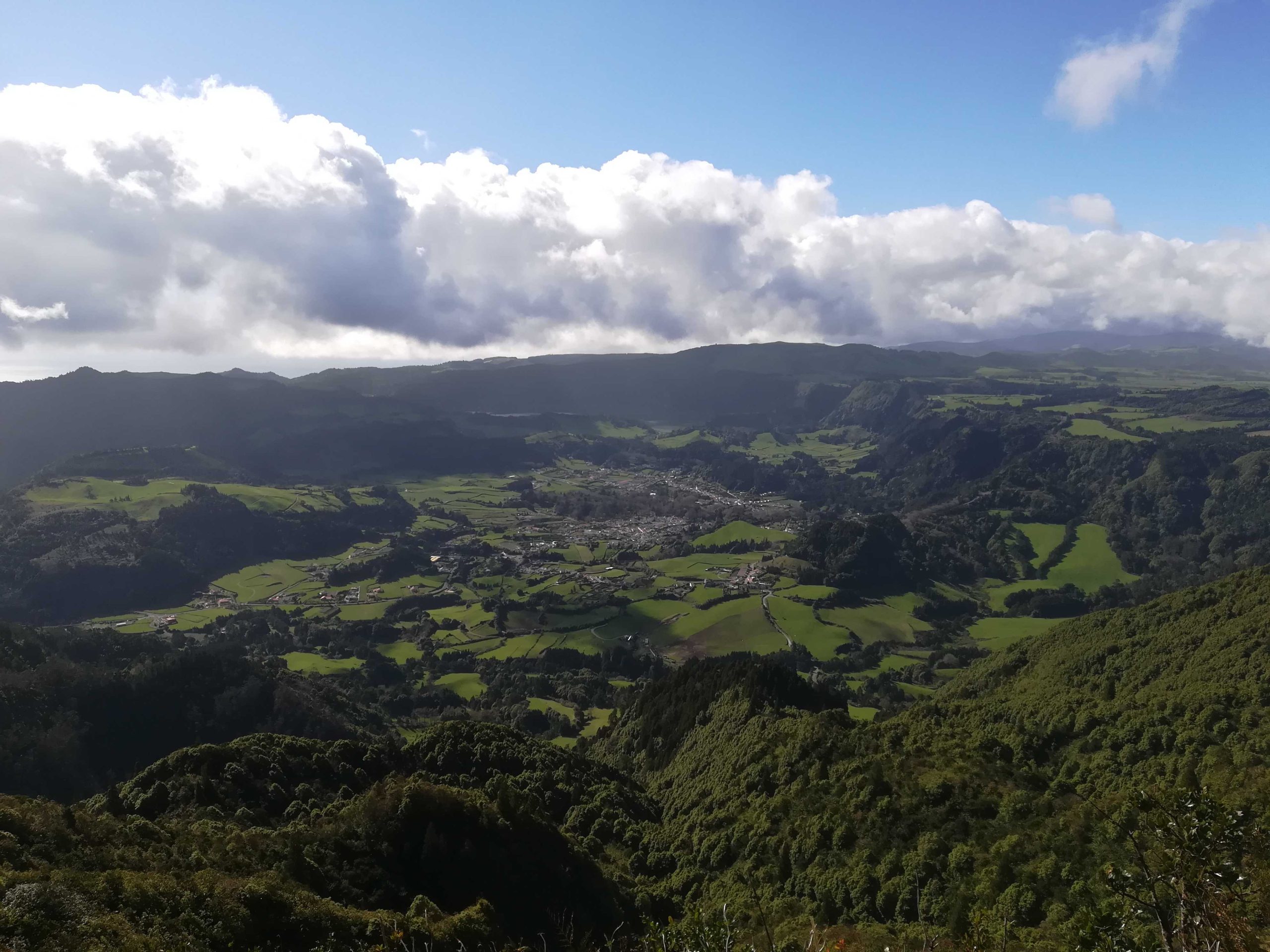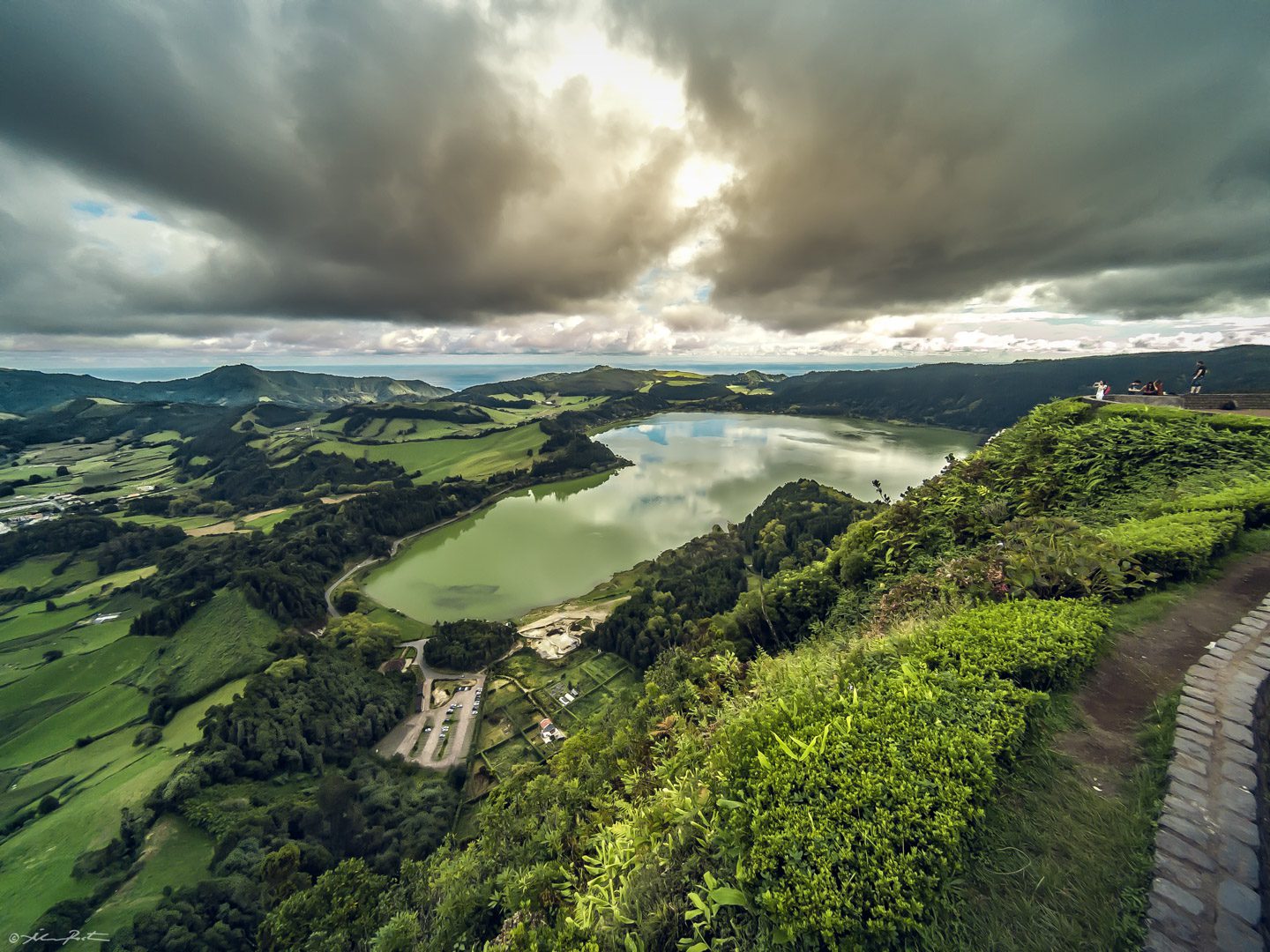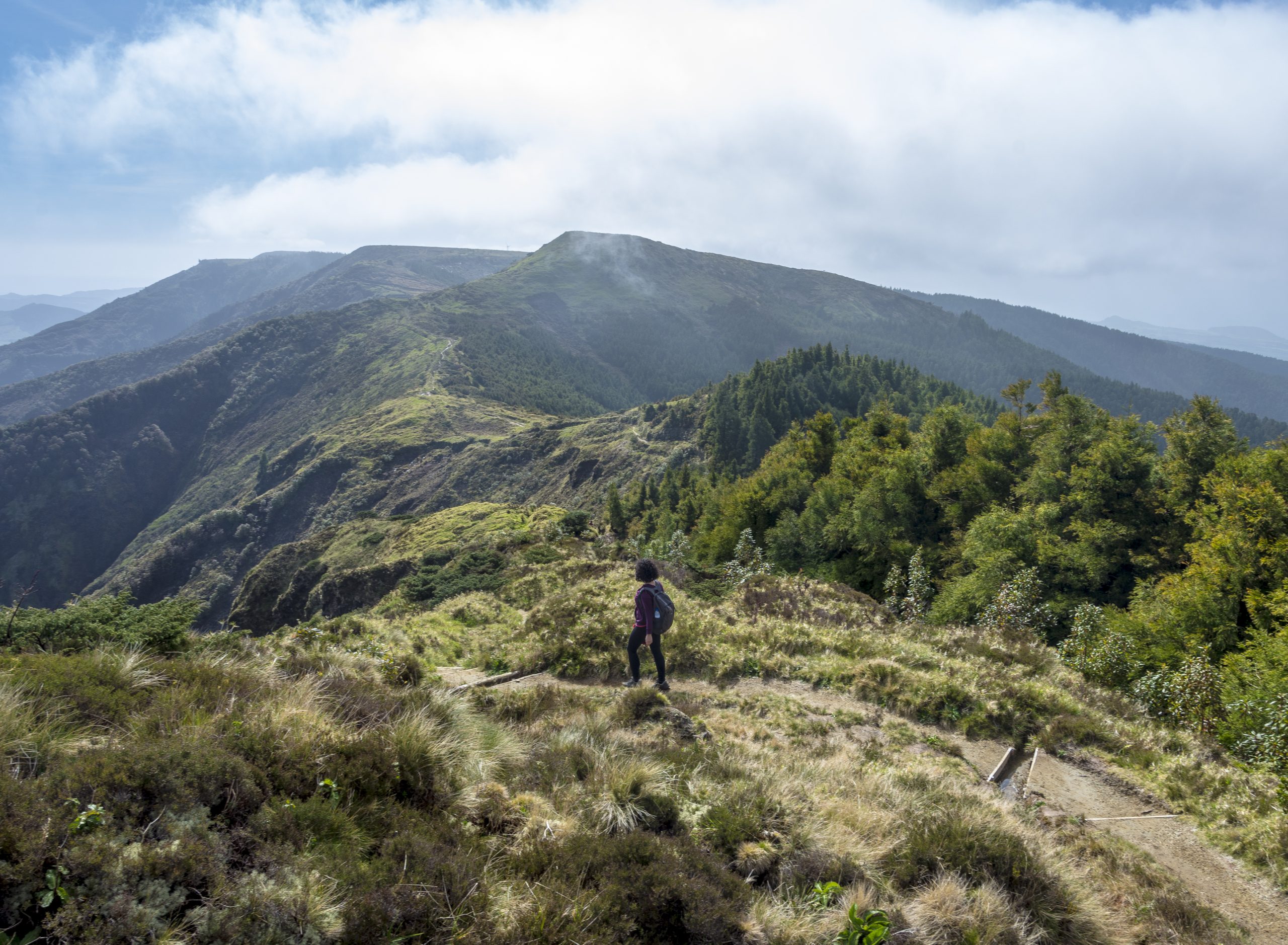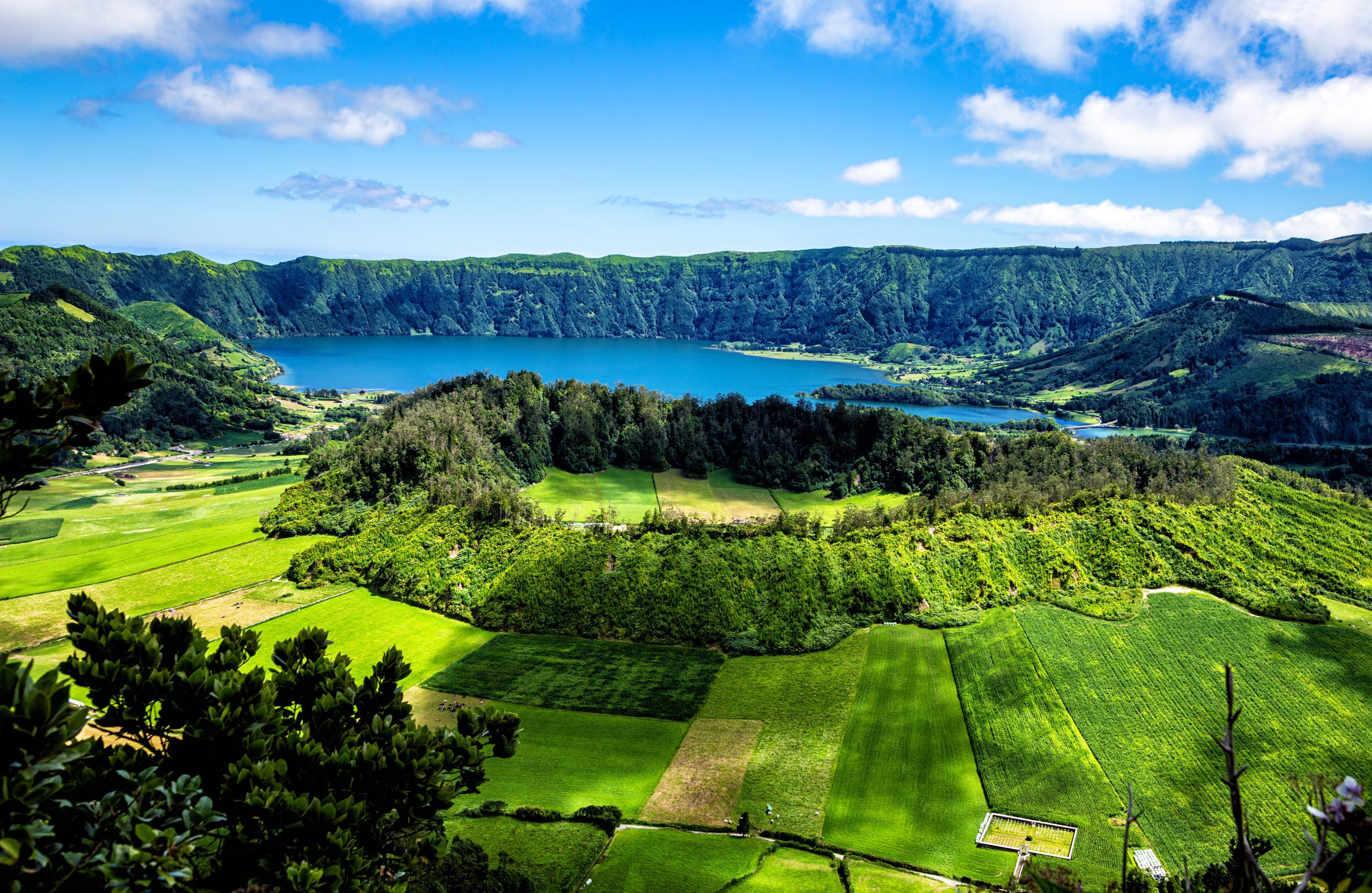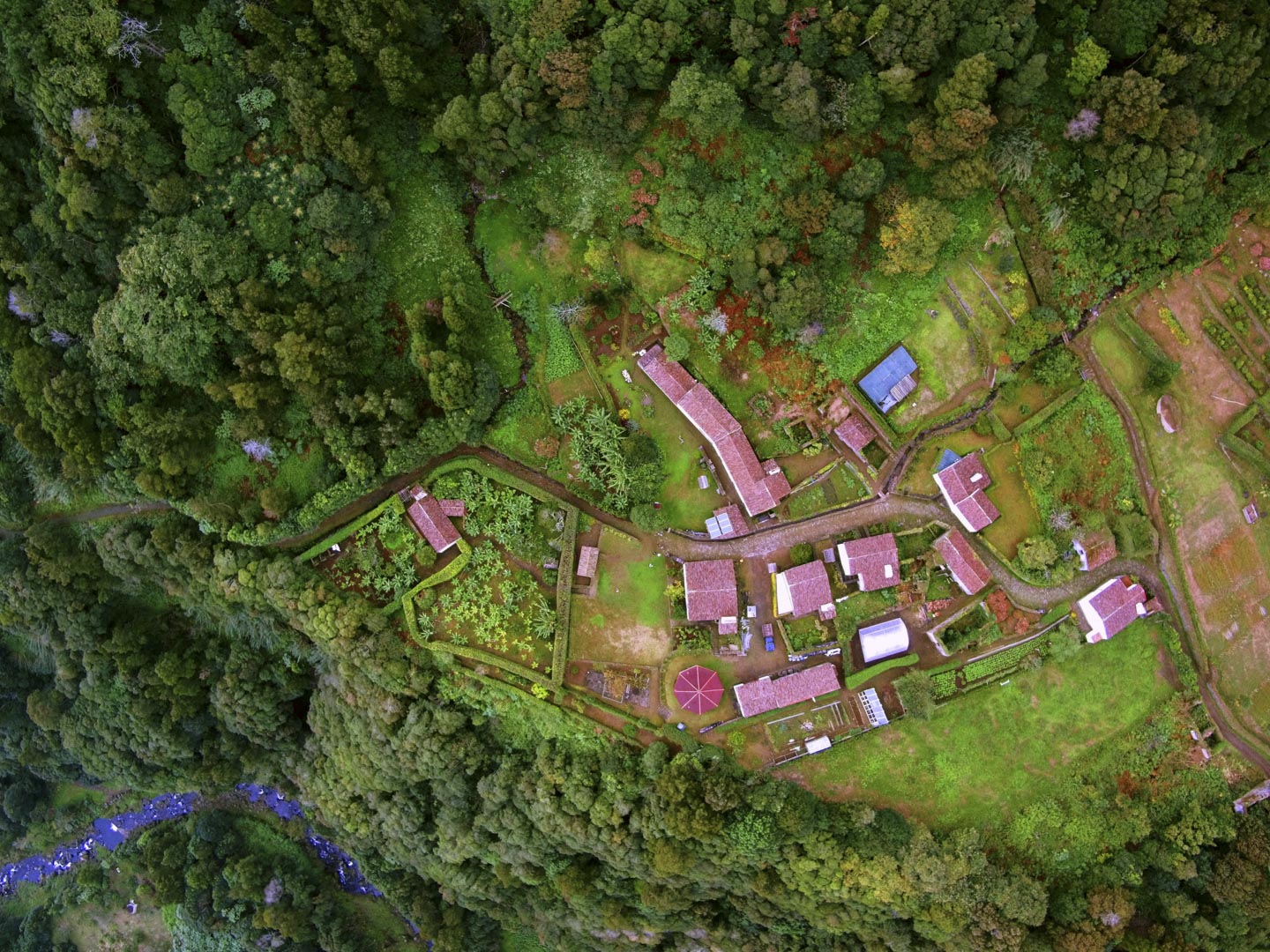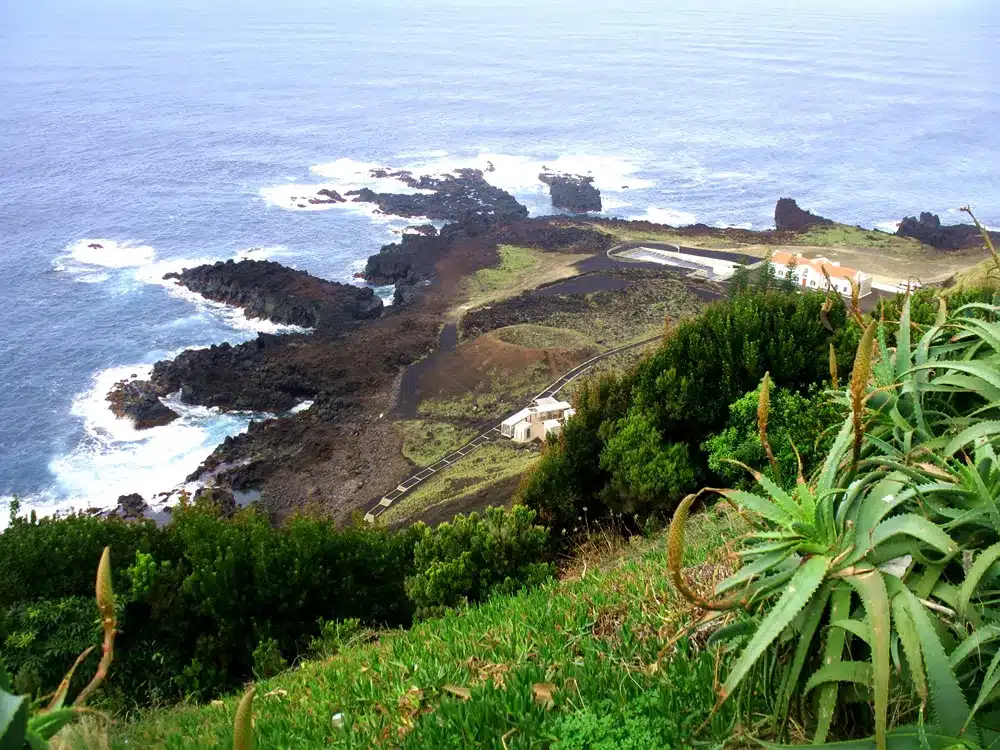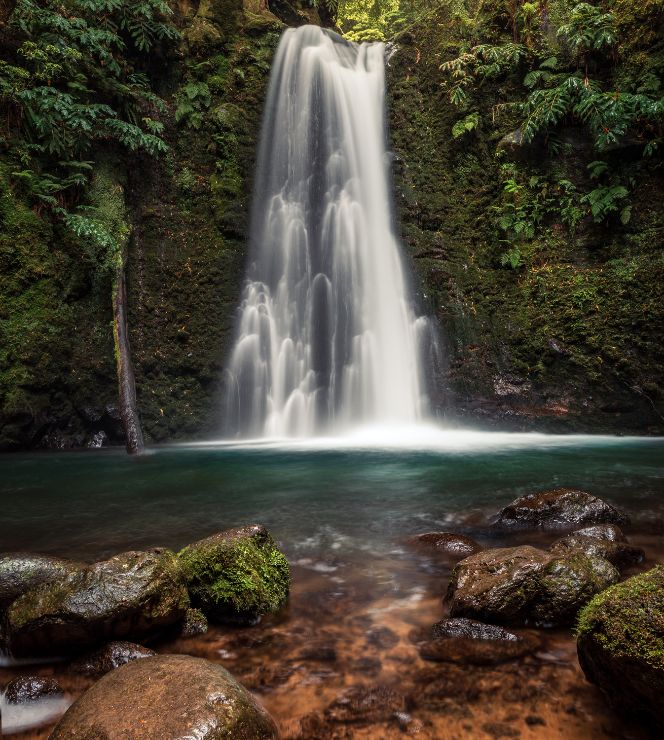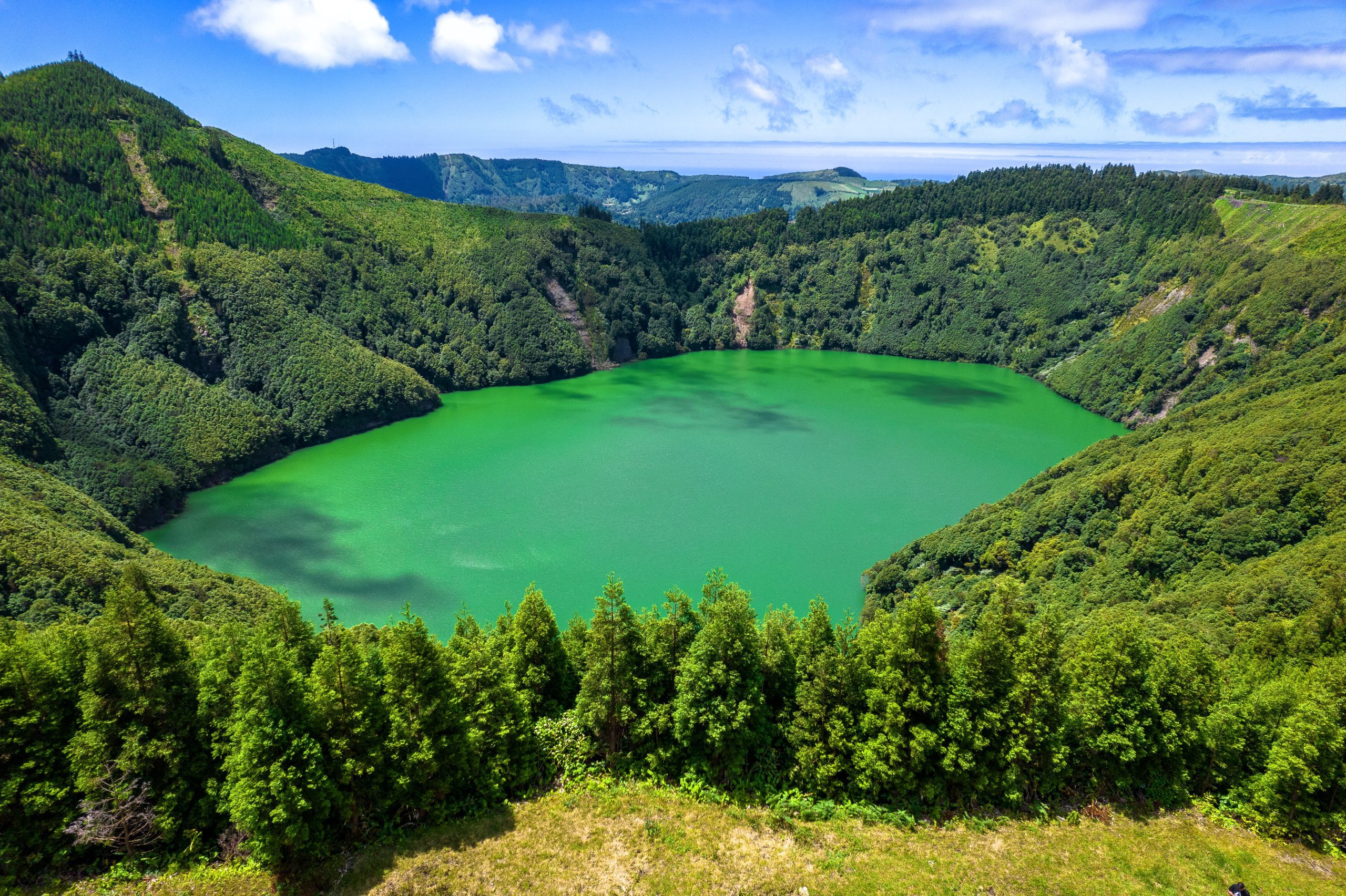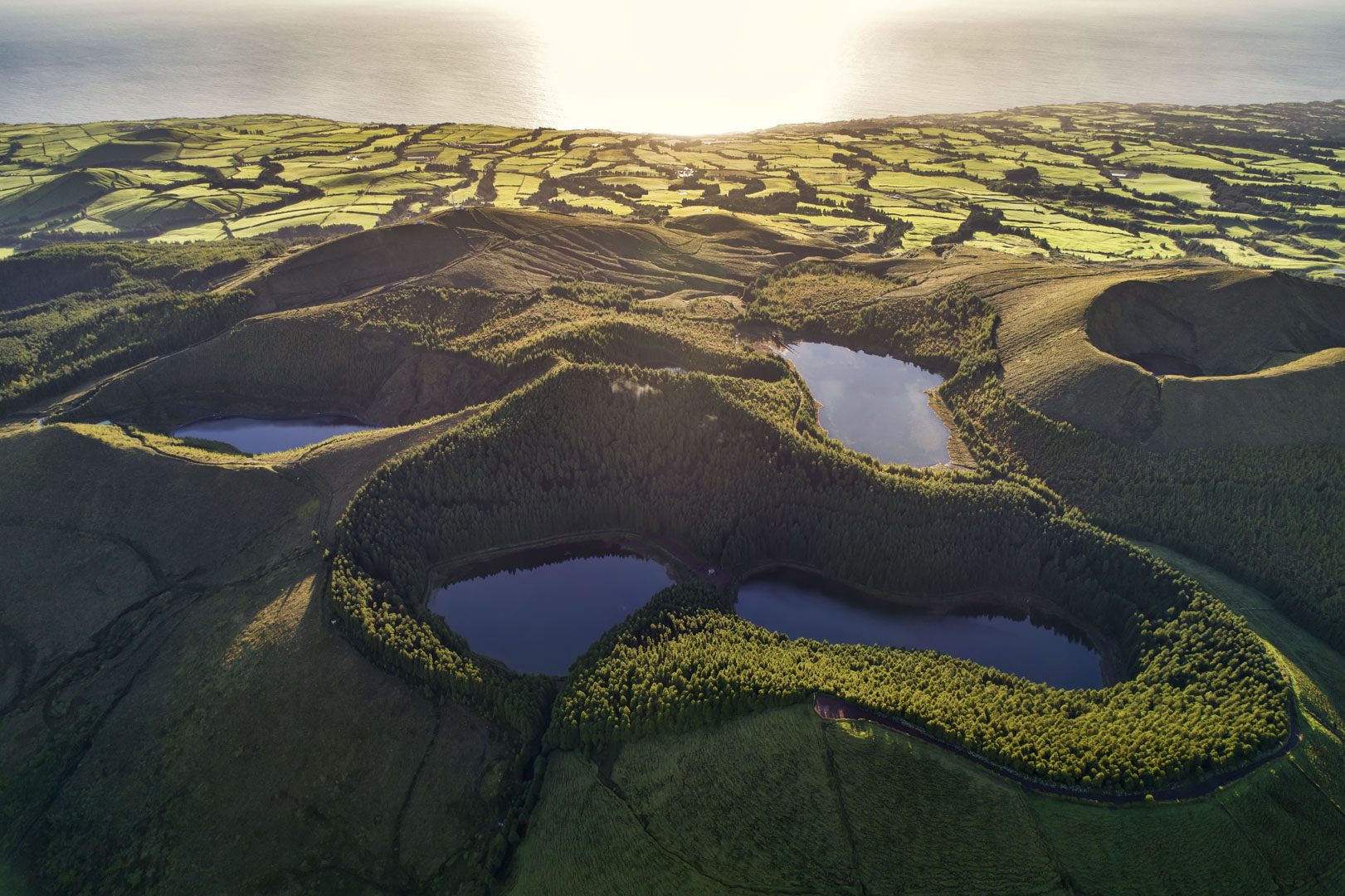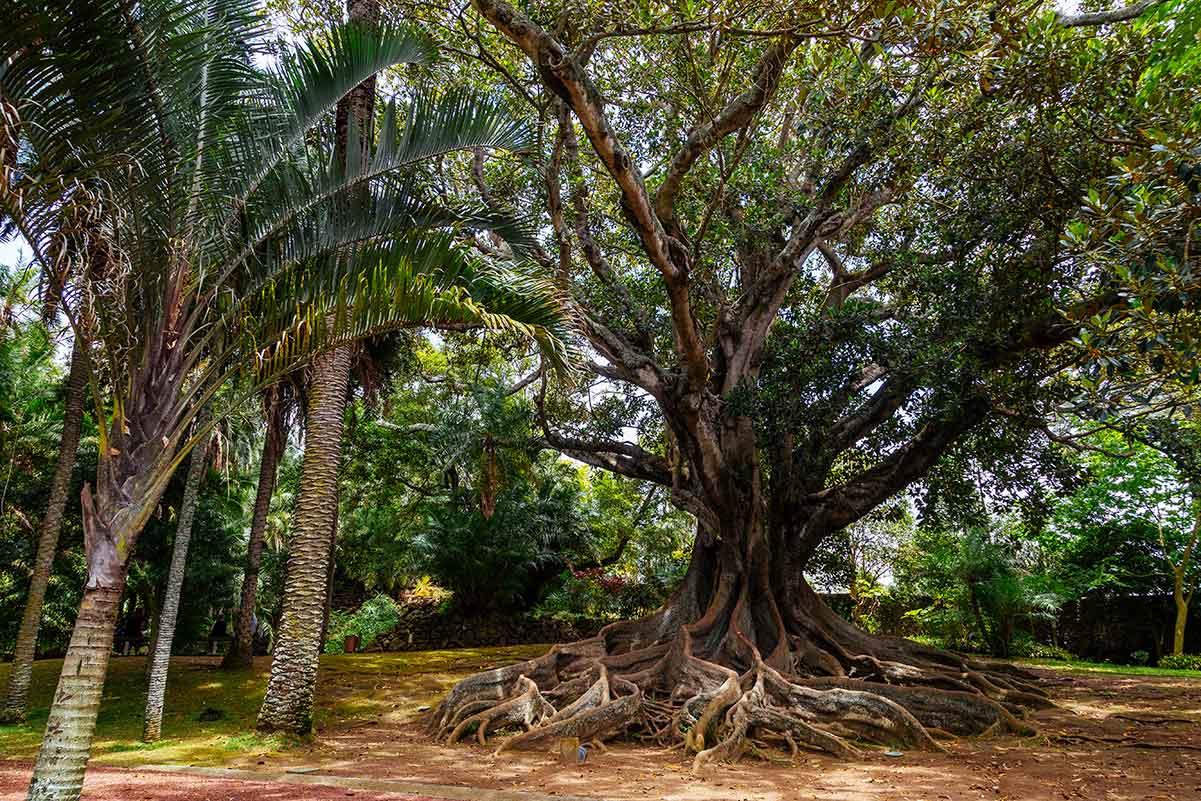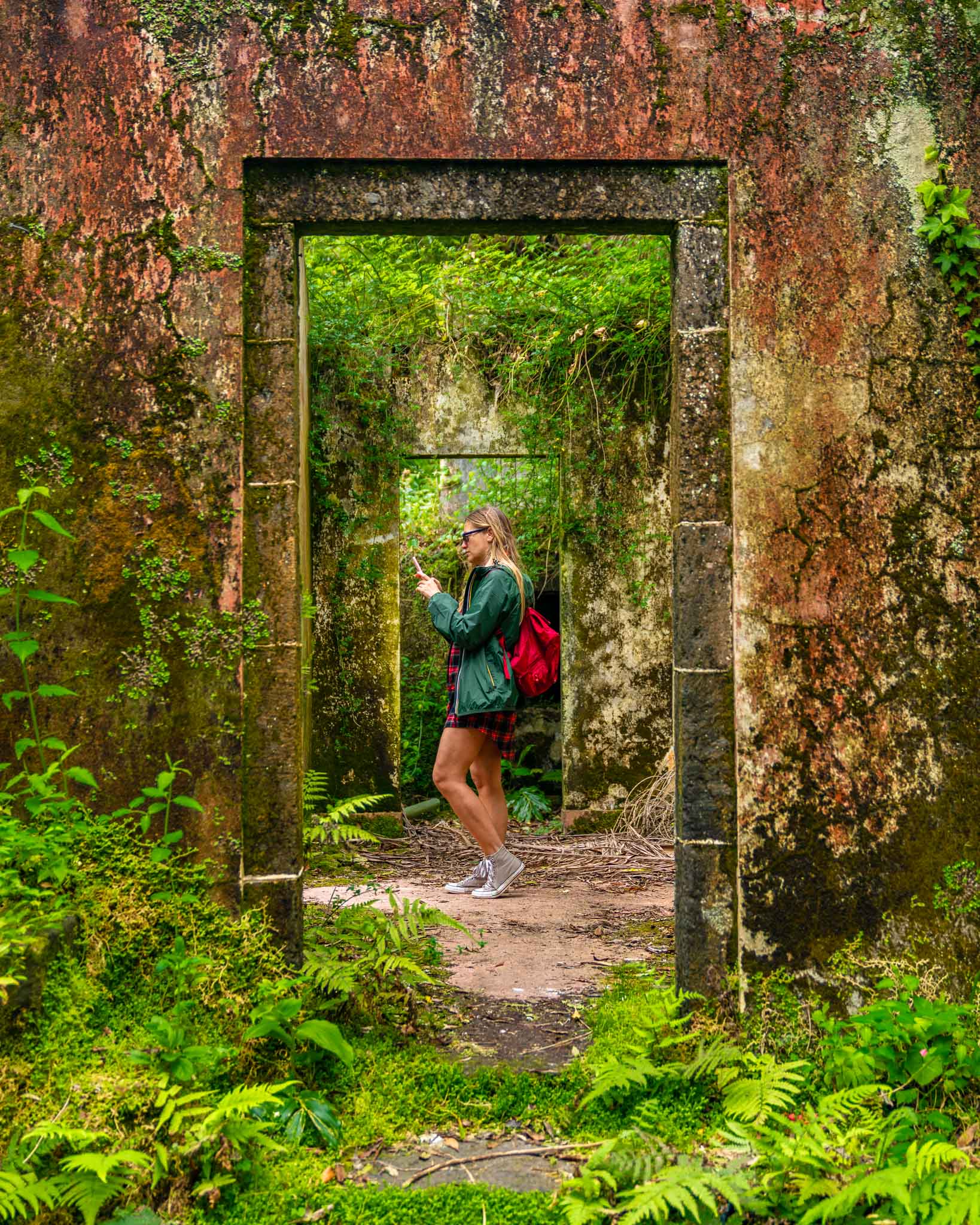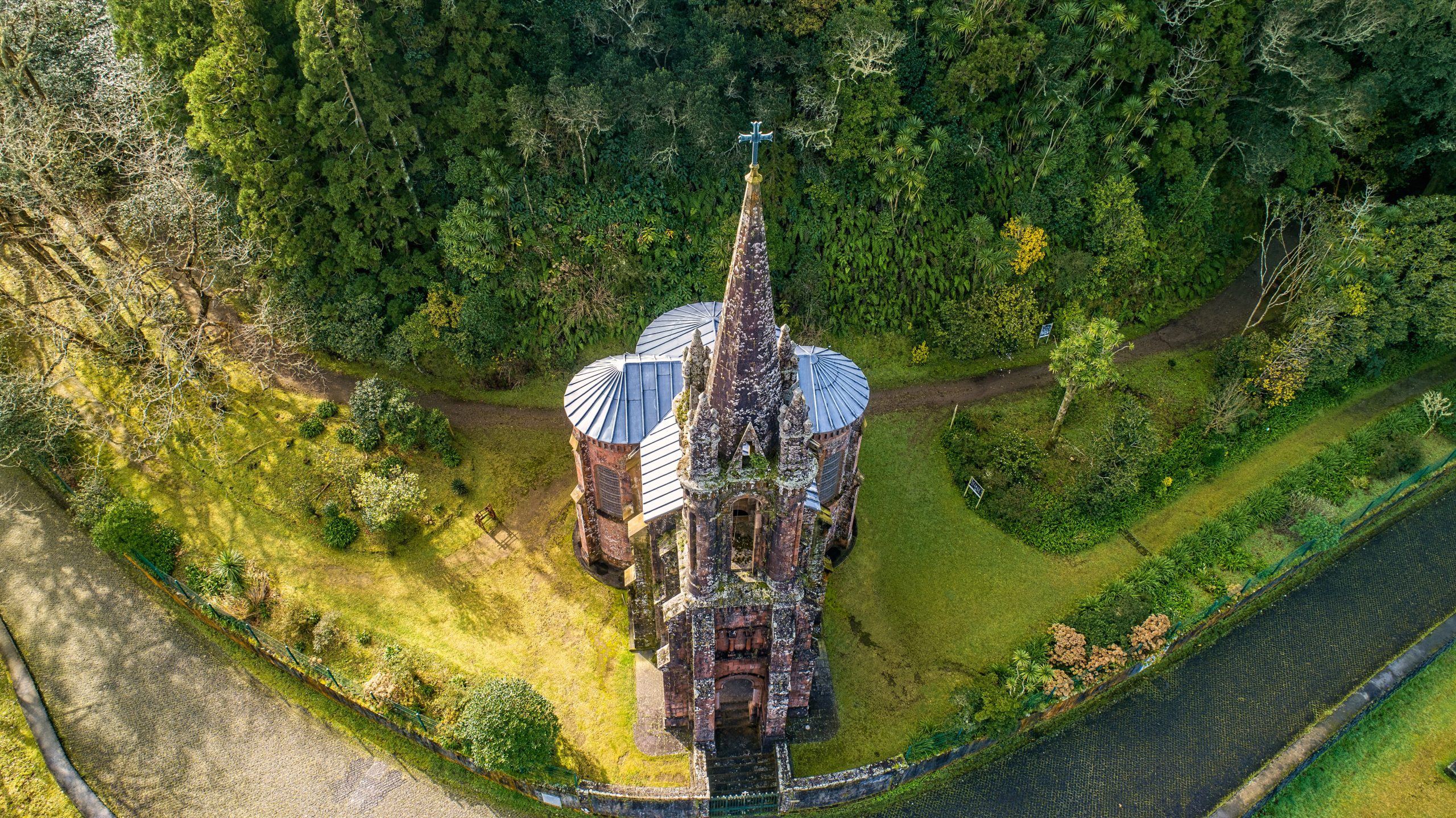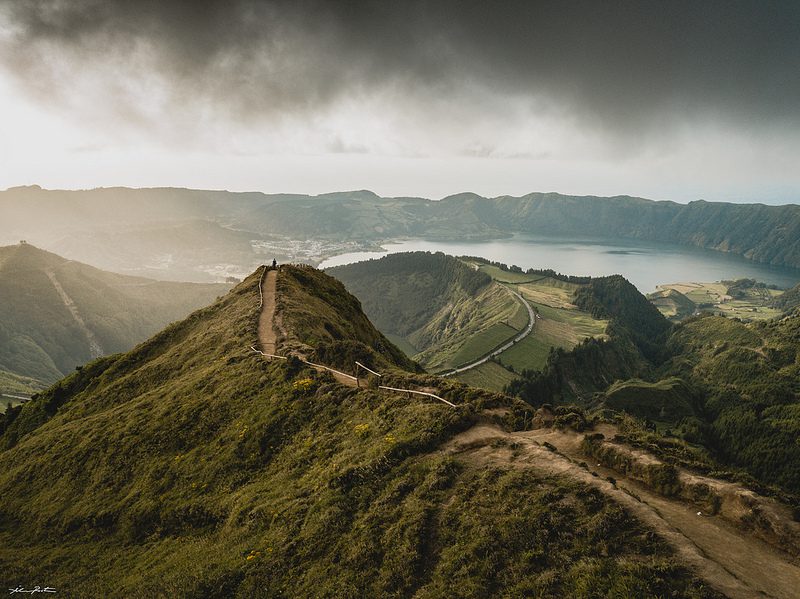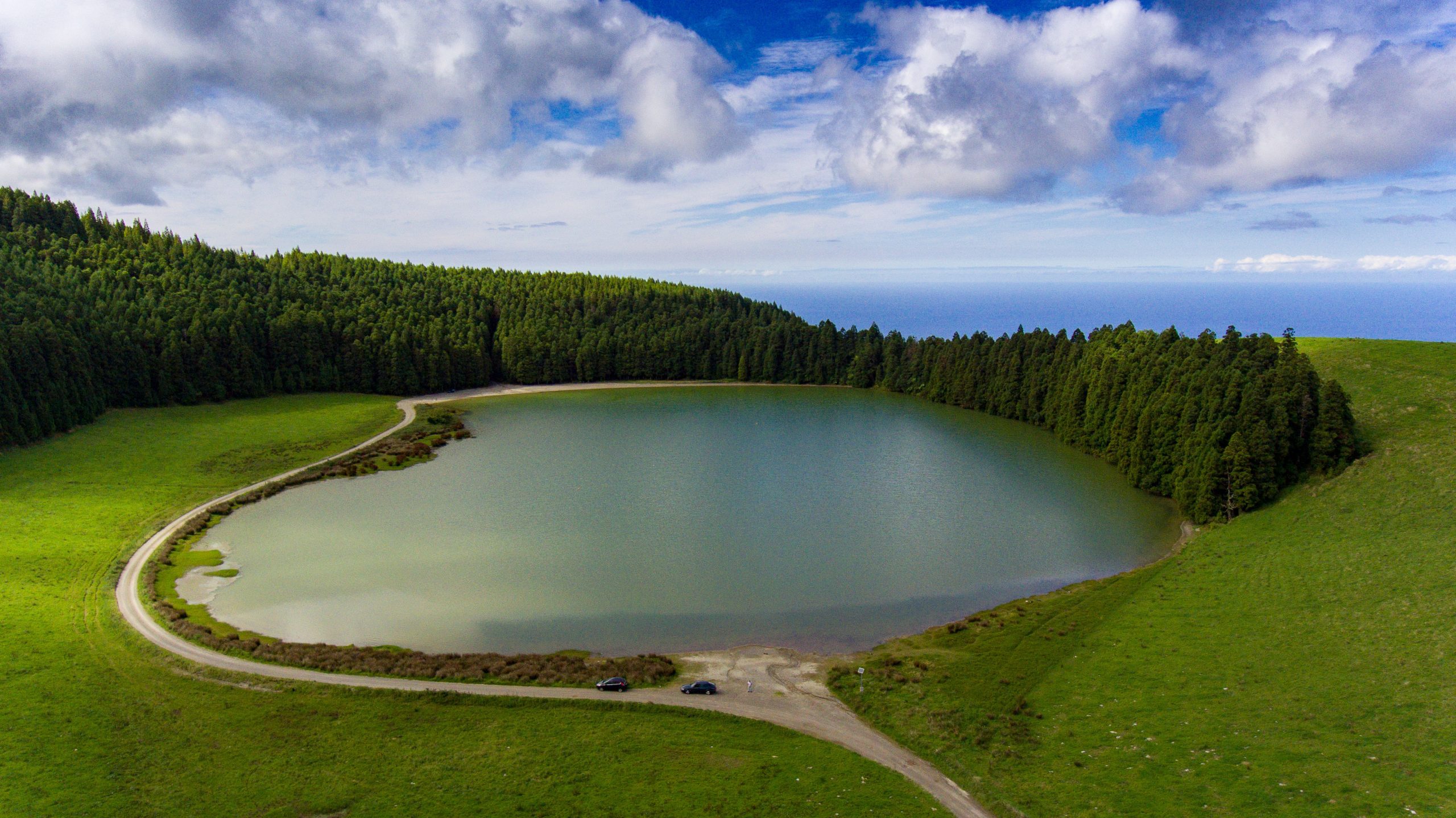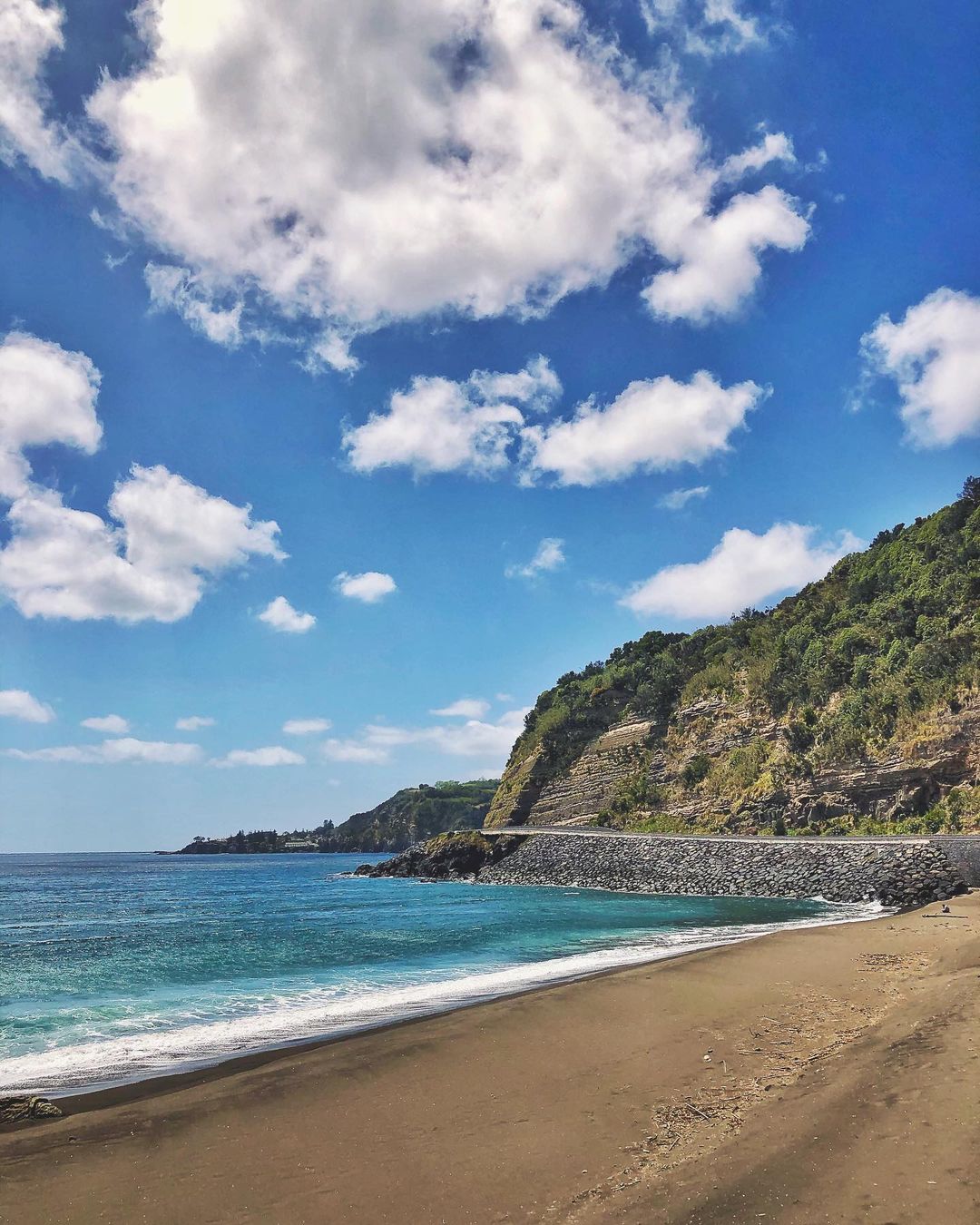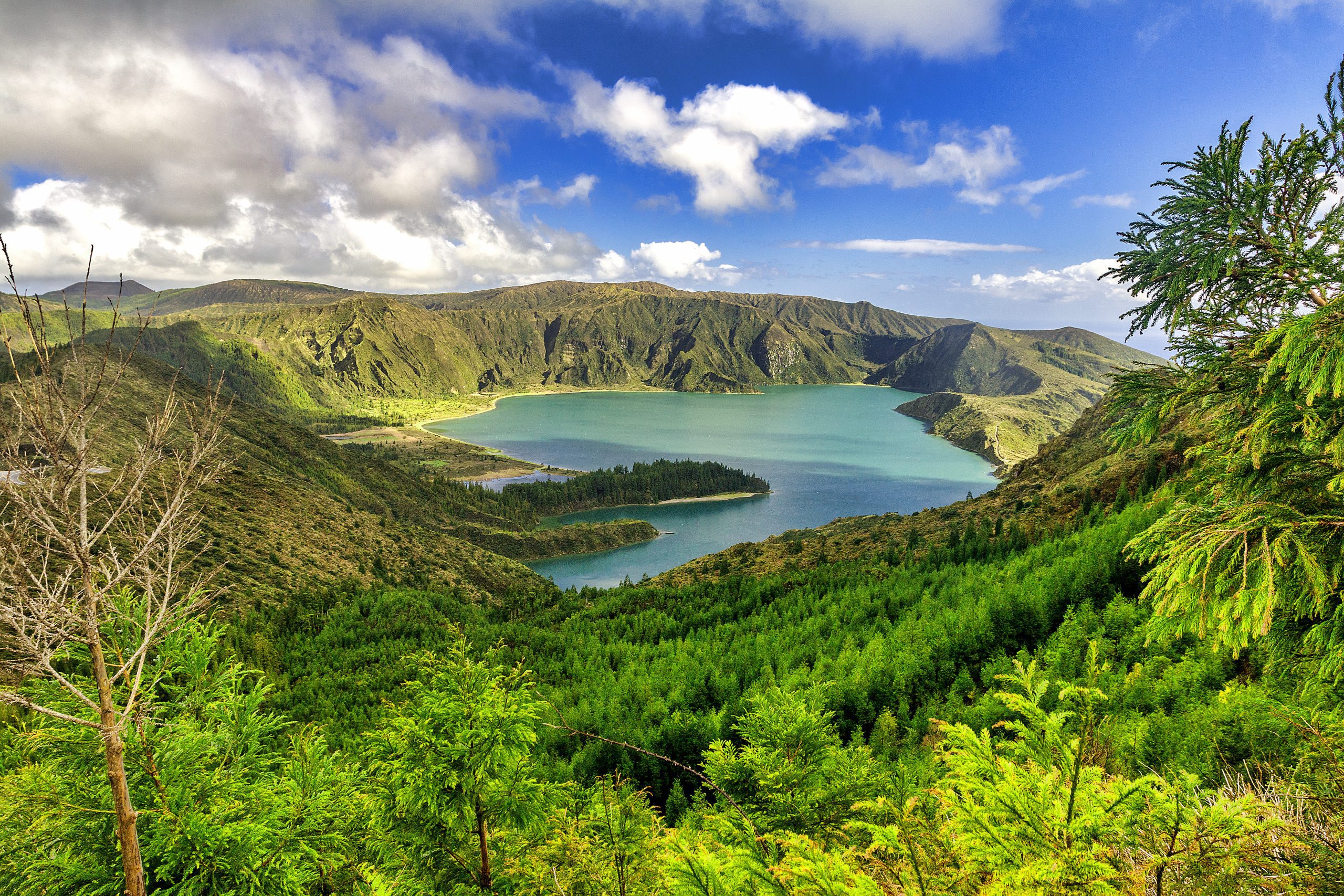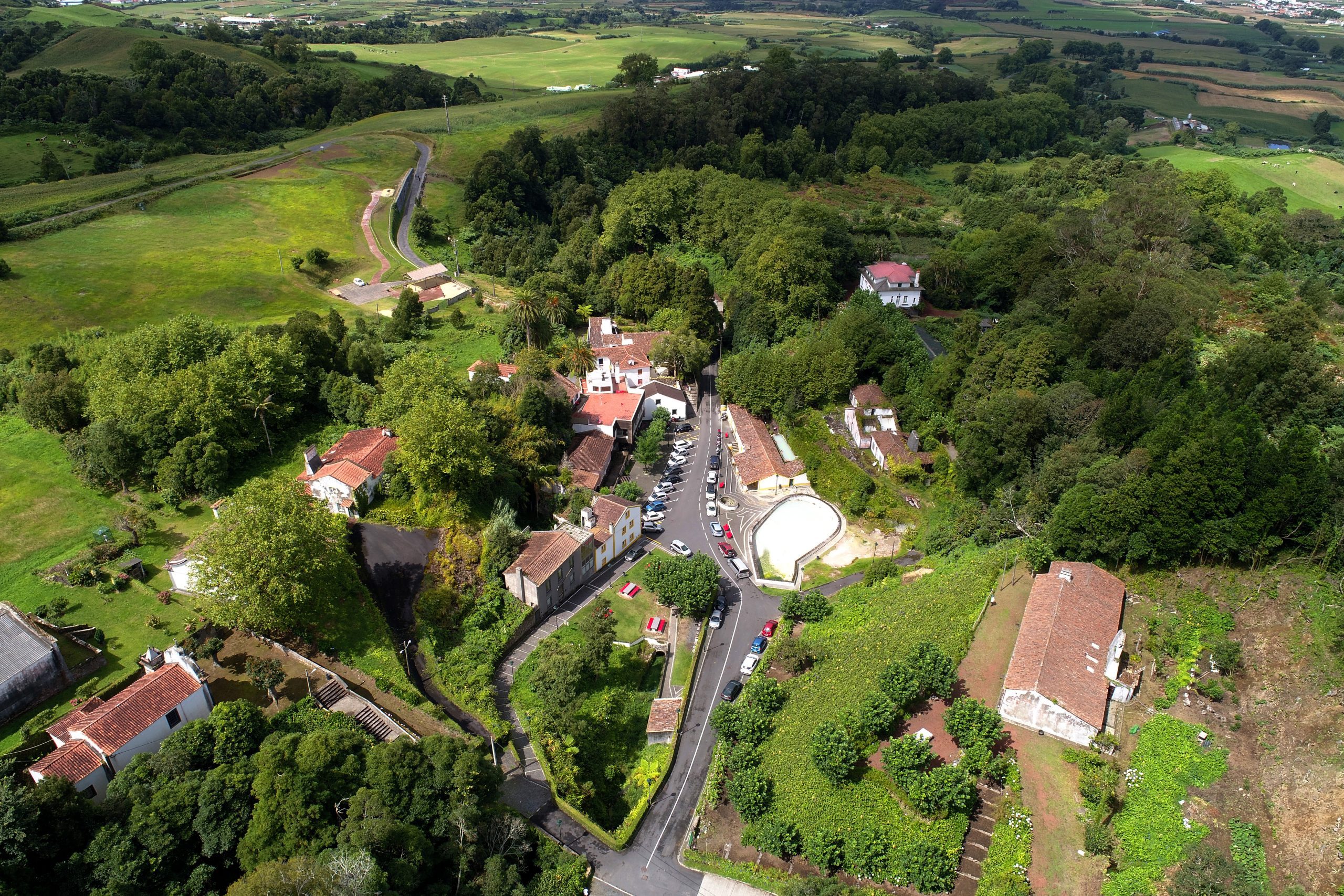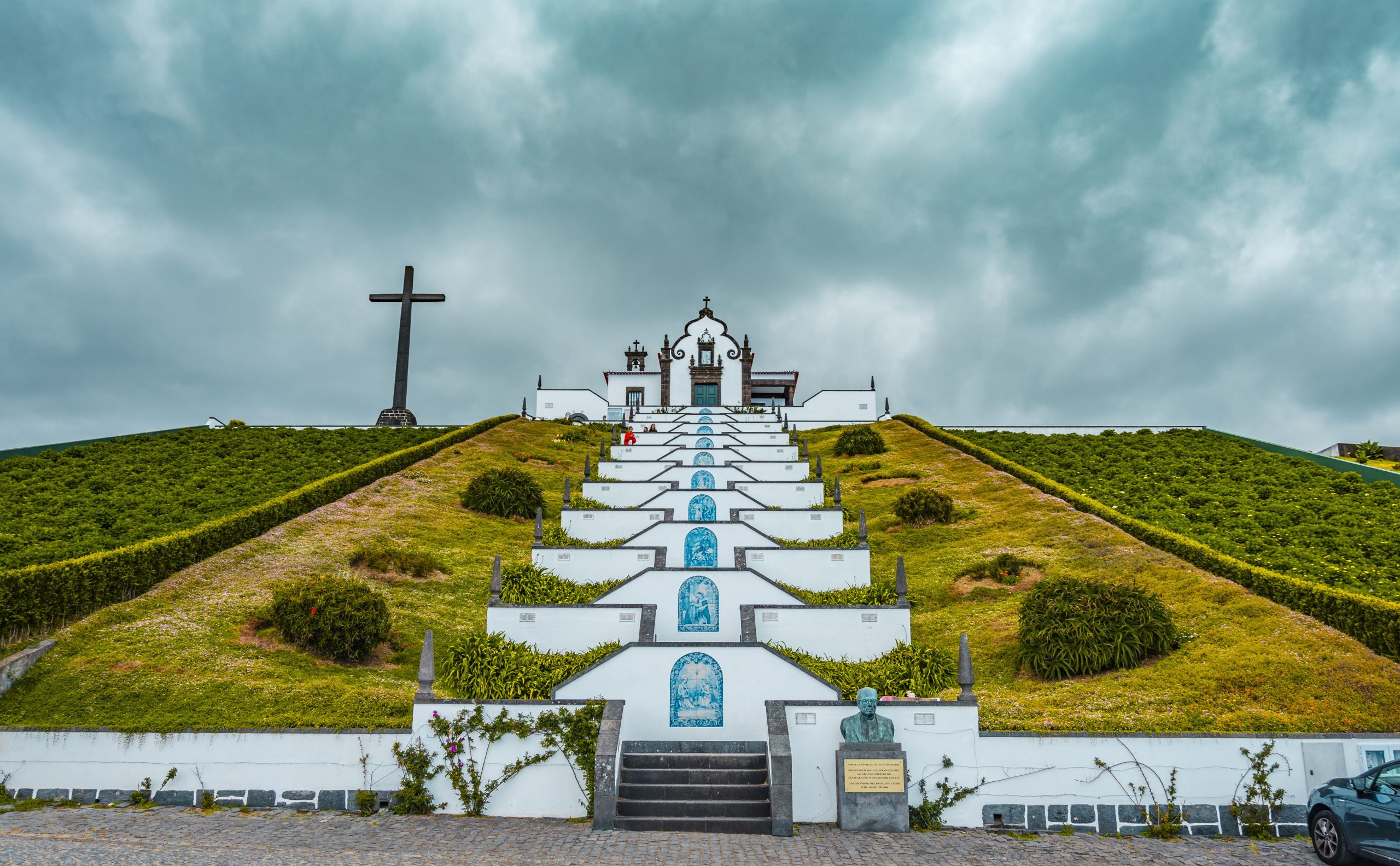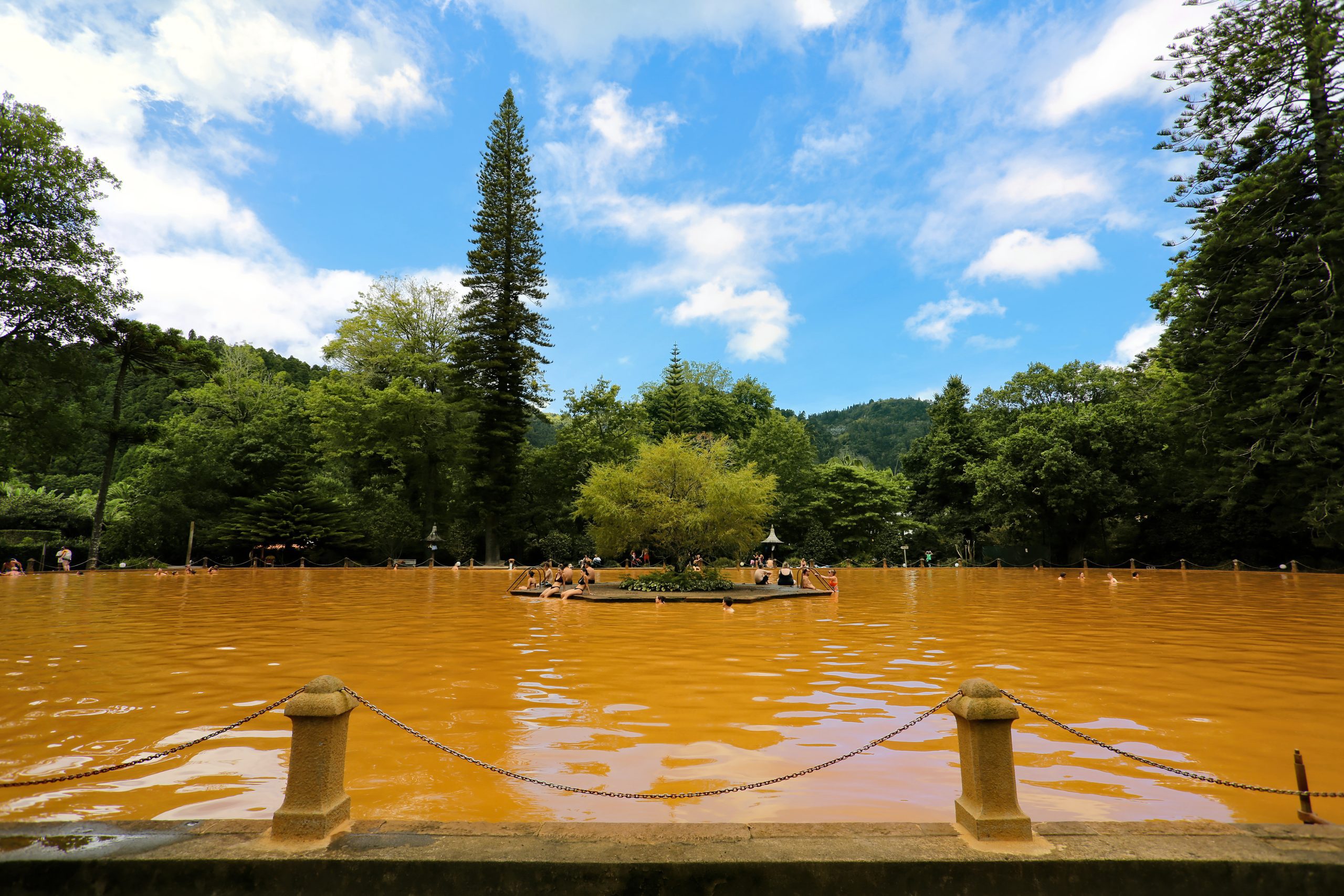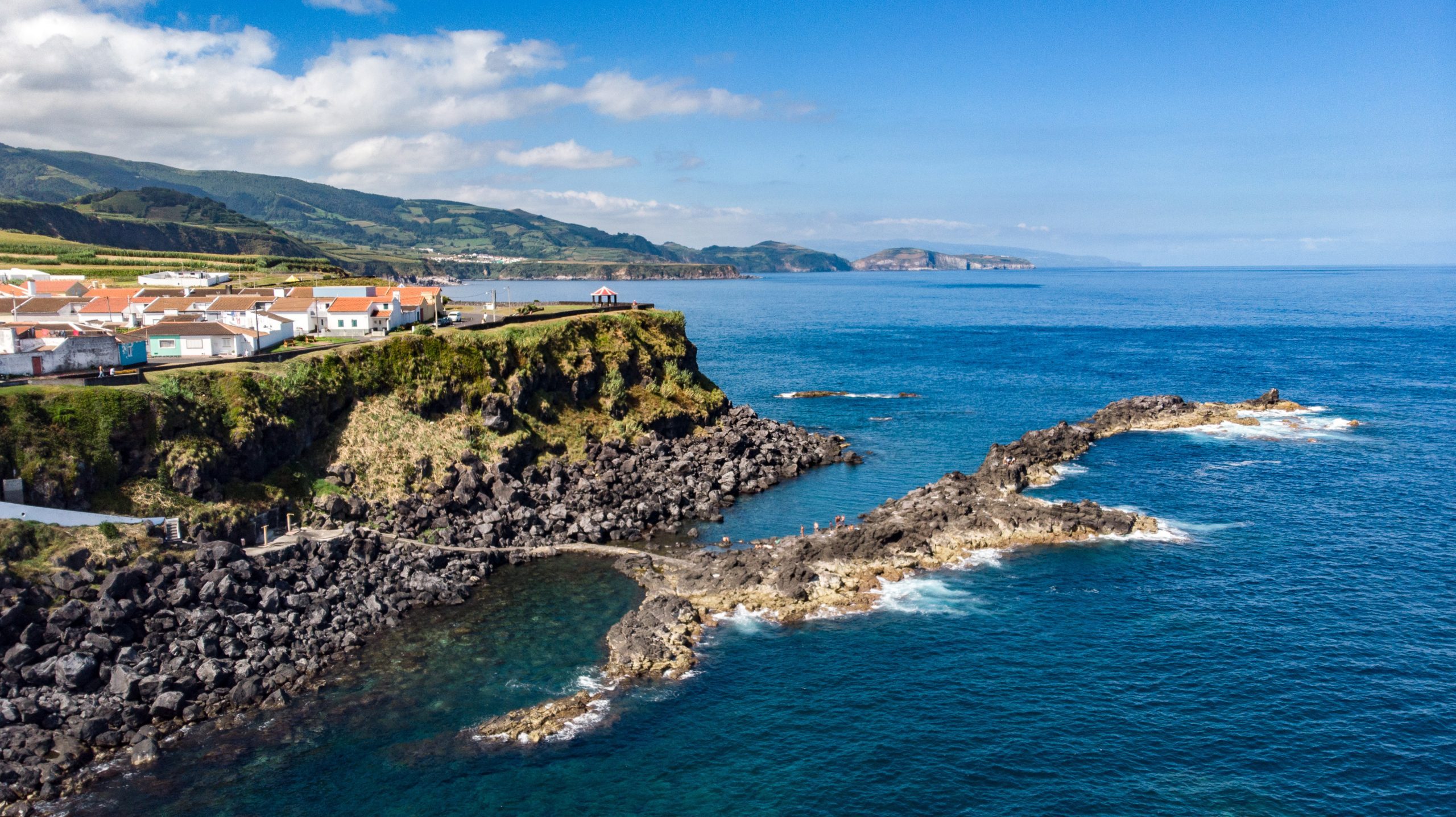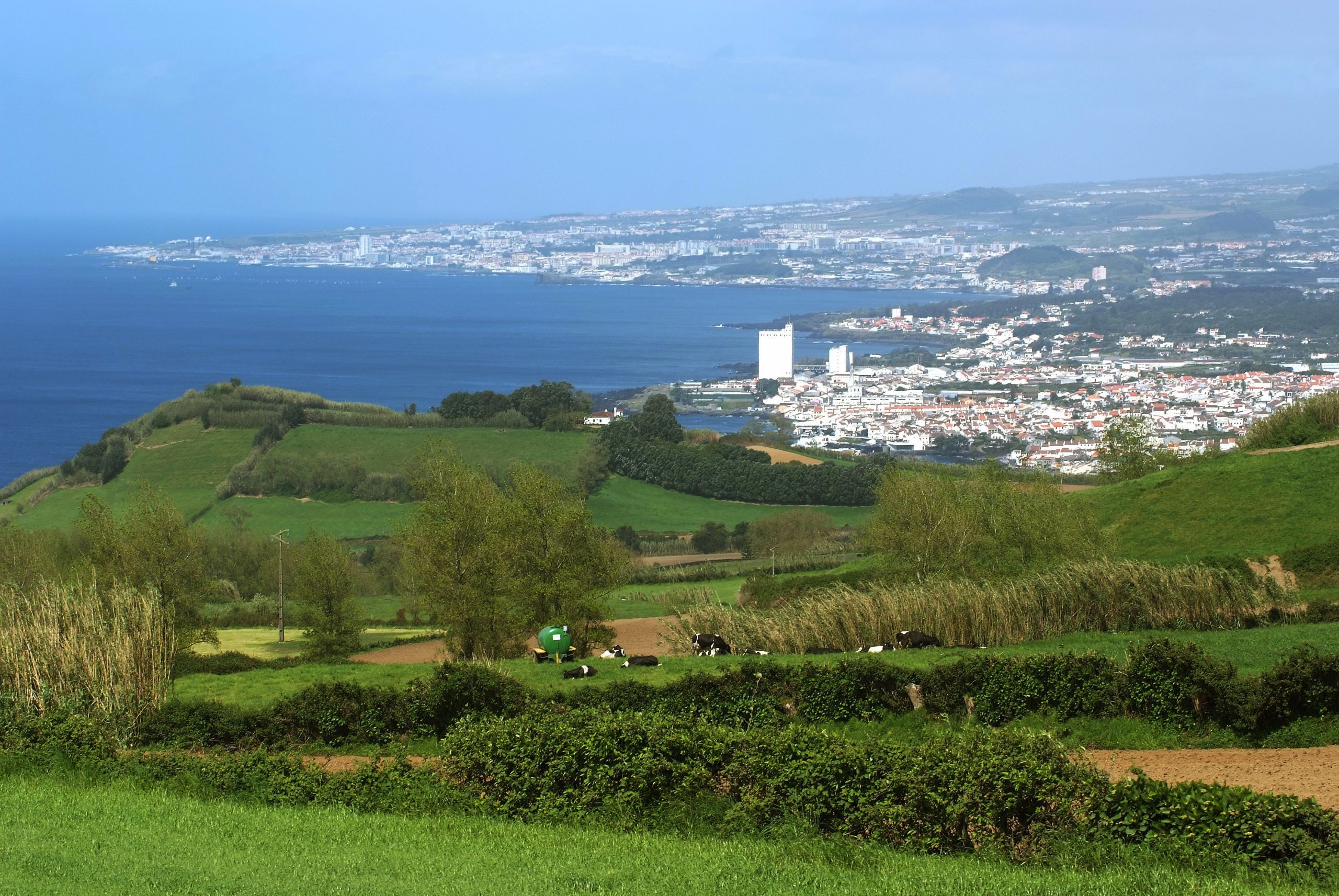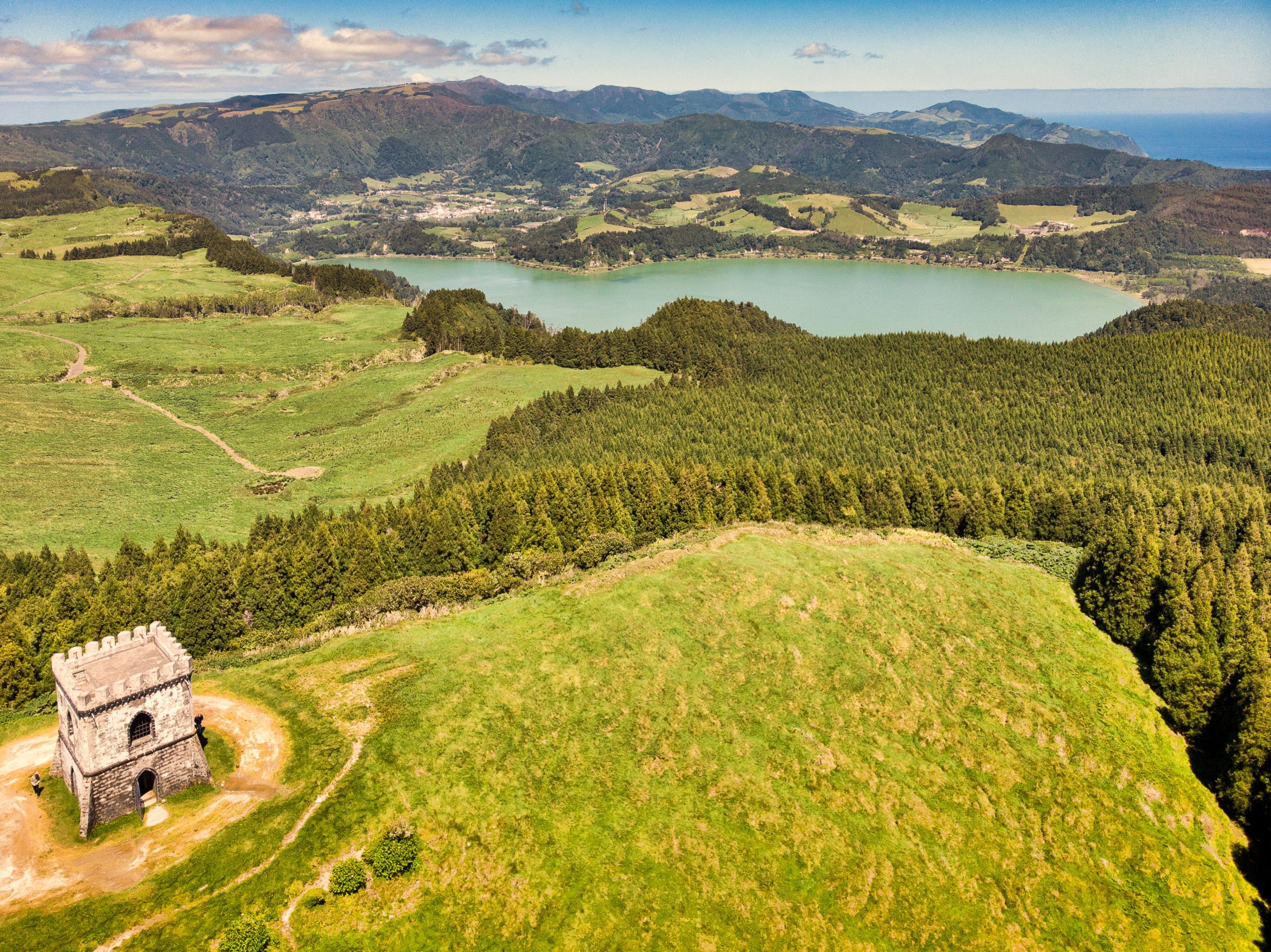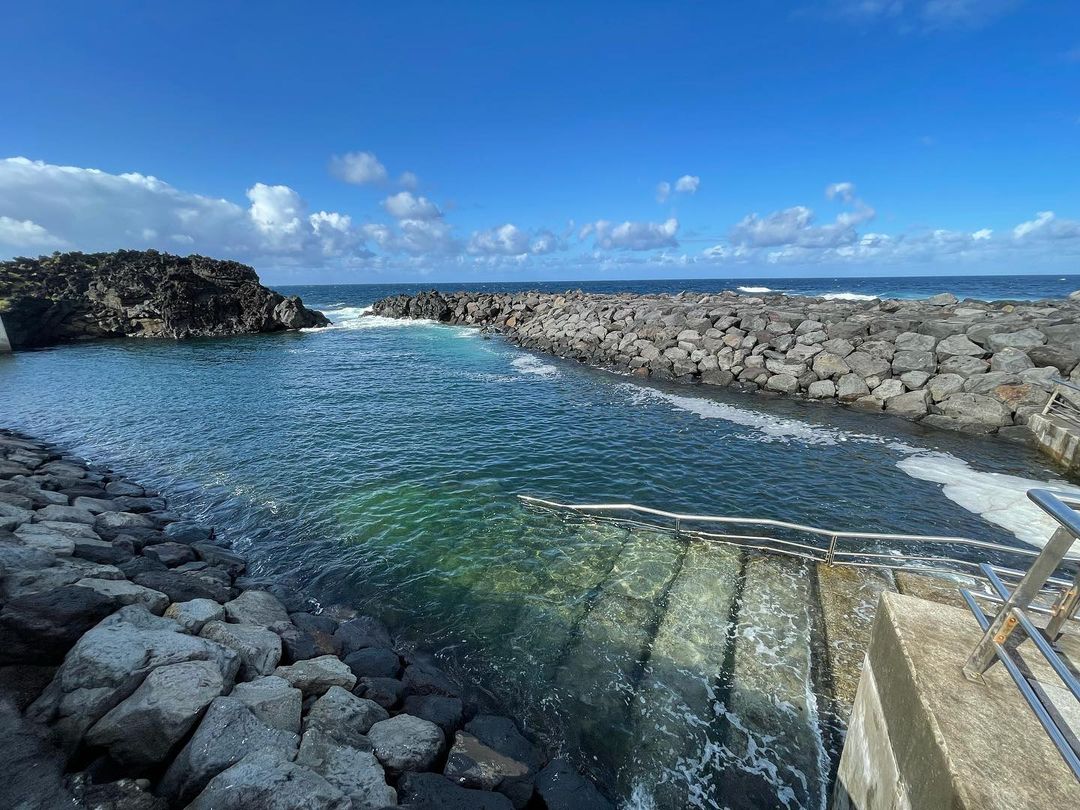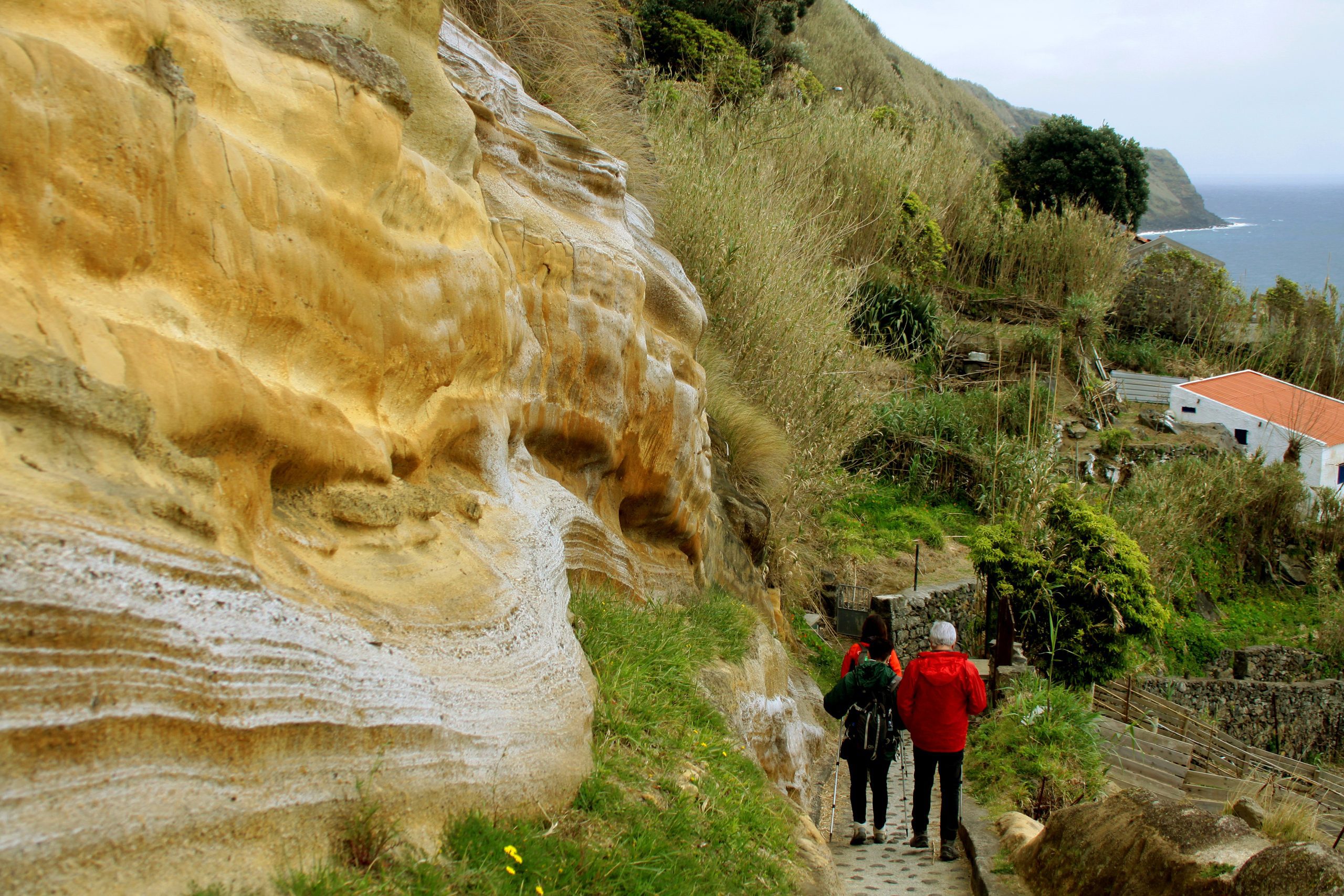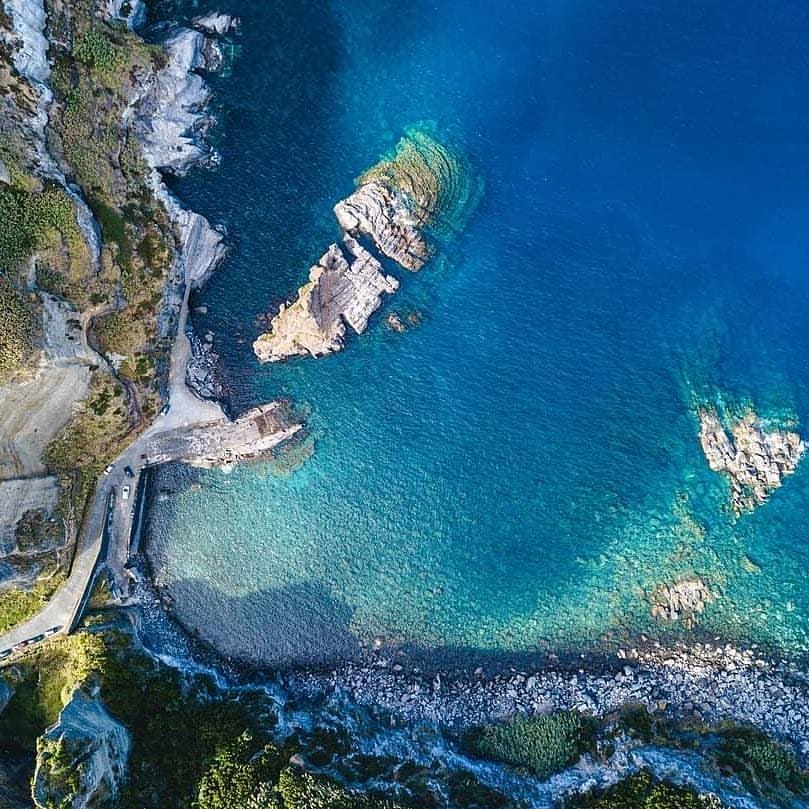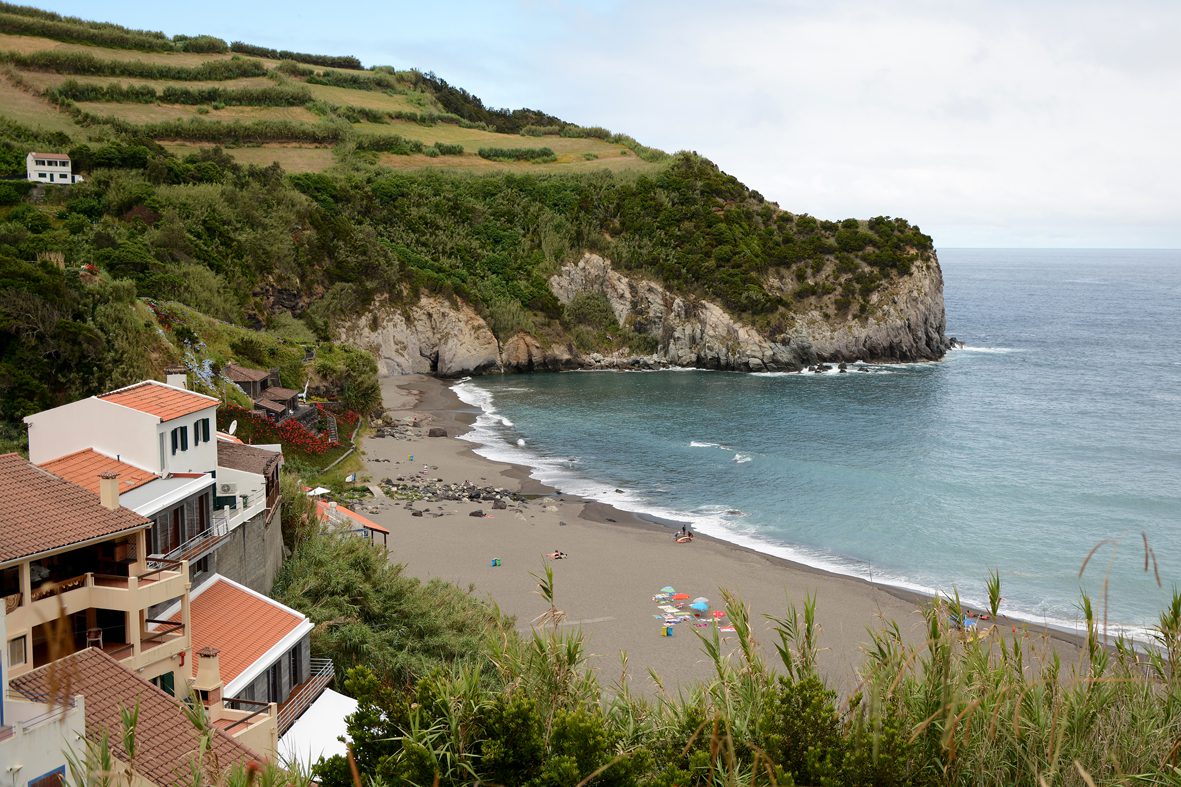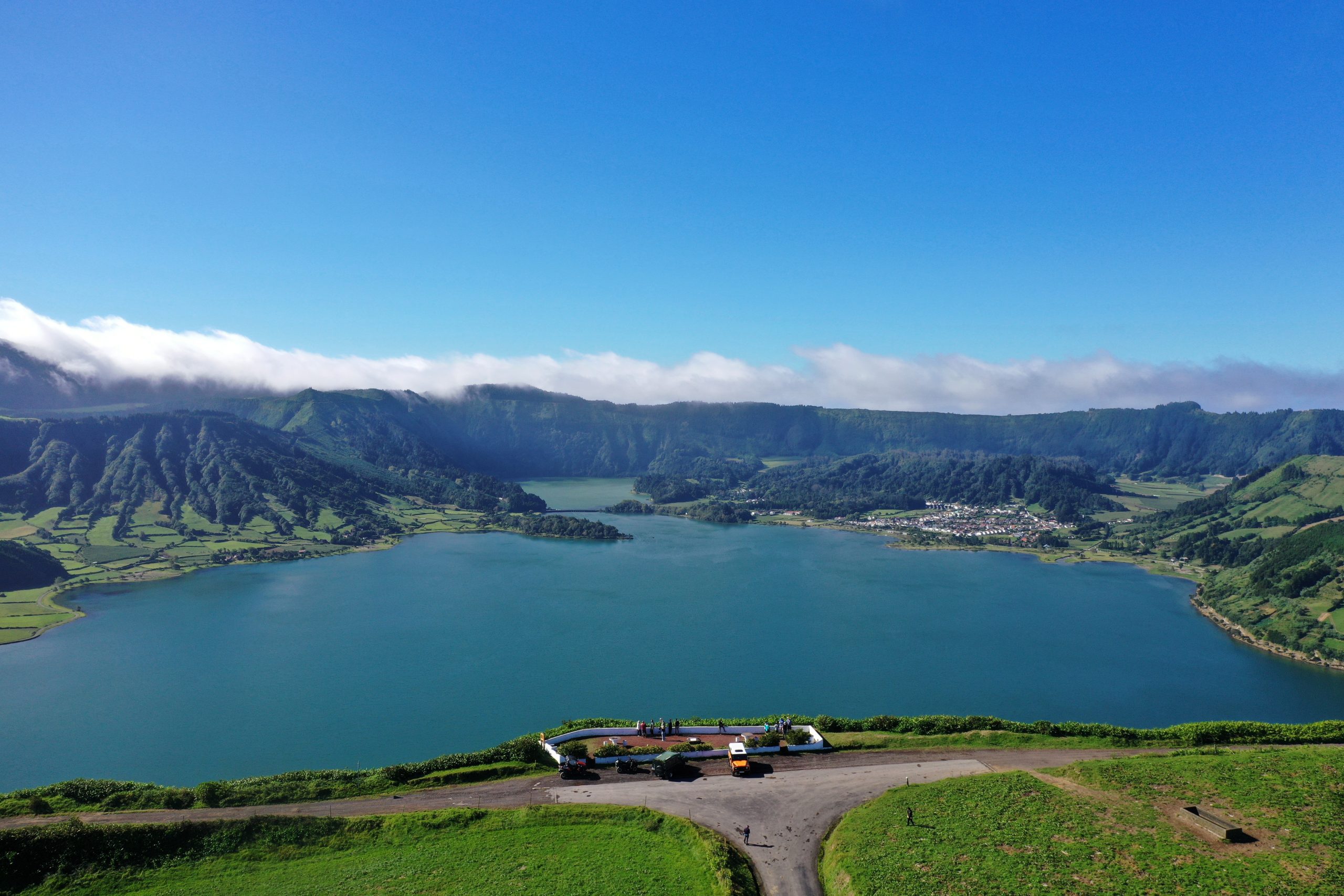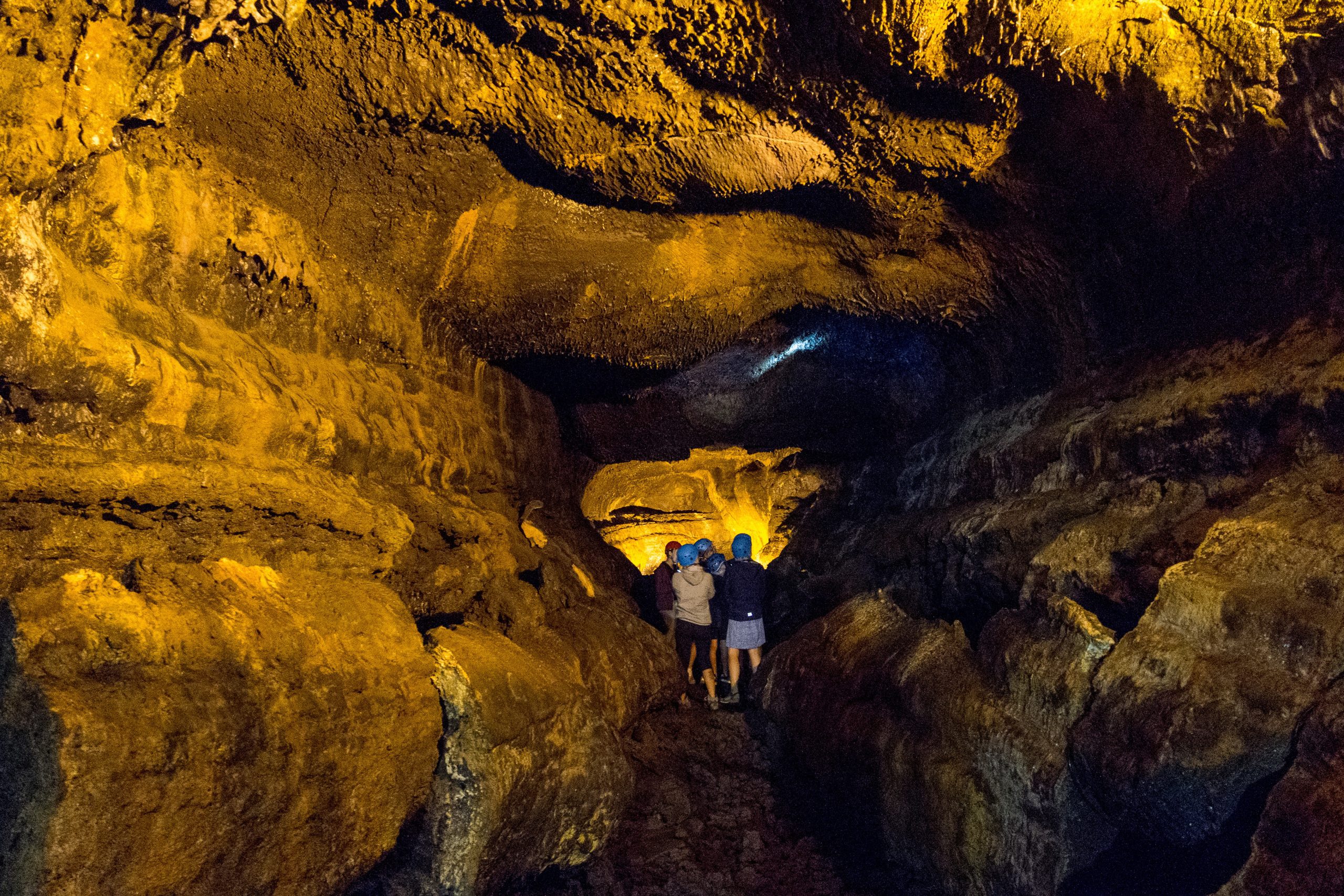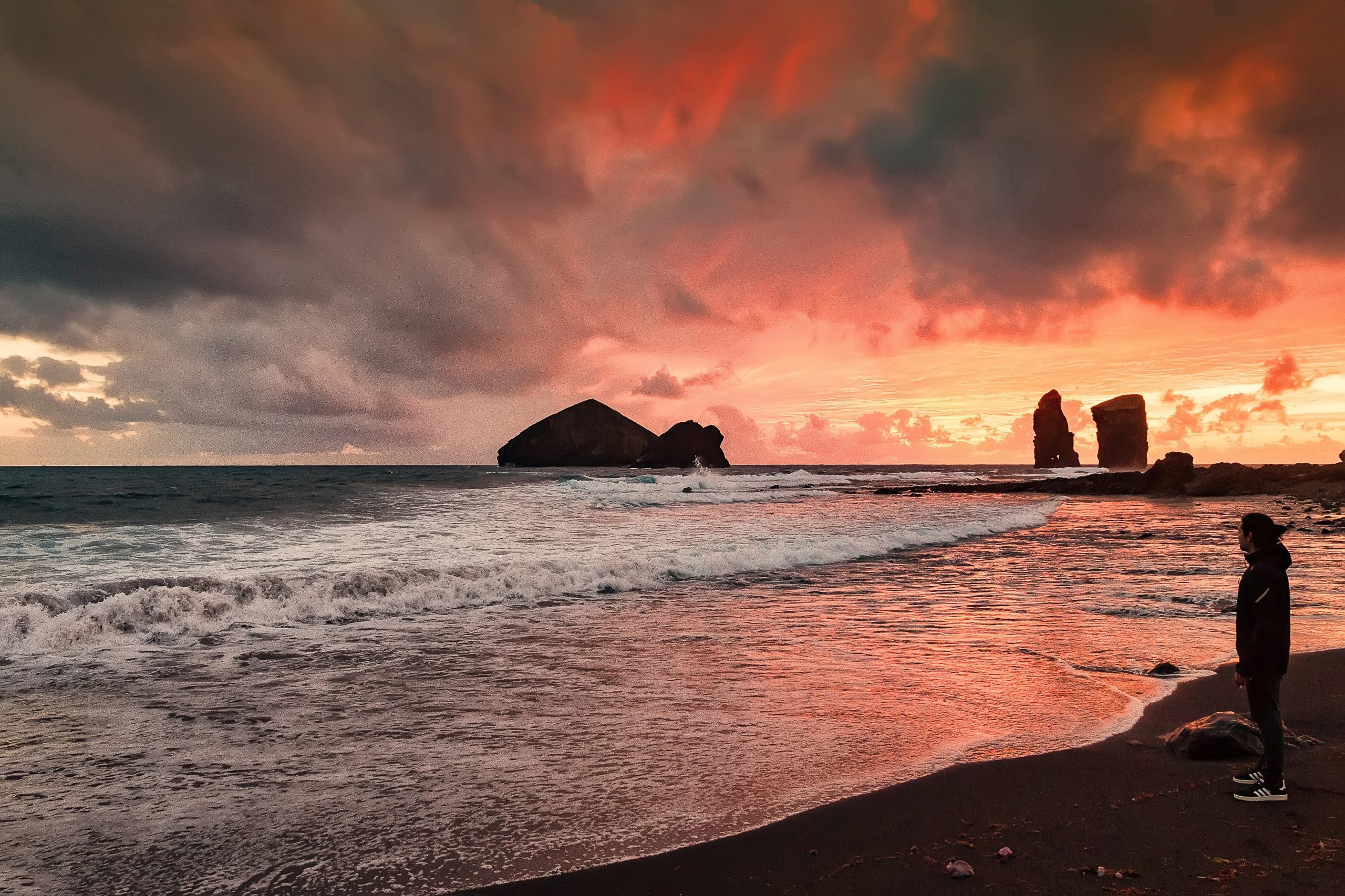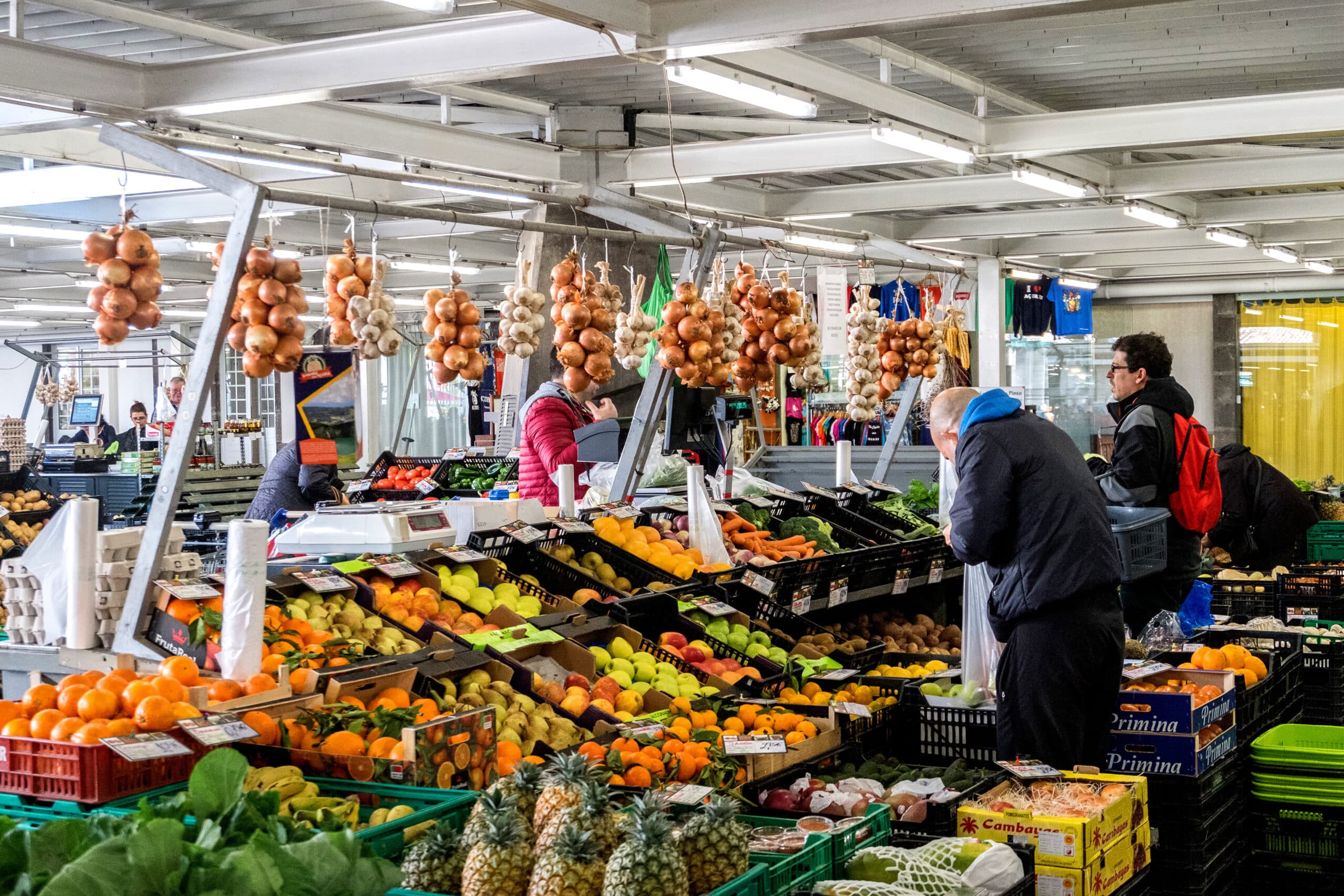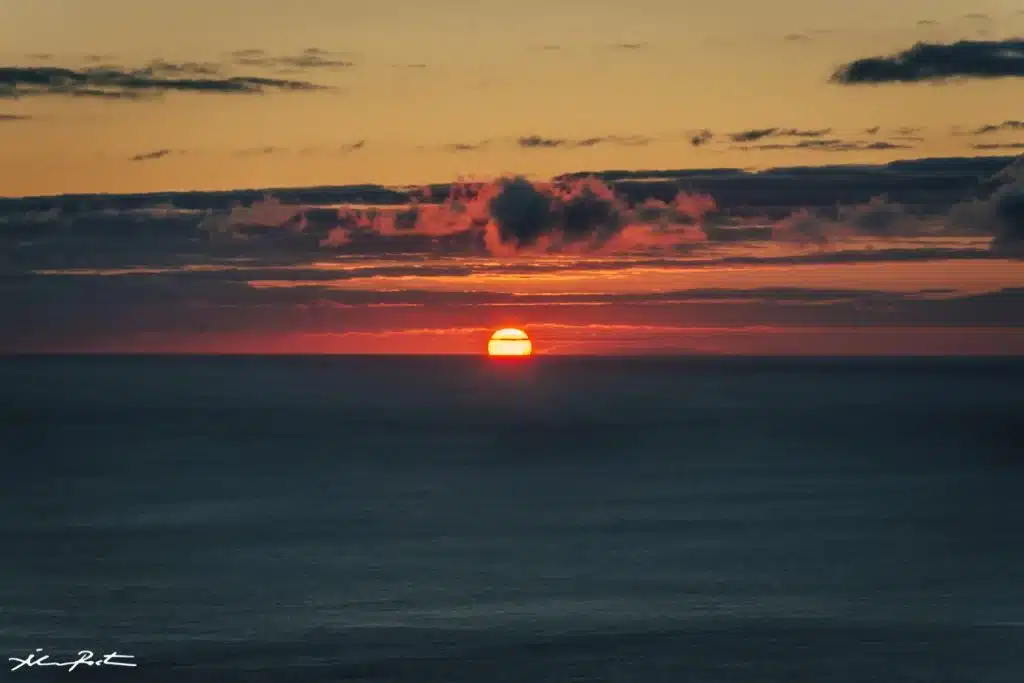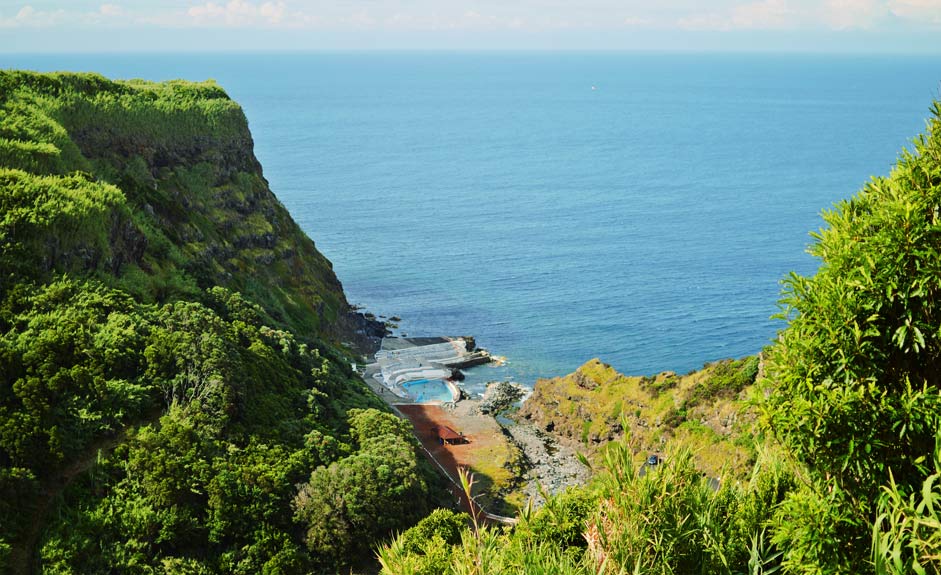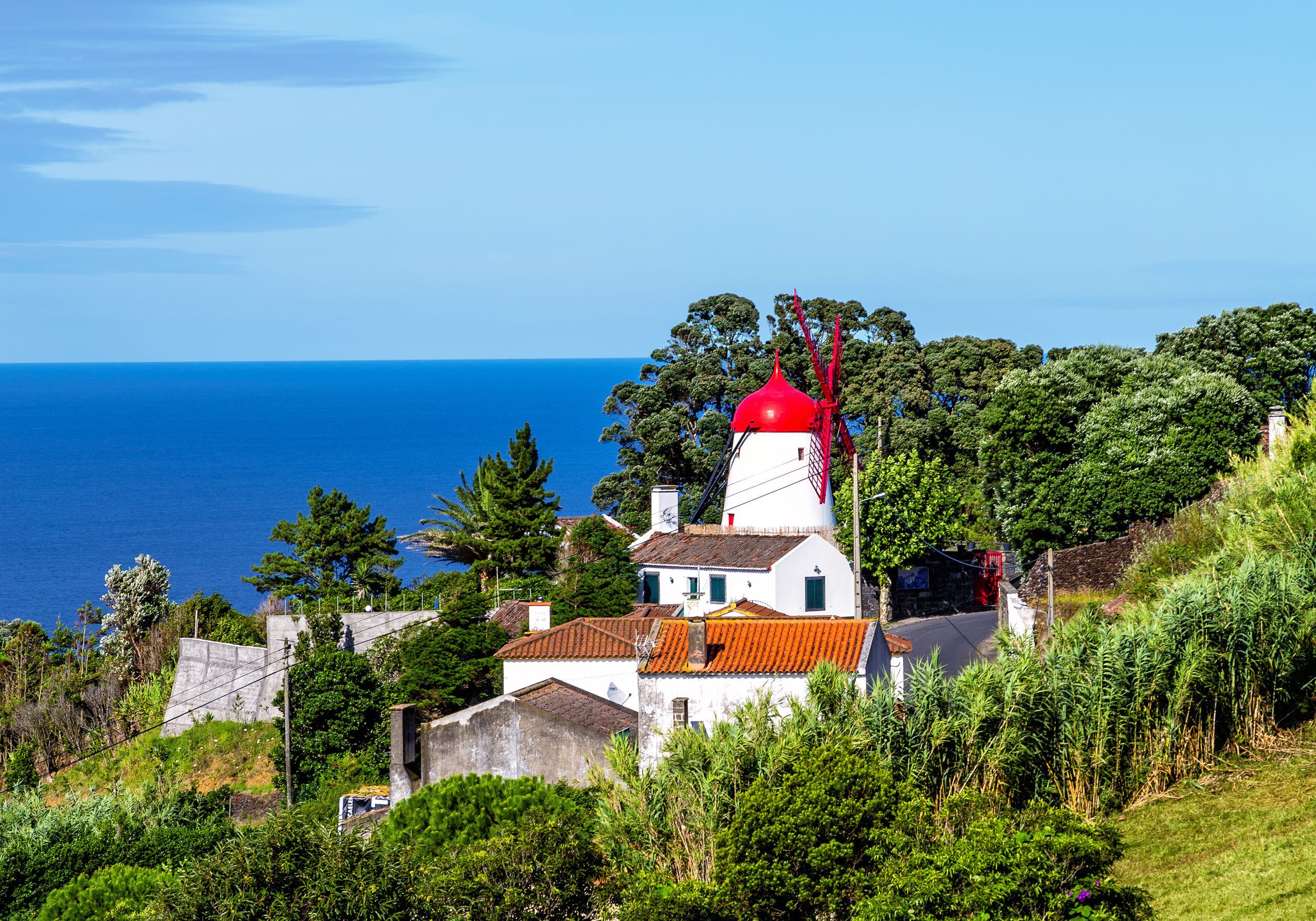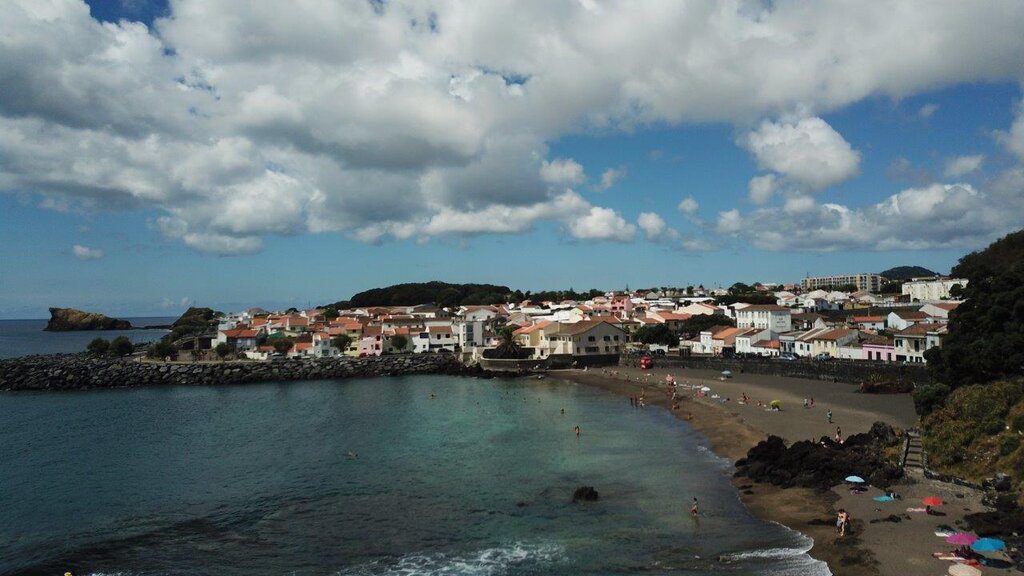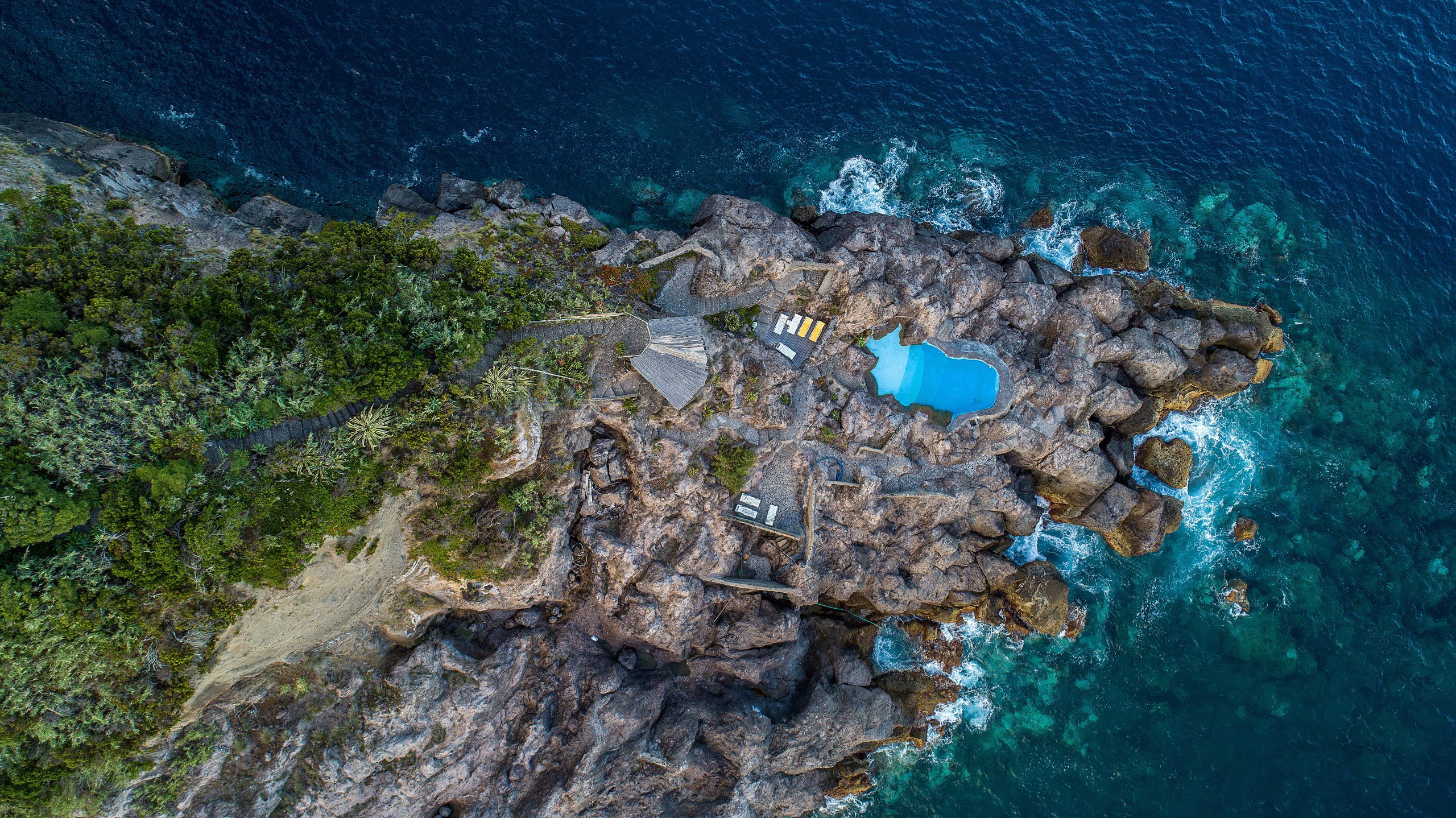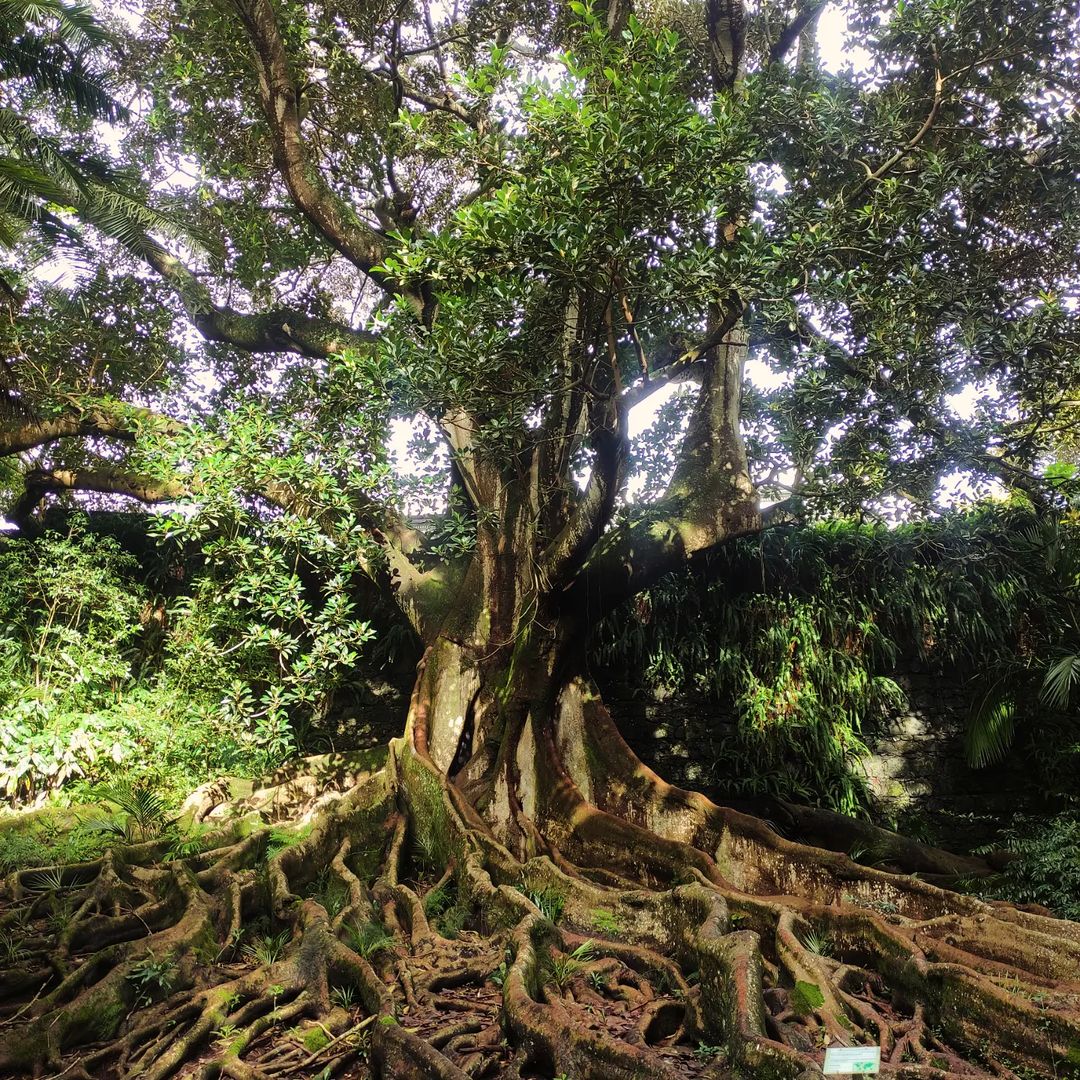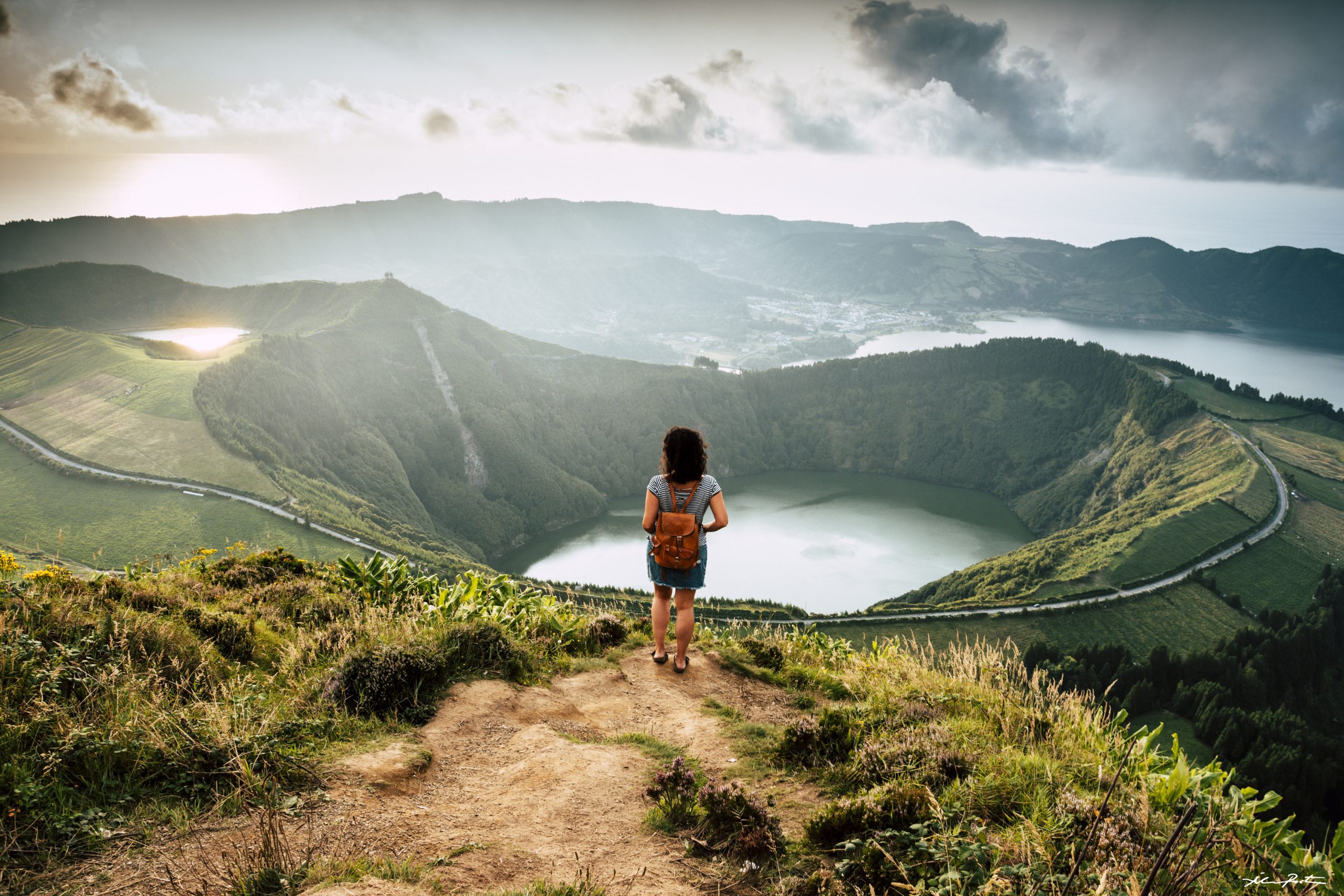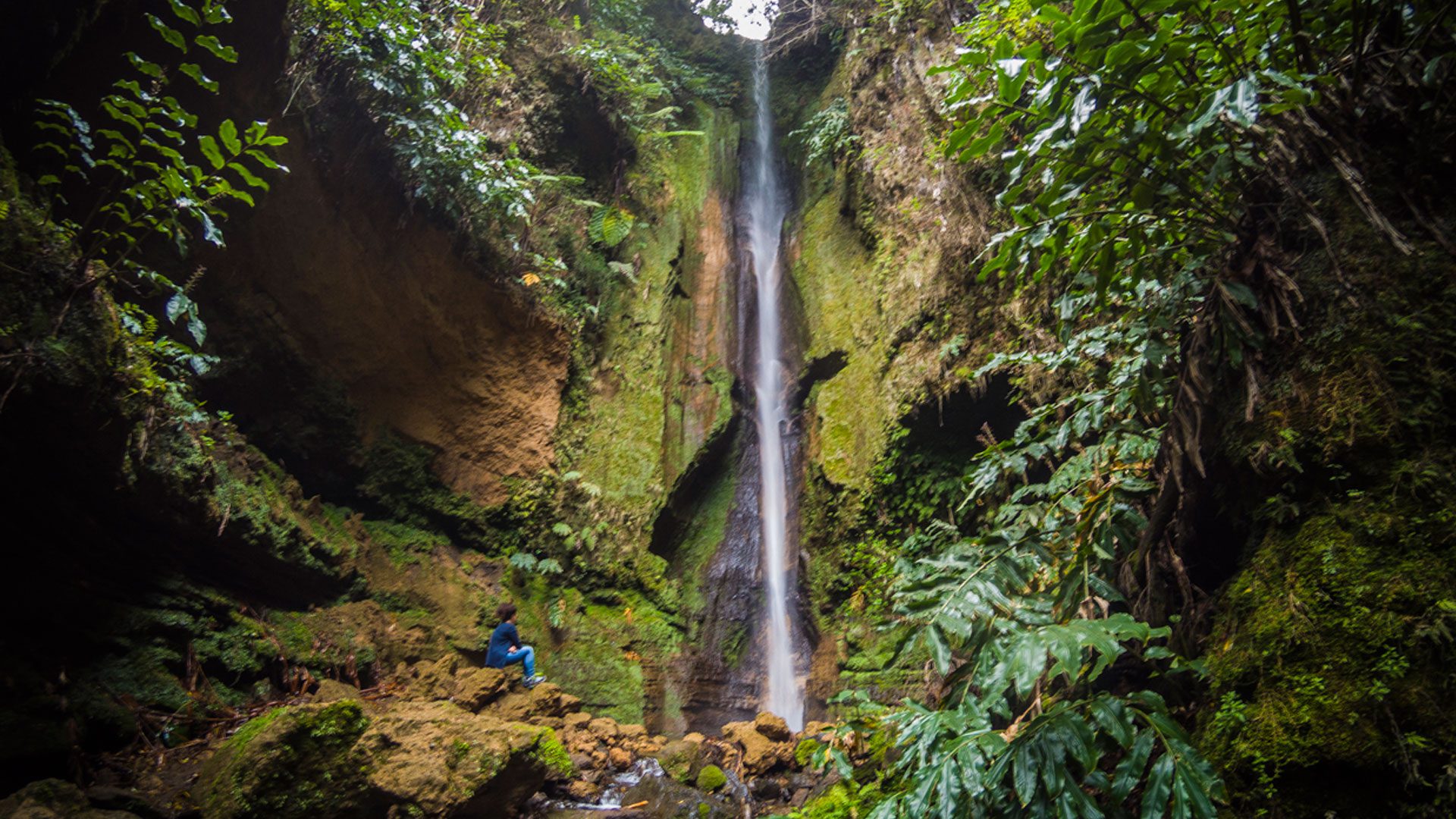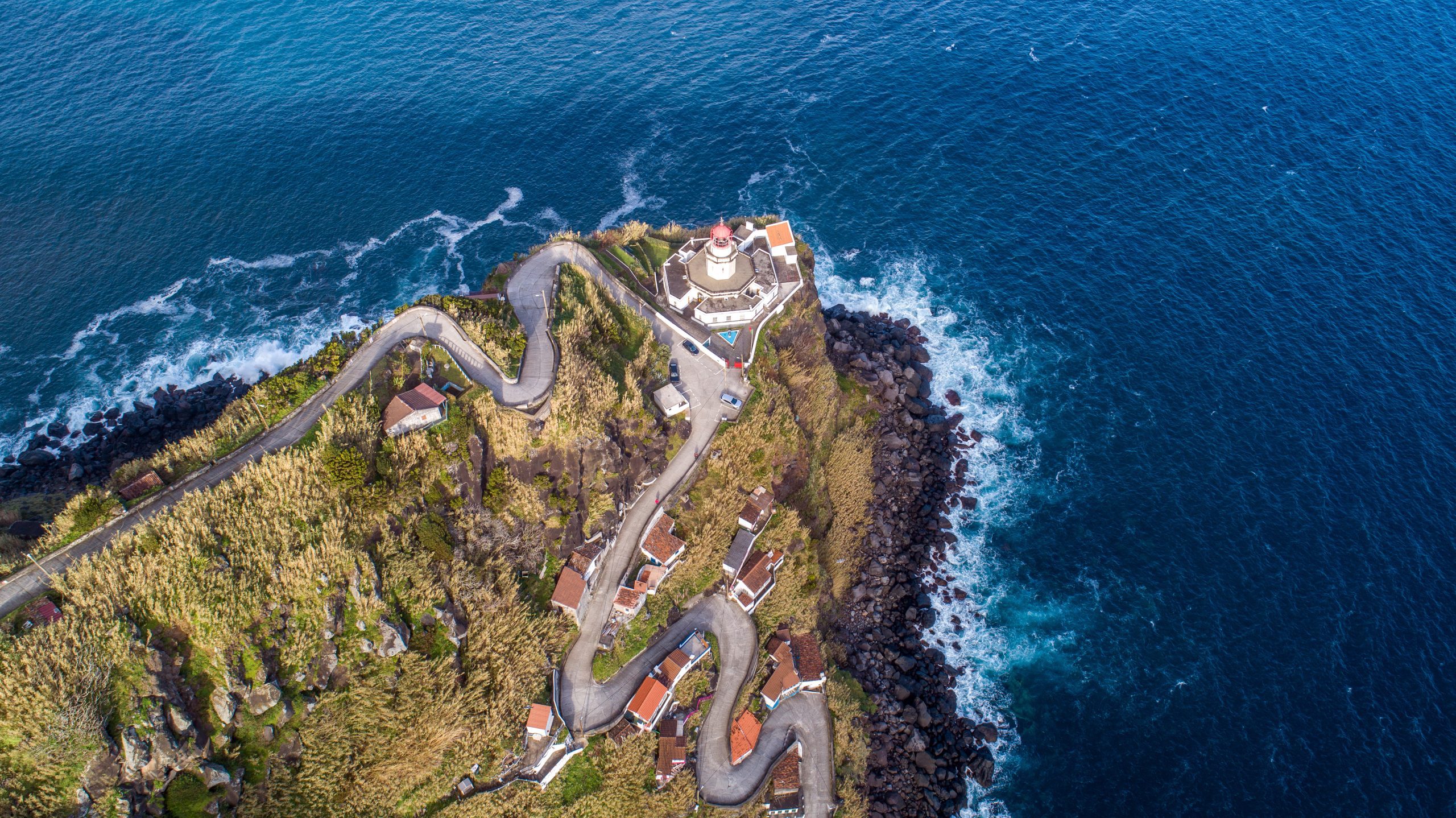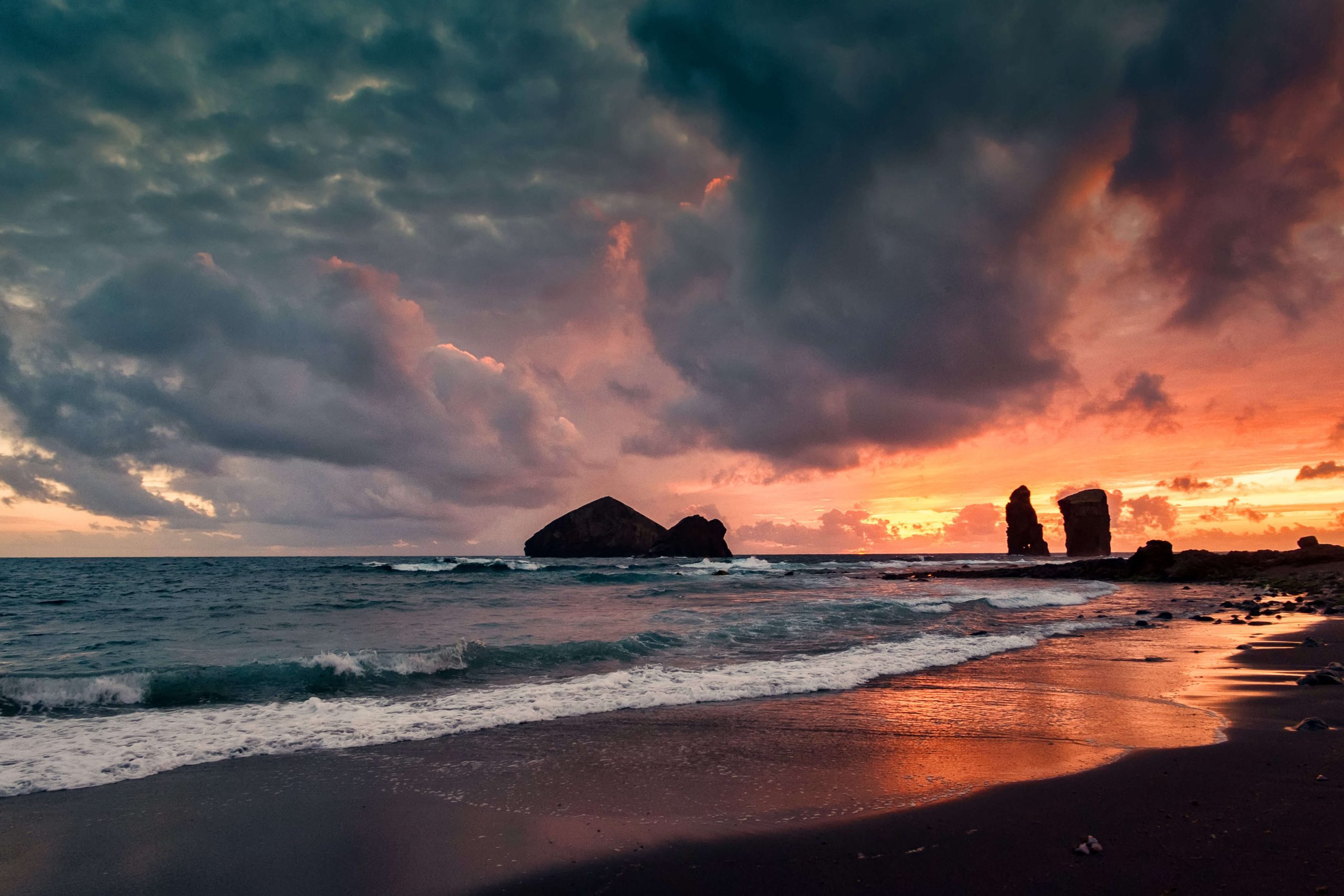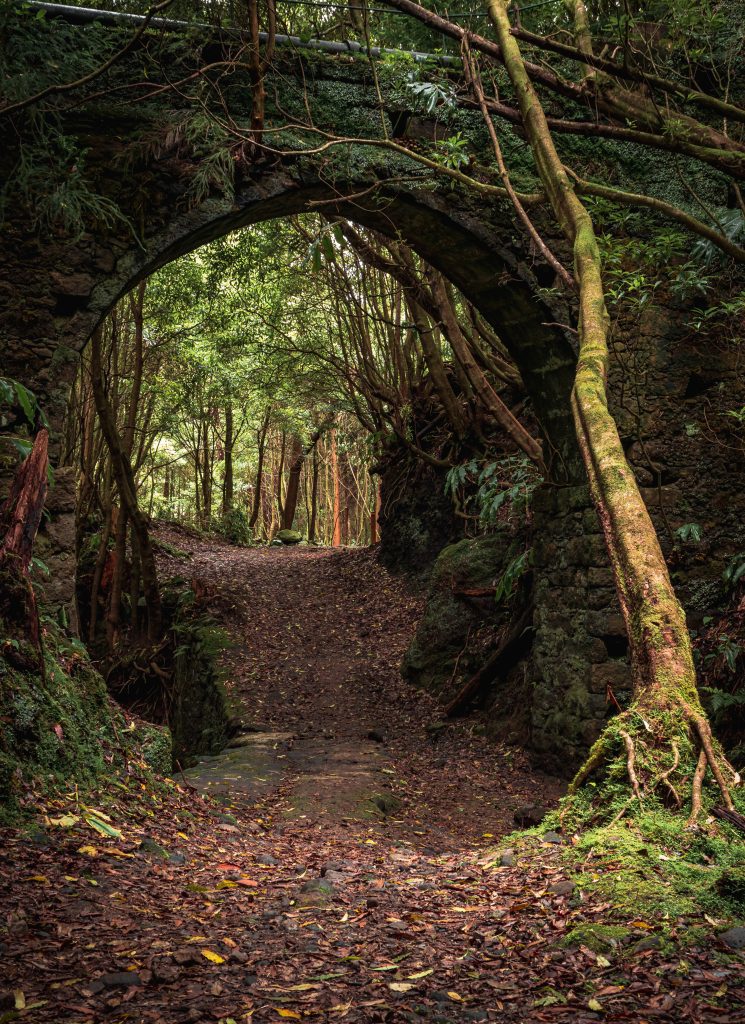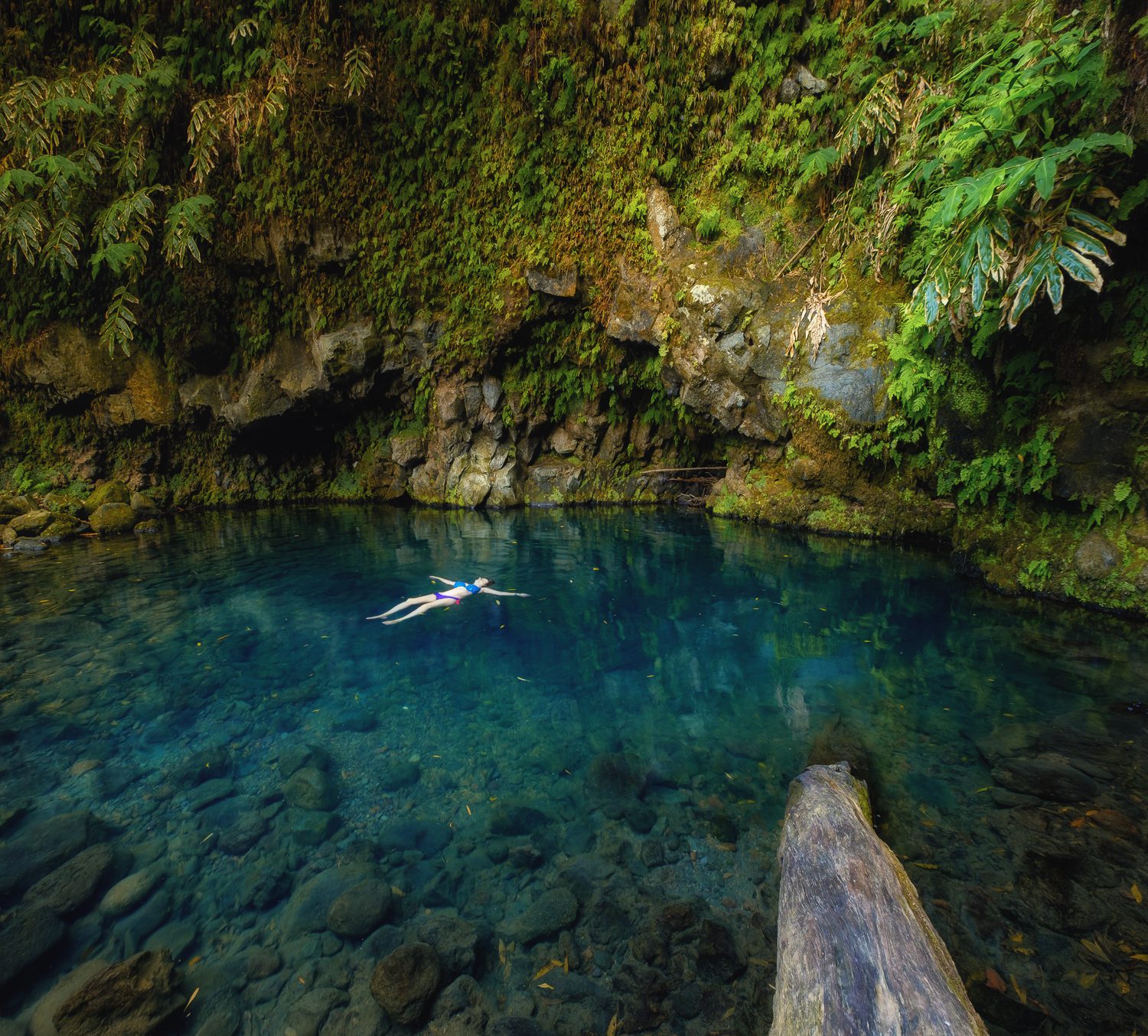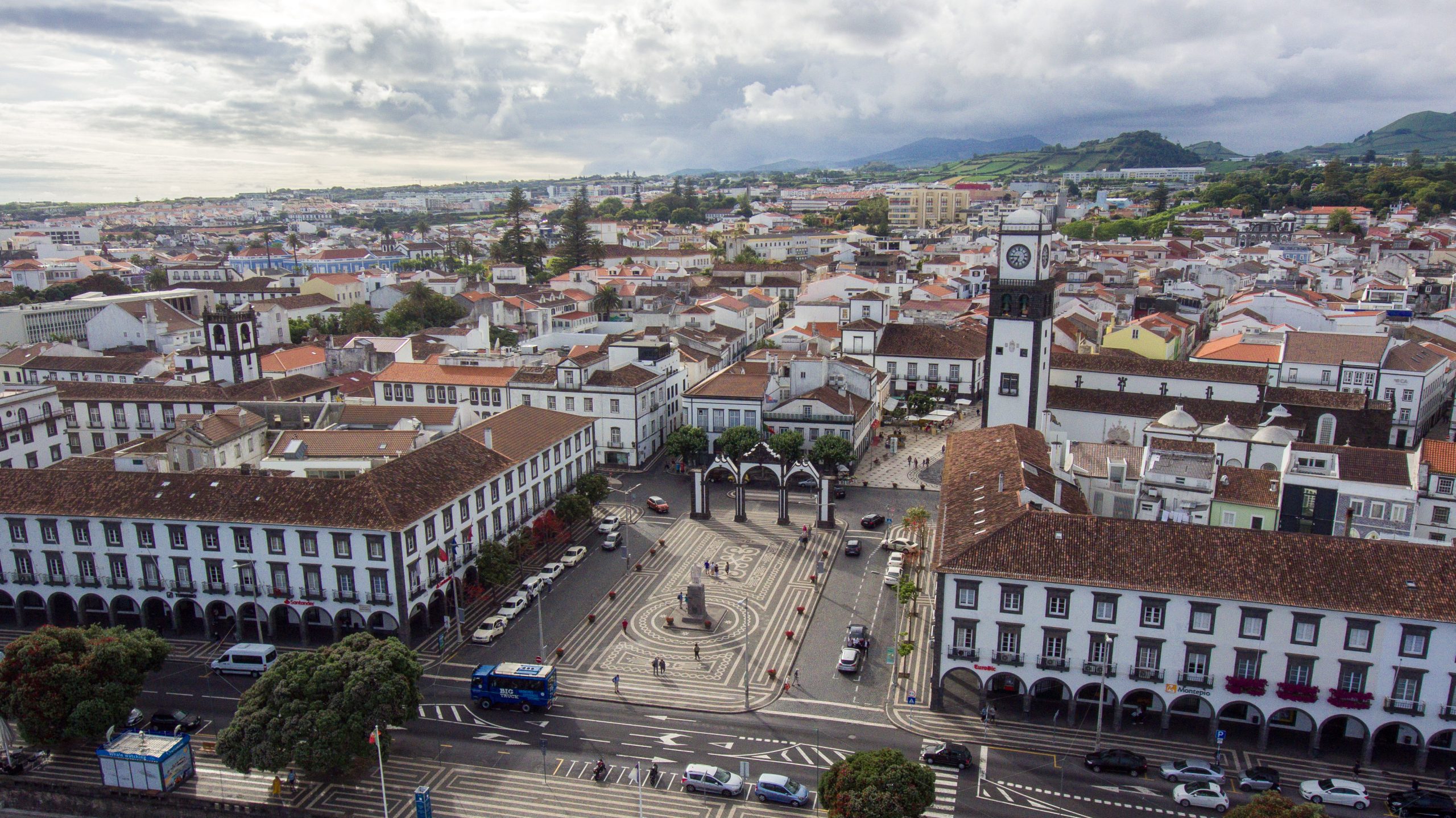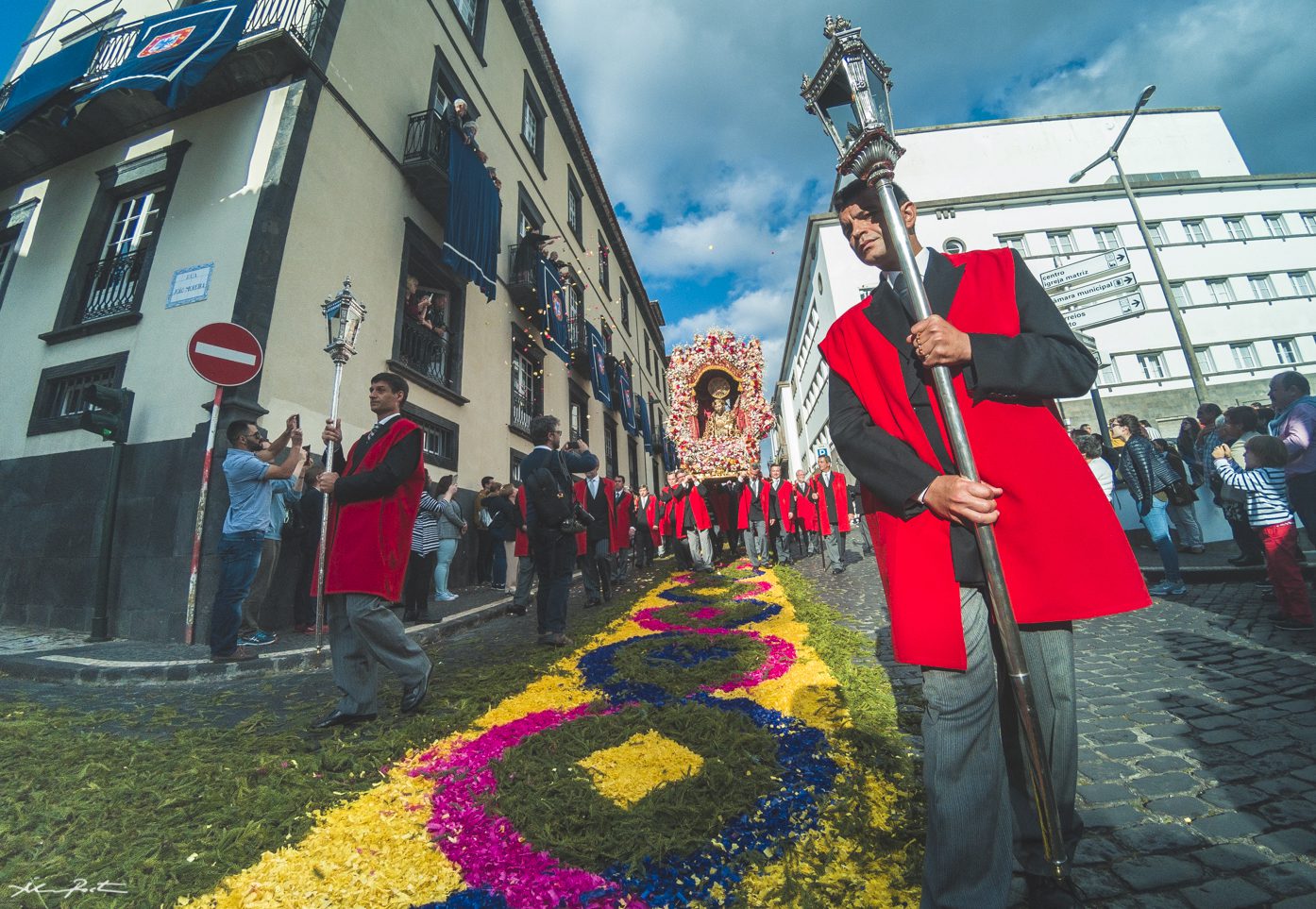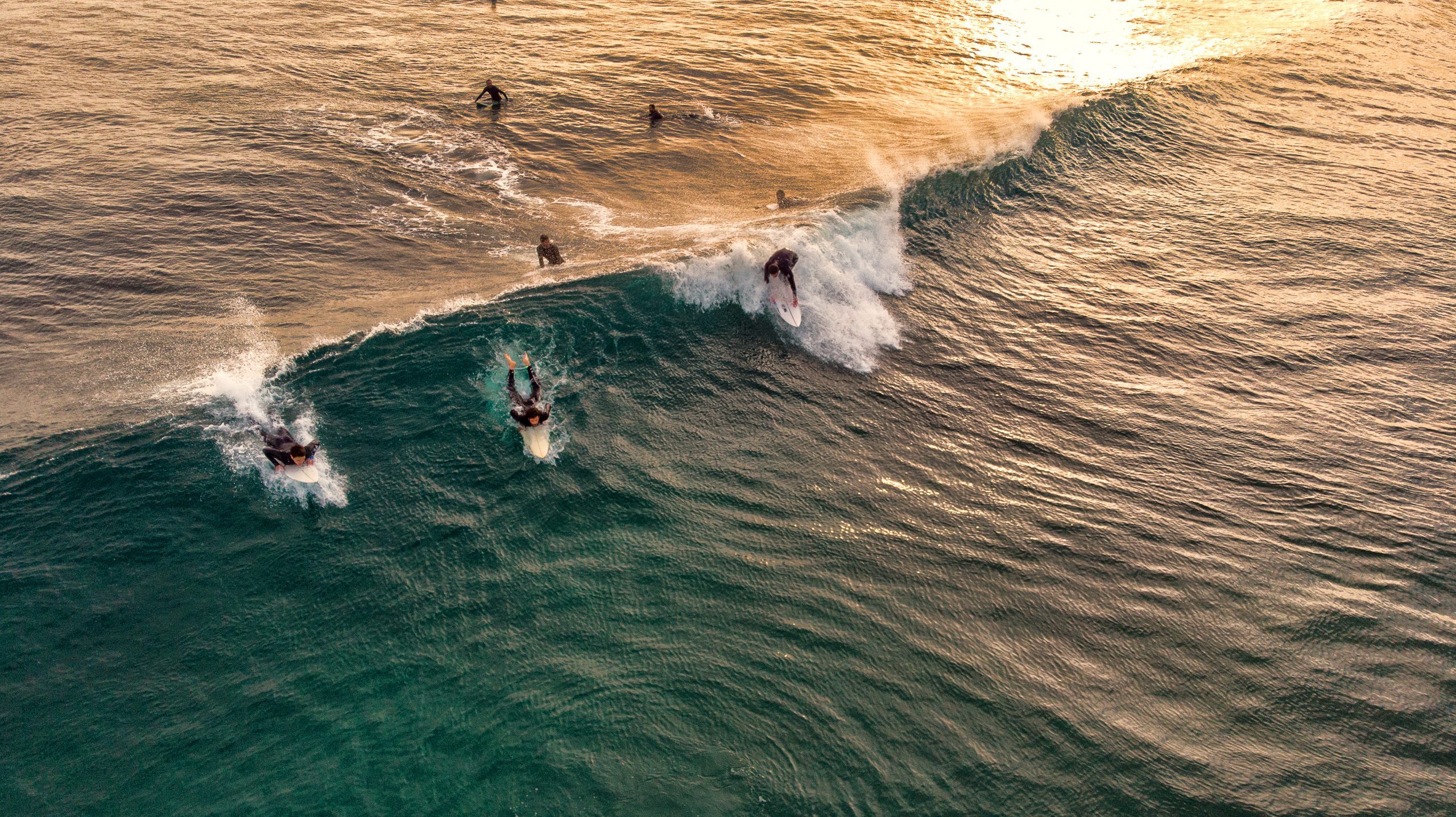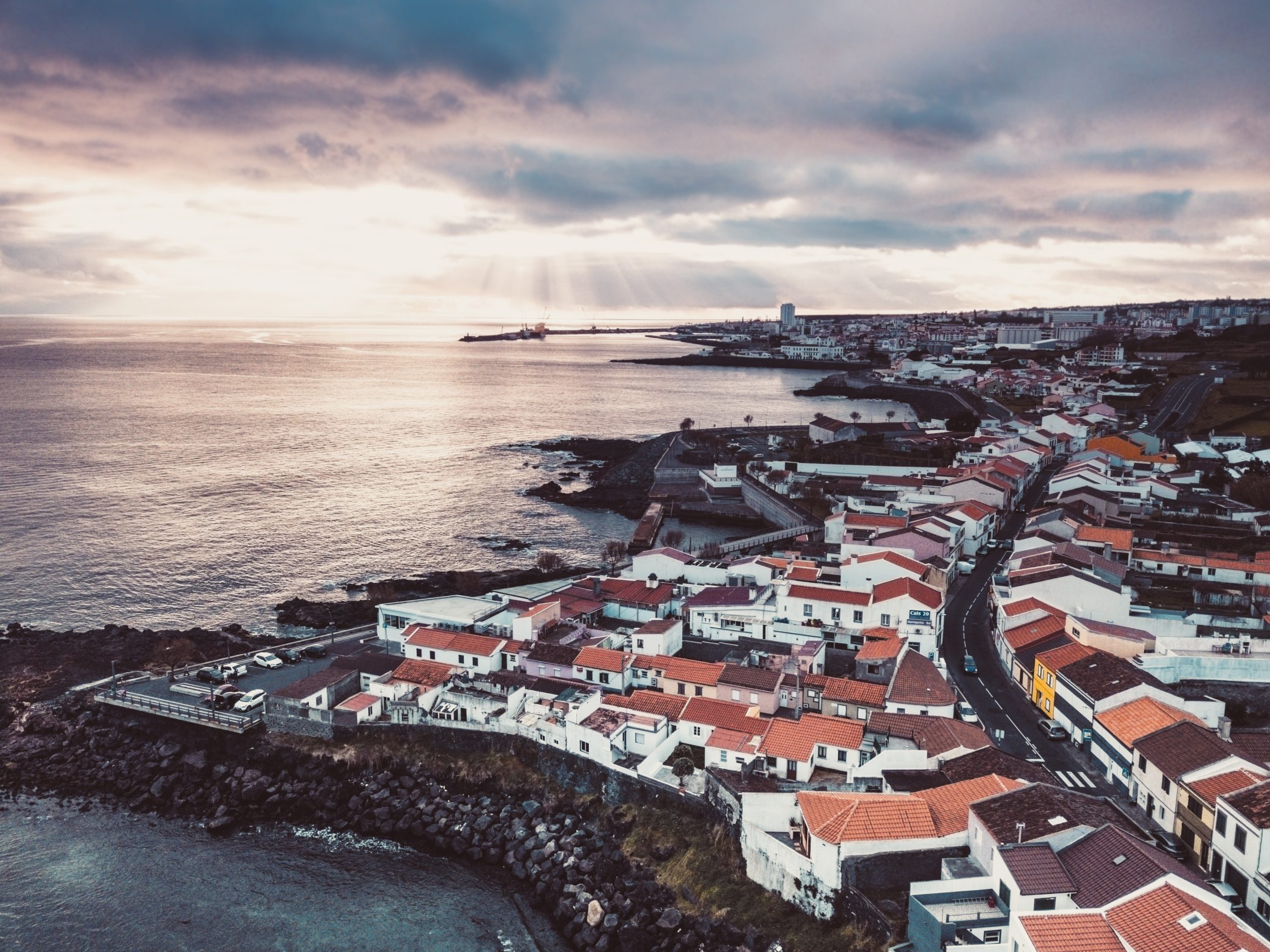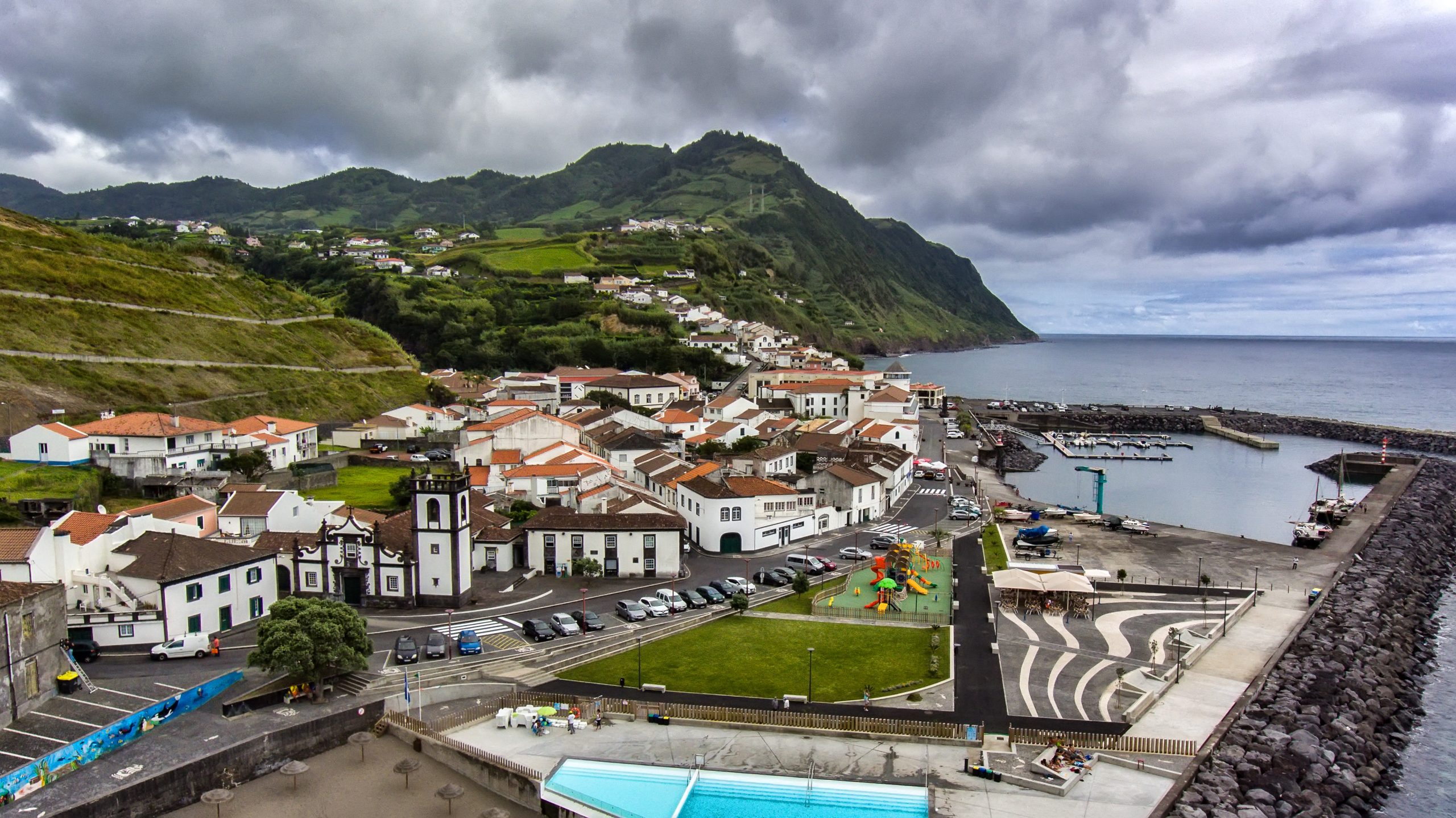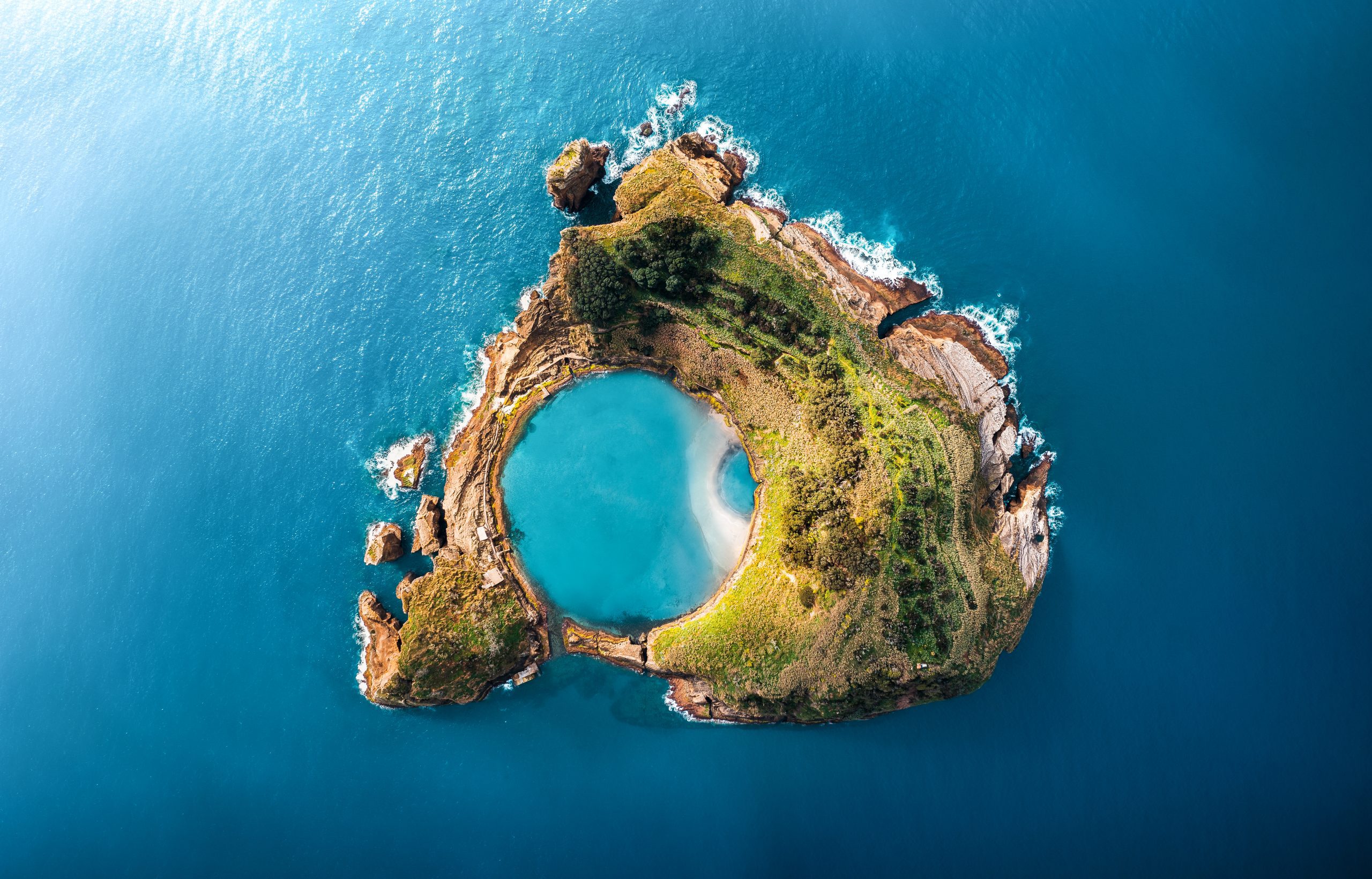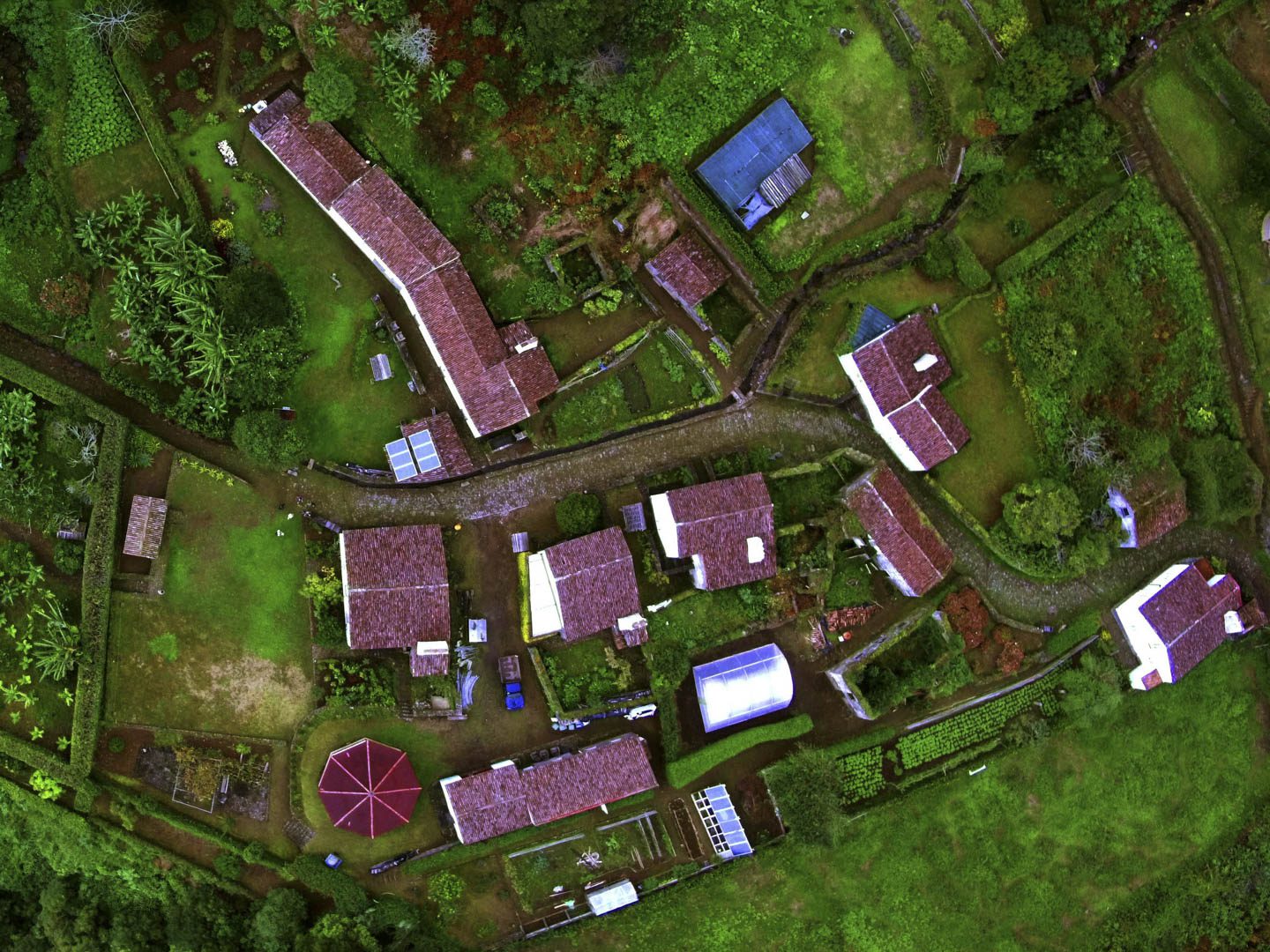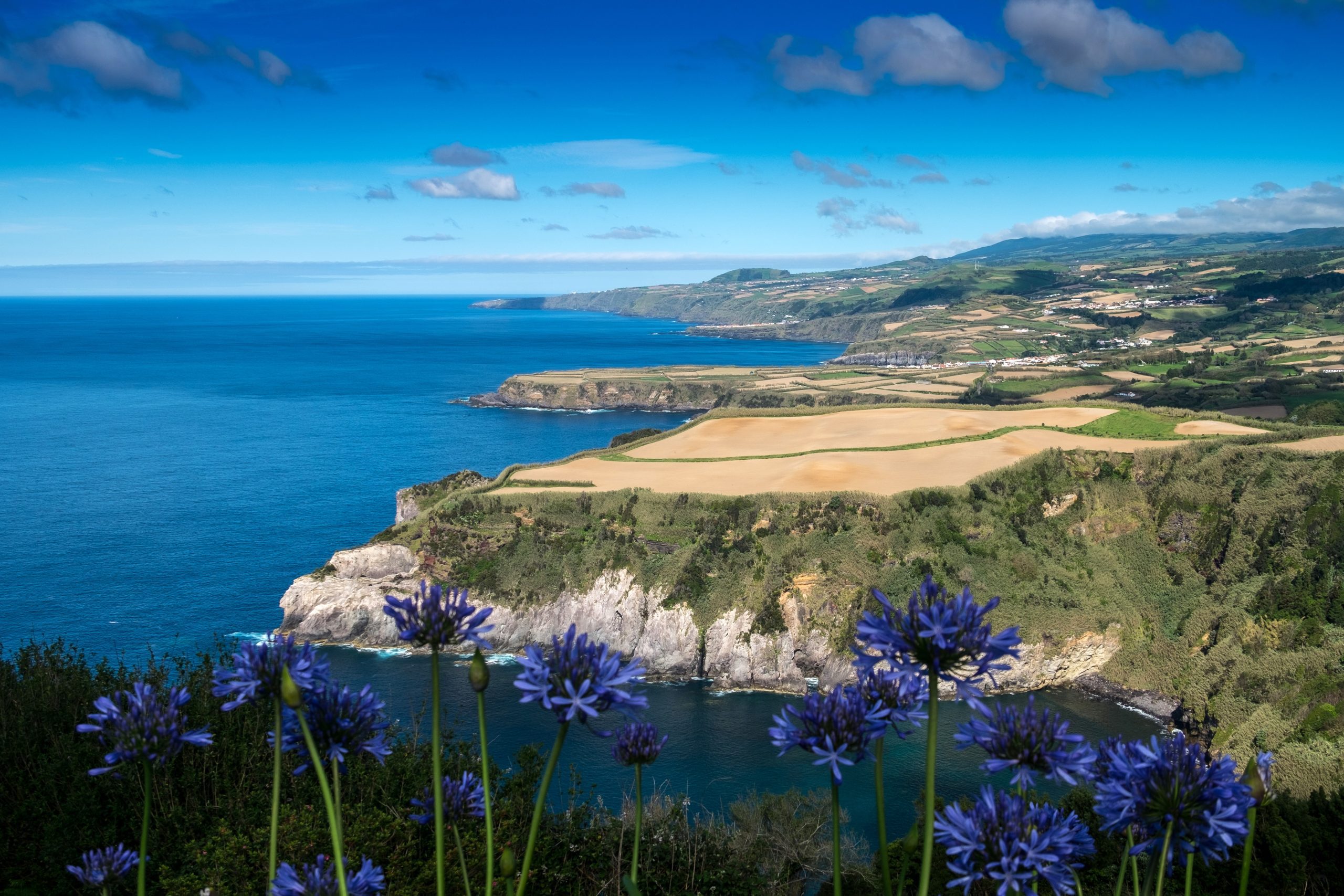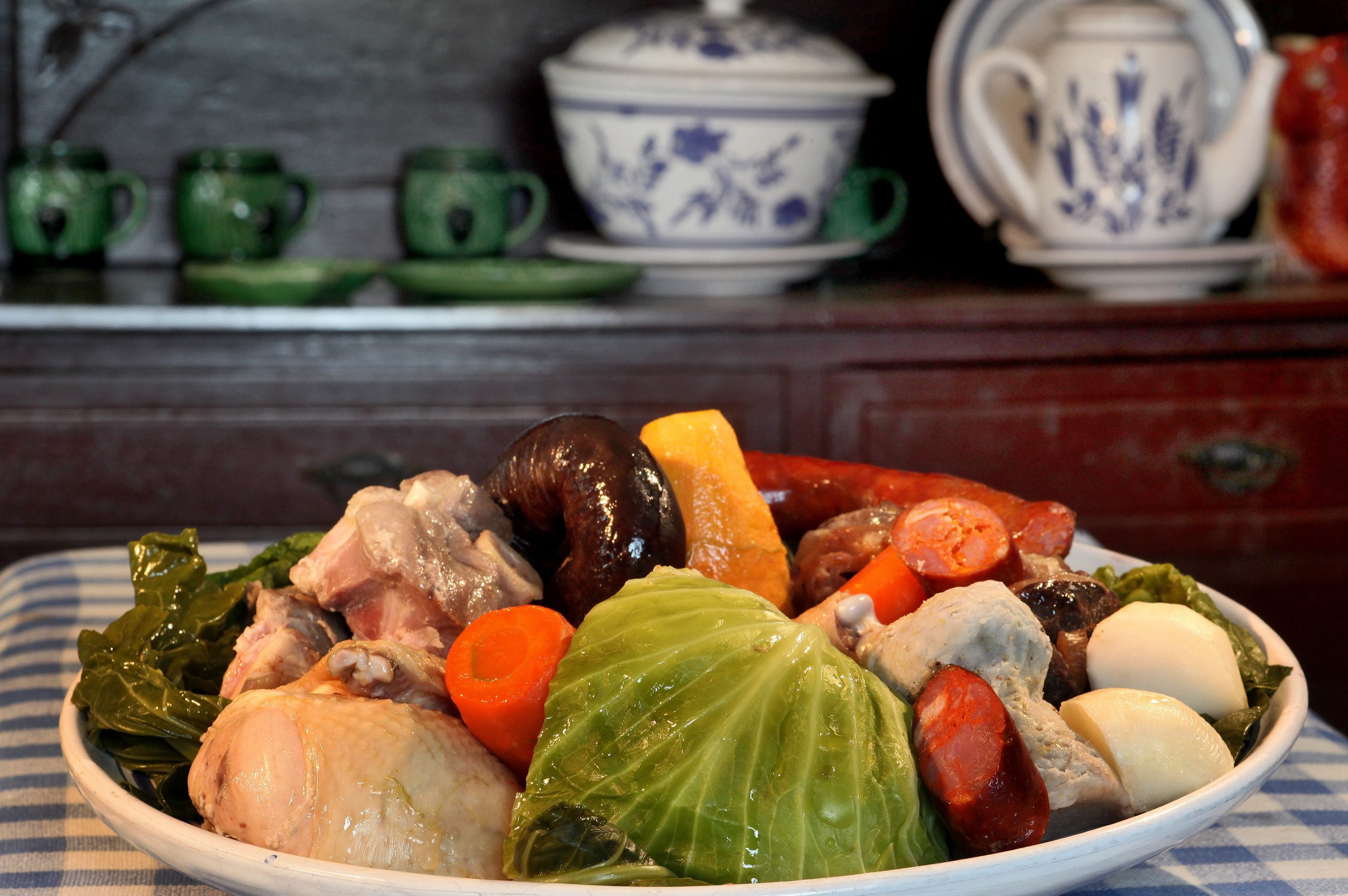Nestled inside a lush forest in the middle of São Miguel, Lagoa do Congro is not as famous as the other lakes on the island. Even though the access is harder, it is worth the trip!
Once you arrive at the lake, you are immersed in an all-green scenery, entering a real-life fairy tale. The peaceful silence and the pure nature give Lagoa do Congro a unique beauty.
In this post, discover everything about Lagoa do Congro, from its history to the best travel tips. We will explore how to reach this wonderful place, which offers fantastic landscapes perfect for photography enthusiasts.
What is Lagoa do Congro?

Lagoa do Congro is a hidden gem and one of the most beautiful lakes on São Miguel island. Almost perfectly round and with a perimeter of 1.25 kilometers, the lake is up to 16 meters deep. Despite not being on the typical tourist route, Lagoa do Congro is a special place that provides a genuine connection with nature.
The Origin of Lagoa do Congro

Lagoa do Congro is located in the volcanic massif of Achada das Furnas, part of the Fogo and Furnas volcanoes. It is one of the most active seismic areas of the Azores.
The lake is in a Maar-type crater, which is a broad and low-relief volcanic crater resulting from a Phreatomagmatic eruption. This type of eruption means that the magma interacted with water, producing big explosions. It is believed that the lake was formed about 3,900 years ago.
Lagoa do Congro is quite different from the other lakes of São Miguel. Most of them are at the top of a volcanic cone, while Lagoa do Congro is in a relatively flat area, inside a hole and surrounded by a lot of vegetation.
The name comes from a tribute to the old lake owner, André Gonçalves Sampaio, also called ‘O Congro’. Congro — in English, the European Conger — is a fish that lives in deep waters. After the former owner passed away, the lake was owned by two more families. They significantly changed the landscape, importing many peculiar plants, which explains why most of the vegetation is not endemic.
Furthermore, note that the lakes of this area get their water from torrential streams and three springs.
Fauna & Flora
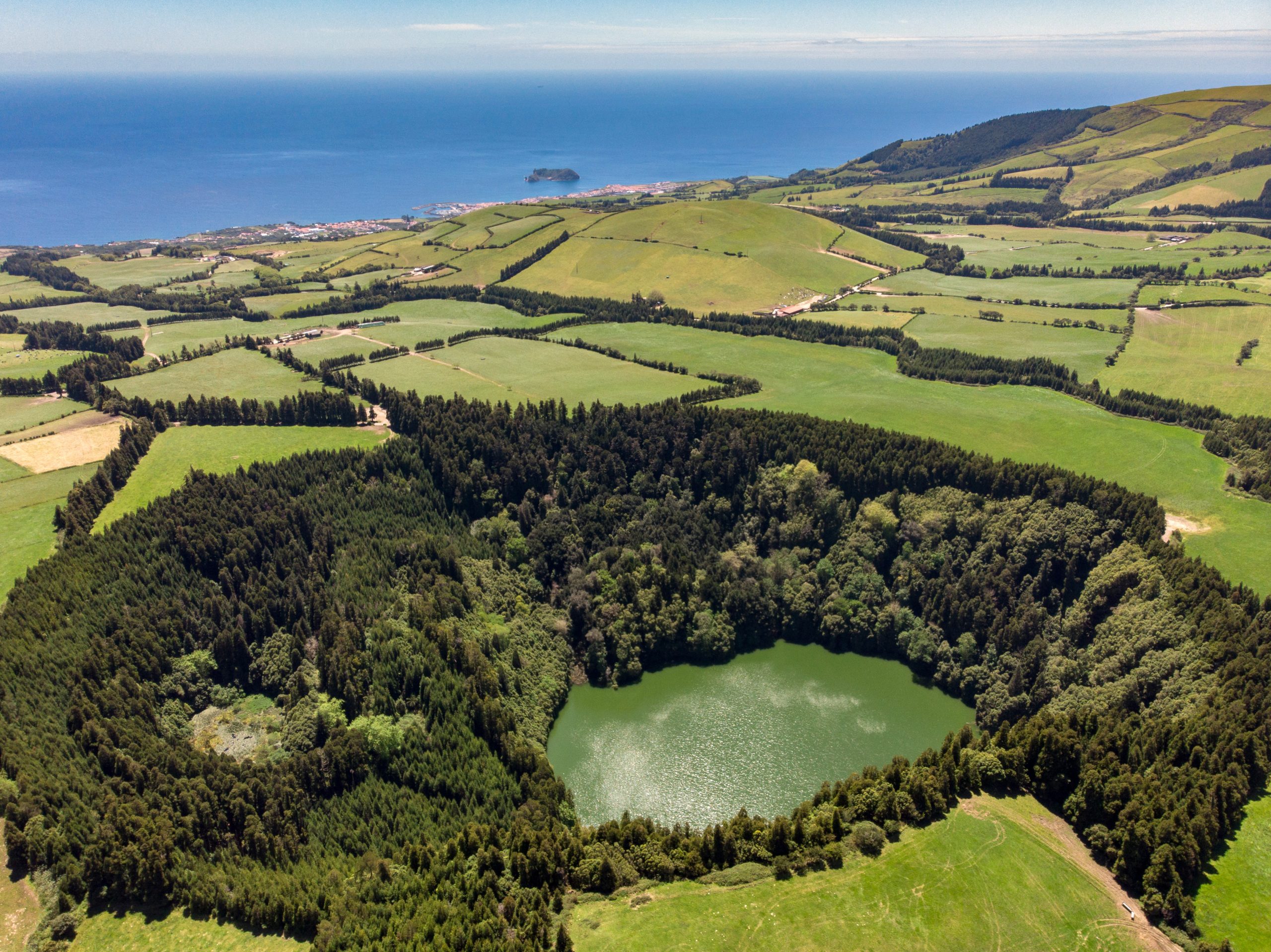
Lagoa do Congro is an area rich in biodiversity. About its flora, a lush forest surrounds the lake, hiding the walls of the volcanic crater. Among the dense vegetation, you can mostly see Kahili ginger, Sweet pittosporum, Eucalyptus, Azalea, Cryptomeria, and hydrangeas blooming in the summer. But you can also spot some plants from the Azores, like the Chain fern, the Royal fern, the Lysimachia azorica, the Azores juniper, and the Azores laurel.
Thanks to this abundant vegetation, there is also a lot of wildlife near Lagoa do Congro. First, birds:
- São Miguel goldcrests;
- Common buzzards;
- Grey wagtails;
- Azores wood pigeons.
Moreover, in the water, you can see lots of fish jumping. The different species of fish present in Lagoa do Congro evolved through time. In 1890, carp were introduced into the lake. Then, in 1941, it was the turn of the Rainbow trout. In 1986, goldfish were registered. But today, two species live in Lagoa do Congro: the carp (Cyprinus sp.) and the perch (Perca fluviatilis).
What to Do at Lagoa do Congro
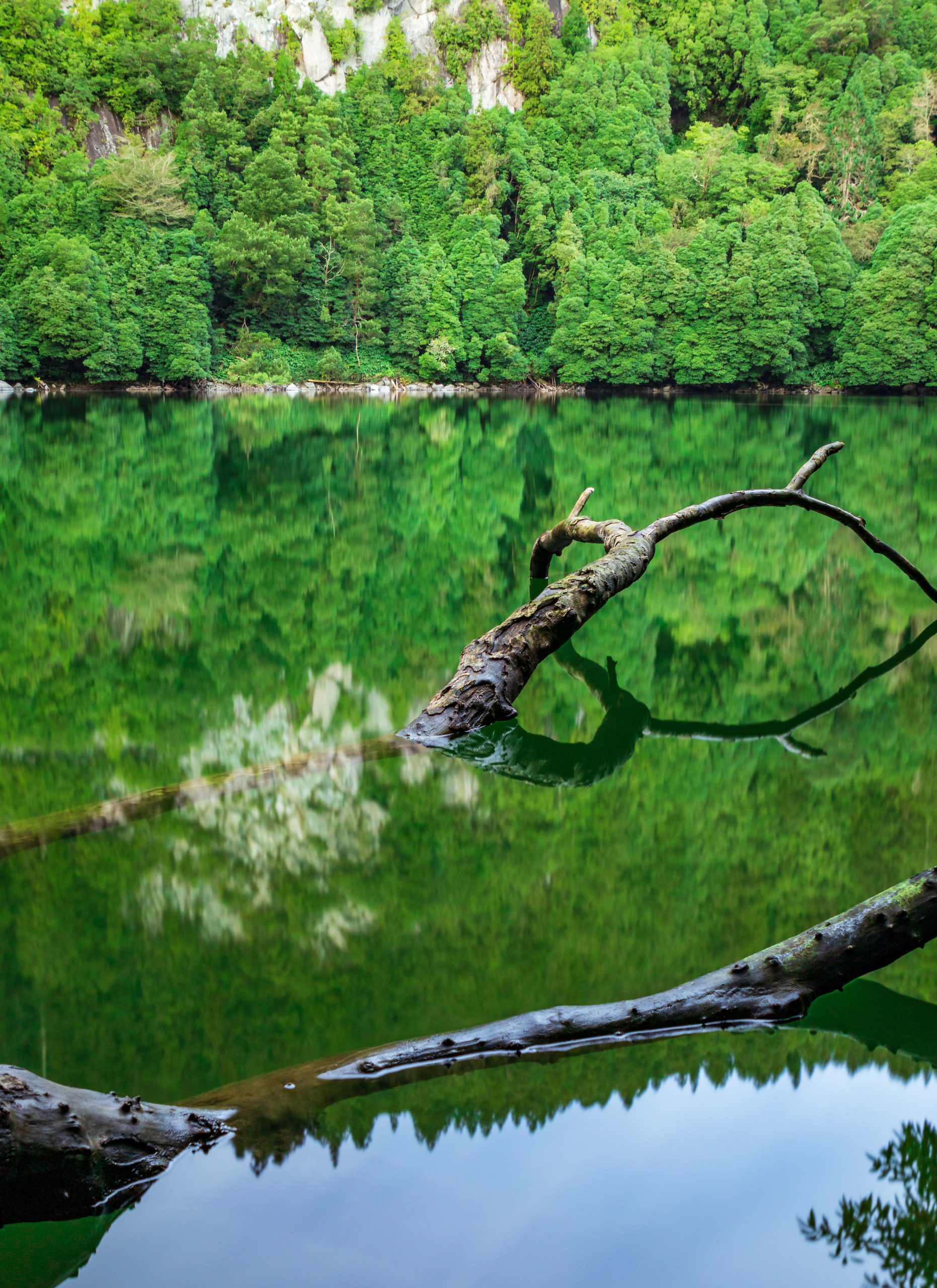
The good thing about Lagoa do Congro is that there are a few things to do at the lake. It is an excellent choice if you only have a few hours to spare in São Miguel. Since it is located in the central part of the island, it is practical to visit other places after exploring the lake.
Lagoa do Congro Hike
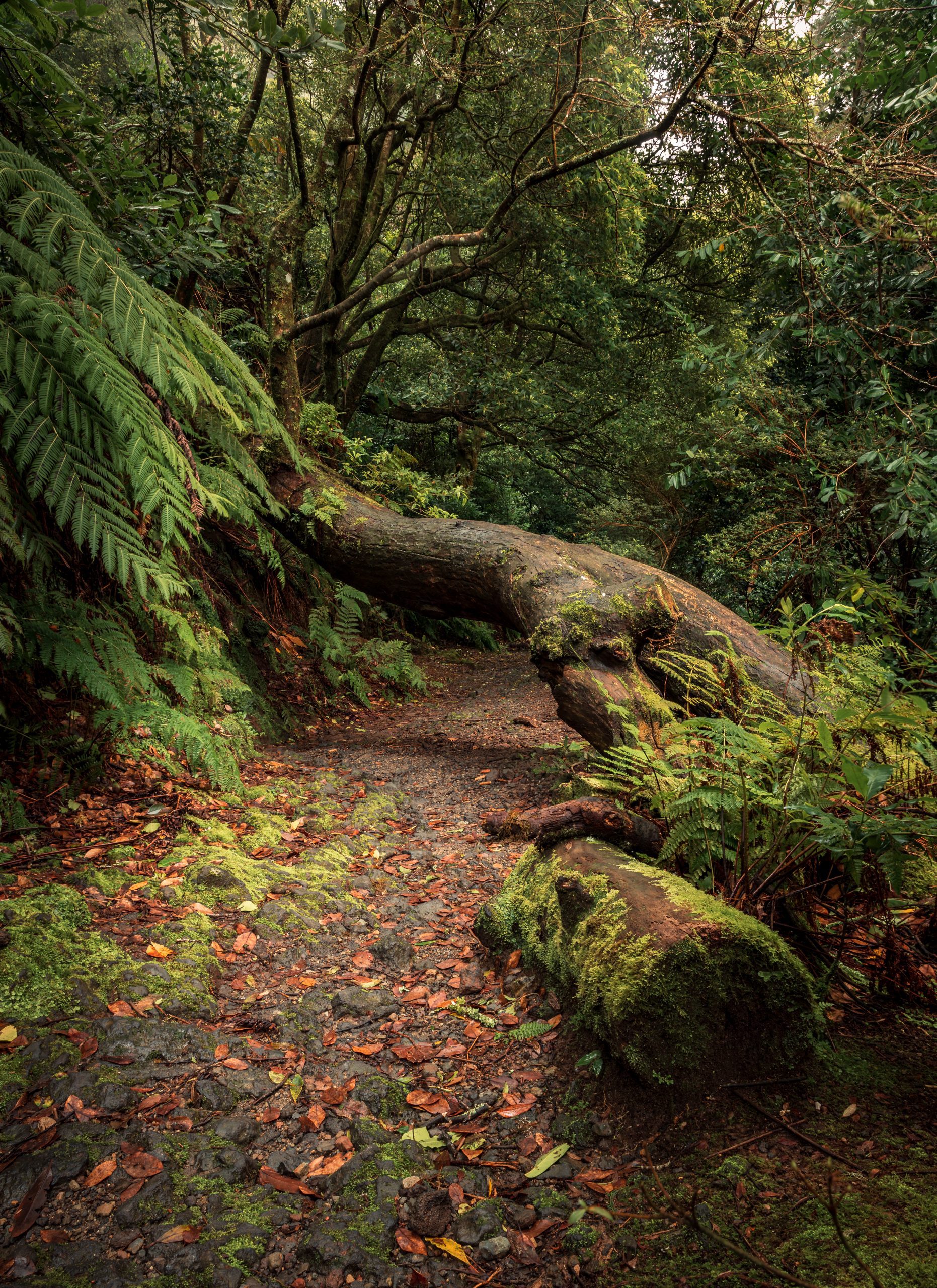
Once you arrive at the parking lot, there is still a short but steep hike through the forest to the lake shore. The path is about 700 meters long, but completely worth the walk.
Access is not as easy as it is in the middle of almost untouched nature, and it can also be very muddy depending on the weather conditions. You will go down for about 15 minutes, and then it is the same way back up. There is only one trail. On the way, you will find some fallen trees, but it is overall a clear trail. Count one hour in total for the hike down, enjoying the views of the lake, taking pictures, and, why not, taking a swim, and then hiking up back to the car.
There are several other trails around the area, but most of them are not clear and with harder access. You can also walk a bit around Lagoa do Congro’s shore, but the trail doesn’t have good indications.
Go to the Smaller Lagoa dos Nenúfares

The access is harder, and you can easily get lost or stuck in the mud if you don’t know the area. We advise always following the main trail and not going alone.
Did you know
Near Lagoa do Congro is a smaller, lesser-known lake called Lagoa dos Nenúfares (Water lilies lake).
It is a beautiful lake with water lilies, but the vegetation is quite wild, so it looks more like a swamp. Most visitors to Lagoa do Congro are unaware of the existence of another nearby lake, and few people walk this path.
Best Time to Visit
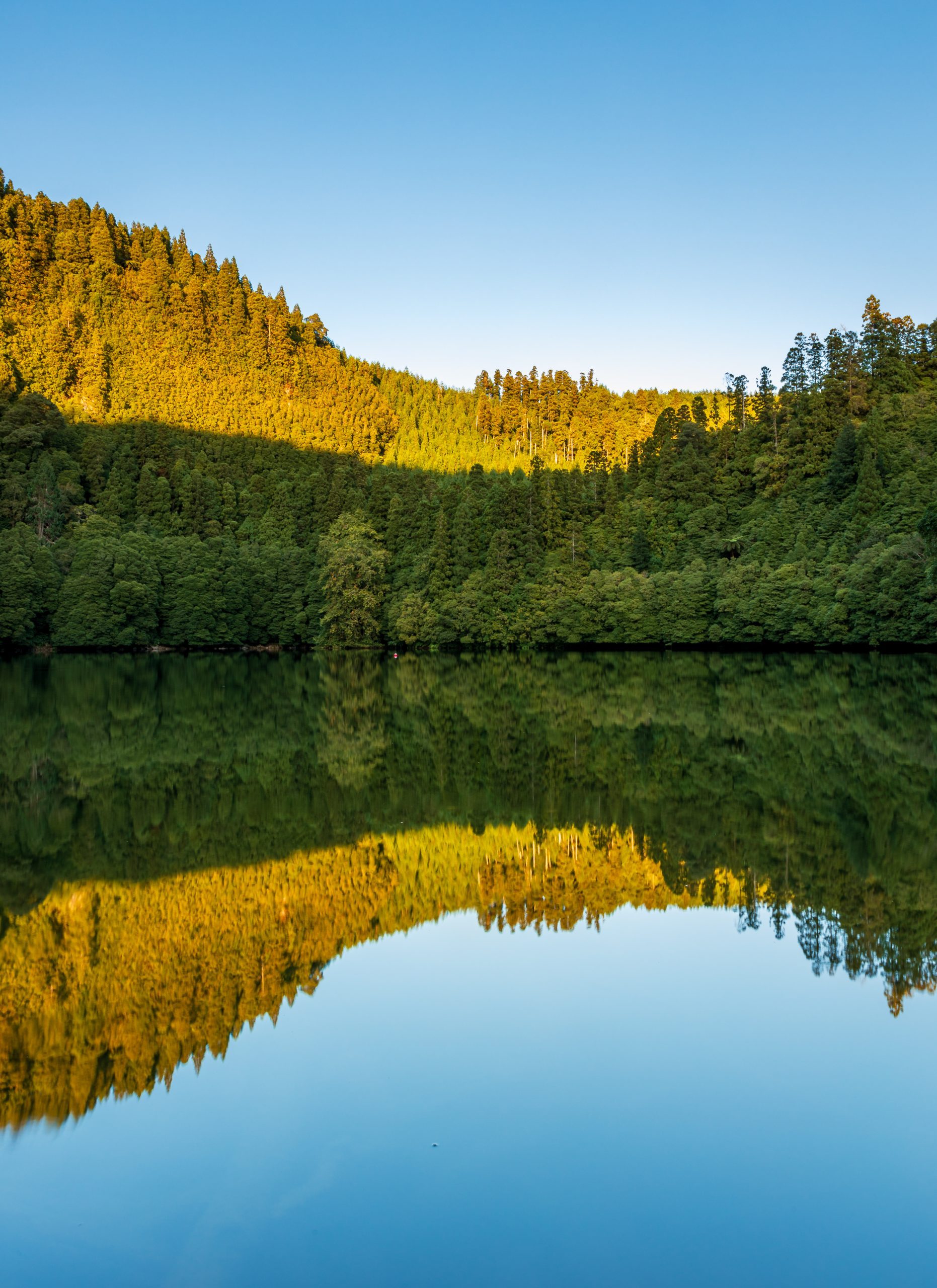
Short answer: Lagoa do Congro is a good place to visit at any time of the year and at any time of the day. But let’s see the differences between the seasons and the hours.
Best Season of the Year

Summer is when you have more chances of a sunny day, so if you don’t like the rain, this is your best bet to get better weather. Furthermore, in June, hydrangeas bloom, adding shades of blue to the green landscapes.
However, during the summer, the islands are filled with visitors. Parking lots get full, and the tourist spots can be crowded. Luckily, Lagoa do Congro is not a typical tourist place. But even so, if you want the lake for yourself, you might want to come in the wintertime.
Our winter in the Azores is not like winter on the mainland. Temperatures are consistently positive, with slight variation between summer and winter.
Best Time of the Day

If youare visiting during the summer, consider arriving early or late in the afternoon to enjoy the place with fewer people. Otherwise, you can also opt to stay longer at the lake and have a picnic there. It’s a great place to take a break and enjoy the sounds of nature.
For photography lovers, the morning lights at Lagoa do Congro are exceptional. Golden hour is when the sun shines on the lake, creating a unique atmosphere with the deep green landscape.
Plan Your Visit to Lagoa do Congro
Now, let’s see how to get to Lagoa do Congro and the best tips from a local perspective for enjoying a great time at one of the most beautiful lakes of São Miguel island.
How to Get to Lagoa do Congro

Lagoa do Congro is located in the county of Vila Franca do Campo, south of São Miguel island. It is only a few kilometers from the city of Vila Franca. Follow the road towards Furnas and the signs to Lagoa do Congro from this town.
Then, you will find a dirt road on your left. You will drive about 1 kilometer to the parking lot area, where you will stop before walking down to the lake. The starting point of the hike is indicated with a sign.
The trail down is about 700m long, and it takes about 15 minutes to arrive at the lake through the enchanted forest.
The best way to Lagoa do Congro is by car, as there is no public transportation. You can also take a taxi from Ponta Delgada. Check here for the GPS point for the entrance of the dirt road to Lagoa do Congro’s parking lot.
Pro Tips
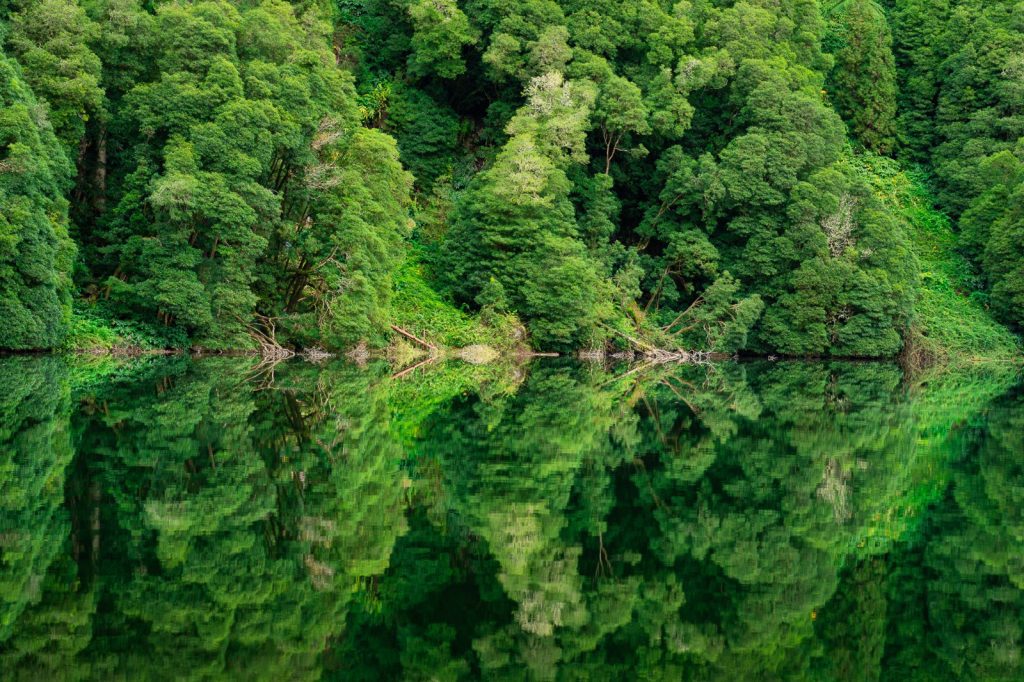
To preserve nature, please respect the marked trail and stay on the main path. This way, you won’t destroy the vegetation.
You should bring proper hiking shoes with a good grip, as rain on the days before your visit can make the path muddy and very slippery.
Finally, as the lake is surrounded by lush vegetation, there are few lights. So, we recommend going before nightfall for your safety on the trail.
Check all our articles about each one of the most relevant points of interest in Vila Franca do Campo: Vila Franca do Campo | Ermida de Nossa Senhora da Paz | Ilhéu de Vila Franca | Praia da Amora | Praia da Vinha da Areia | Praia de Água D’Alto | Lagoa do Congro | Lagoa dos Nenúfares | Miradouro do Castelo Branco
Nearby Attractions
Lagoa do Congro is located right in the middle of São Miguel Island, so there are many spots of interest around. Let’s look at some of the best options for spending a great day on Green Island.
Ilhéu de Vila Franca

The Vila Franca do Campo Islet is probably the best beach on São Miguel Island. It is an old submarine volcano with crystal-clear waters in its crater, where you can swim and snorkel. For preservation purposes, this wonder of nature is open only from June to October.
If you visit the island outside the high season, you can still visit Vinha da Areia Beach in Vila Franca do Campo. The black-sand beach is ideal for relaxing when the sun is shining.
👉 Post related: Best Beaches in the Azores Islands. Read more!
Miradouro do Castelo Branco

Miradouro do Castelo Branco is a small white tower that nowadays is an excellent viewpoint over the south coast of São Miguel island with Ilhéu de Vila Franca and the Atlantic Ocean. It also looks over the valley of Furnas and its lake.
You can enter the tower and climb onto the rooftop for an incredible view. It is a mandatory stop when going to Furnas’s geothermal paradise.
Check all our articles about each one of the most relevant points of interest in Furnas: Caldeiras das Furnas | Furnas | Capela da Nossa Senhora das Vitórias | Castelo Branco Viewpoint | Lagoa das Furnas | Lagoa das Furnas Viewpoint | Mata-Jardim José do Canto | Parque Terra Nostra’s Thermal Pool | Pico do Ferro Viewpoint | Poça da Dona Beija | Ribeira Quente | Praia do Fogo | Salto do Cavalo Viewpoint | Salto do Rosal | Terra Nostra Garden
Enjoy Furnas’s Hot Springs

If the weather is not too hot or it is raining, consider visiting Furnas, home to two idyllic hot springs.
Terra Nostra Park is one of the most dreamy hot springs. Situated inside a botanical garden, it offers a giant orange pool and two other smaller ones surrounded by vegetation.
Poça da Dona Beija is excellent at night. You can relax in the hot waters naturally provided by our active volcanic activity. Take a dark swimsuit because the orange waters can stain transparent fabrics.

Complementary Information
Best Season to Visit the Azores
The Azores Archipelago boasts a unique climate that shapes its lush landscapes, making it a splendid year-round destination. With mild temperatures and minimal fluctuations, each season offers something unique. Spring averages 16 °C, summer reaches 21 °C, autumn cools to 18 °C, and winter remains mild at 14 °C.
→ For a detailed breakdown of the weather by month, check the following links 🌤️☔️: January | February | March | April | May | June | July | August | September | October | November | December
How to Get to the Azores
The Azorean Archipelago is easily accessible through numerous flight routes. Lisbon and Porto are the main entry points to the continent, with direct flights available to São Miguel (PDL), Terceira (TER), Faial (HOR), Pico (PIX), and Santa Maria (SMA). To find the best flight, use search engines like eDreams or Skyscanner. These platforms let you compare prices and schedules from multiple airlines in one convenient location.
For more details on how to get to the Azores, take a look at our complete guide. But what if you want to explore beyond your arrival island? We’ve got you covered!
- Azores airports 🛬
- Flights between islands ✈️
- Ferries between islands ⛴️
- Which island to choose? 🏝️
- What airlines fly to the Azores? 🛩️
→ Once you’ve found the perfect route, book your tickets and get ready to experience one of the world’s most stunning island groups!
Travel Essentials
Essential Information for your Azores trip: Azorean Language & Phrases 🗣️ | Currency & Banks 💵 | Credit Cards & Traveler’s Cheques 🏧 | Driving in the Azores 🚗 | Electricity 🔌 | Experiences & Tours 🗺️ | Health & Safety 🩺 | Internet & Wi-Fi Access 🛜 | Phones & Mobile Service 📞 | Post Offices & Buying Stamps ✉️ | Public Holidays 🏖️ | Shopping 🛒 | Time & Daylight 🕒 | Whale Watching Guide 🐳 | Best Island to Visit 🏞️
Useful Tools & Apps
The weather in the Azores can be variable, so it’s helpful to use some apps before visiting the islands. Spotazores provides live camera feeds from the main tourist attractions, allowing you to check the weather and plan your visit. For accurate weather predictions, use Windy or Windguru — they provide the most reliable predictions.
Video
Conclusion
So, as you can see in this post, Lagoa do Congro is a detour that is worth it. Despite not being on the typical tourist to-do list on São Miguel island, the lake and its singular beauty are the perfect place for those searching for a different experience, where few visitors go.
Because its access is more difficult than that of other touristy places, the nature around Lagoa do Congro is well-preserved and even inaccessible to some secondary trails. It is a quick escape from the city, providing a peaceful moment surrounded by beautiful nature. This is the ideal place to go for people with a stopover in Ponta Delgada.
Authors’ Note
I am pleased to inform you that all the recommendations in this article are based on my personal experience and observations. As the author, I have personally visited each attraction mentioned, ensuring that every suggestion is grounded in first-hand knowledge and genuine enthusiasm.
FAQs
Lagoa do Congro is a crater lake on São Miguel Island, Azores. It is known for its serene environment, surrounded by dense forest, offering a tranquil retreat into nature.
Lagoa do Congro is named after the presence of the fish known as “Congro” (conger eel), which historically inhabited its waters. The name directly references the local fauna that once included this fish species.
Lagoa do Congro can be accessed by car from Ponta Delgada, which takes approximately 30 minutes. A scenic forest trail leads from the parking area to the lake, and the walk is short.
Lagoa do Congro is located near Vila Franca do Campo on São Miguel Island, Azores. You can find out more about its location on Google Maps.
Photo Gallery


